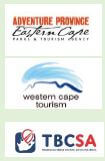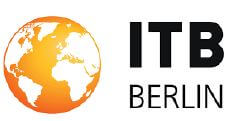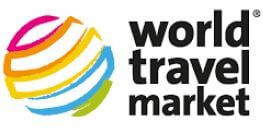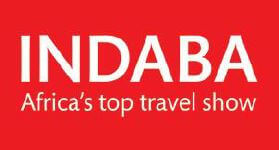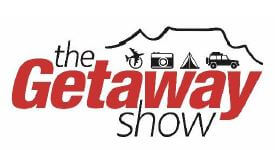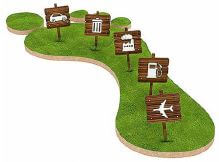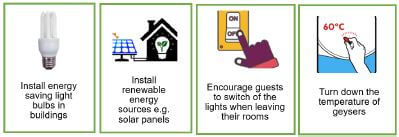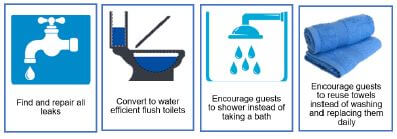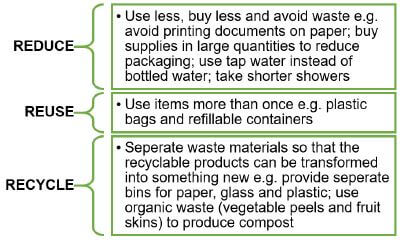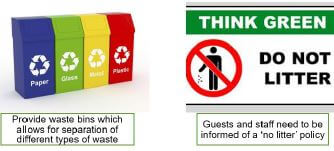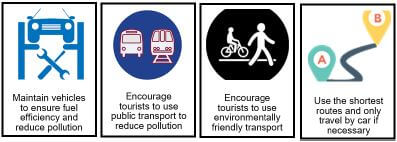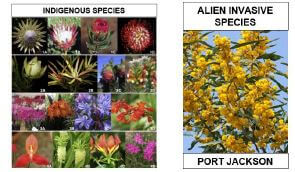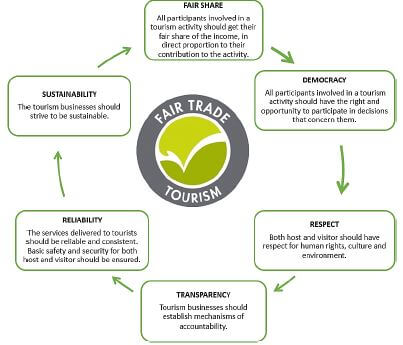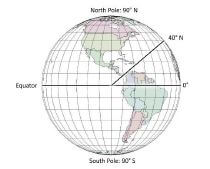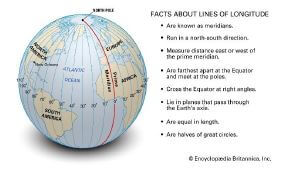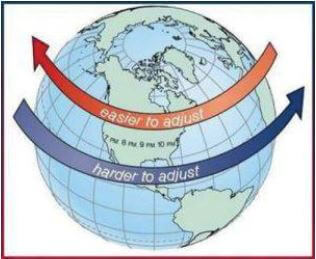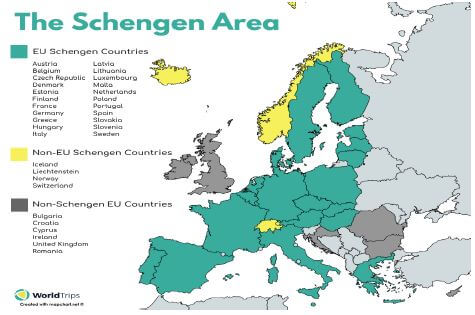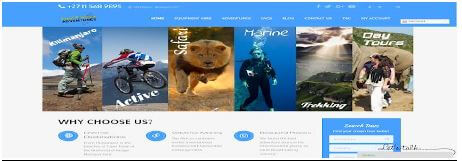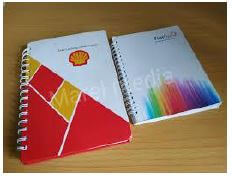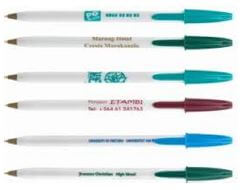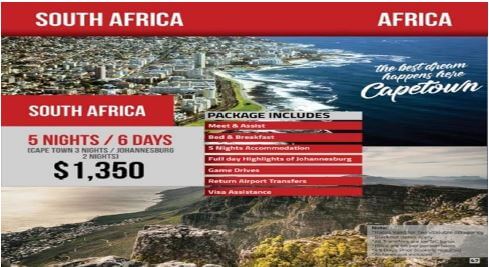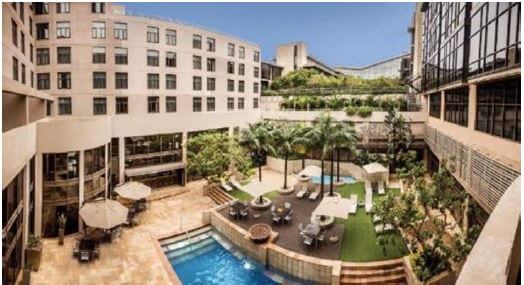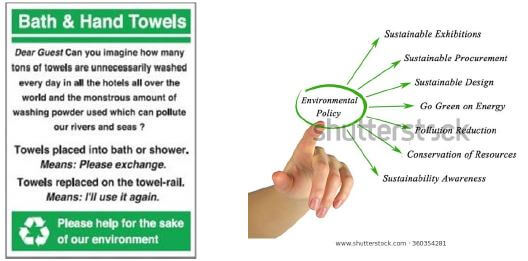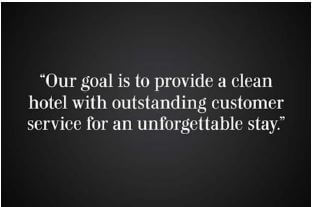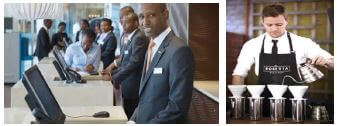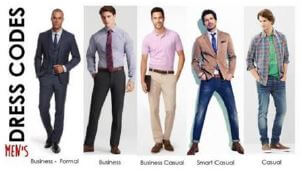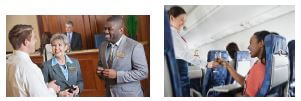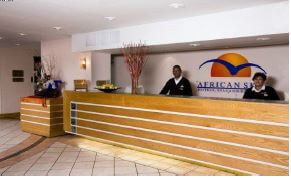Adele
Marketing South Africa as a Tourism Destination Grade 12 - Tourism Grade 12 Study Guide
Topic: Marketing
Content: Marketing South Africa as a tourism destination
| The importance of marketing South Africa internationally |
| |||
The core business of SATourism
|
| |||
| Opportunities for marketing SA internationally |
| |||
|
| |||
| Funding for SATourism’s international marketing initiatives: the role of Tourism Marketing Levy South Africa |
| |||
The concept: branding South Africa’s brand logo |
| |||
| Introduction to the Tourism Indaba travel trade show and the Getaway show as opportunities to promote South Africa and the southern African region to the world |
| |||
|
Travel Documentation Grade 12 - Tourism Grade 12 Study Guide
TRAVEL DOCUMENTATION
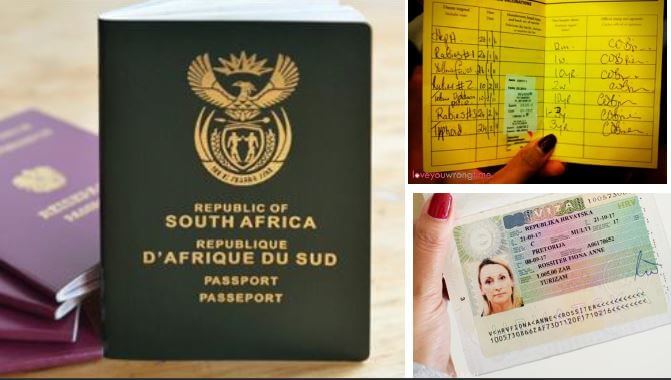
PASSPORT
- Issued by a national government for international travel.
- Certifies the identity and nationality of the holder.
Regular tourist passport: 32 pages
Maxi tourist passport: 48 pages for frequent travellers.
The E-Home Affairs system Launched in 2016. South Africans apply and pay for their passport on the Home Affairs website.
Collect passport at Home Affairs office or the nearest supported bank that offers a Home Affairs Live Capture Service.
Applicants to provide biometric authentication to receive their documents.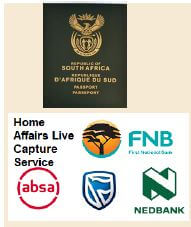
Tourist passports:
16 years and older (valid 10 years)
15 years or younger (valid 5 years)
Passports cannot be renewed. Re apply after expiry date
South African passports include the following information:
- A photo of the passport holder
- Type of passport
- Issuing country
- Passport number
- Given names and surname of the passport holder
- Nationality of the passport holder
- Gender of passport holder
- Birth date
- Birth place
- Issue date
- Expiry date
South Africa: discontinued temporary passports – apply for emergency travel certificate (ETC) – not accepted by all countries
TYPES OF PASSPORTS
- Tourist: Regular of Maxi passports
- Official passports
- Diplomatic passports
- Crew Member Certificates
APPLY IN PERSON
- Verify identity
- Photograph is a true image
- Fingerprints taken & checked against the National Population Register (people 16 years or older)
YOU WILL NEED
- Passport application Form DHA-73
- identity document
- two coloured photos
- fingerprints be taken (Biometrics)
- Cost: R400
HEALTH CERTIFICATES
Travel Clinics, Doctors, Hospitals, Airport Clinics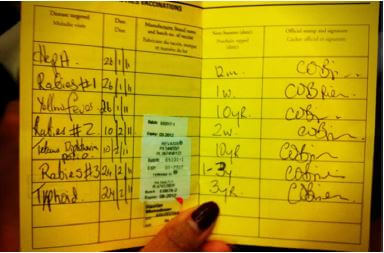
Cost of a yellow fever vaccine in South Africa is about R 350.00 - excluding the consultation fee.
THE PROCESS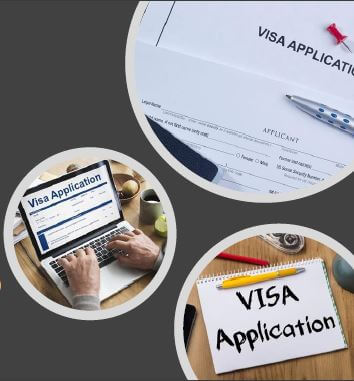
- Decide on the destination
- Book travel & accommodation
- Apply for a passport at Home Affairs
- Apply for a visa (if required)
- Buy travel insurance
- Appear in person for visa consultation
VISAS OPTIONS
SHORT TERM / LONG TERM VISA
up to 6 months / longer than 6 months
TYPES OF SHORT TERM VISAS
TOURIST VISAS - from R3200 (e.g. UK)
TRANSIT VISA - from R1200
SCHENGEN VISA - from R1100
WHAT IS NEEDED FOR A VISA APPLICATION?
As a minimum:
- fully completed and signed visa application form (usually on line)
- two recently taken passport photographs
- a valid passport with more than three months left until it expires, and older passports with past visas (if applicable)
- an itinerary of your trip
- flight details
- proof of accommodation / invitation letter from the people you are visiting
- Letter from the employer
- Proof of civil status (e.g. marriage certificate)
- 3 months’ bank statements
- Proof of travel insurance
- Proof of visa payment
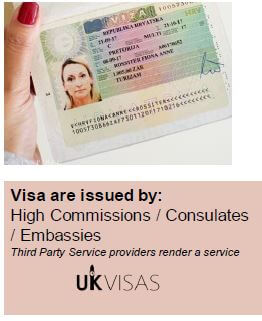
APPEAR IN PERSON FOR VISA CONSULTATION
THE VISA APPLICATION FOR VISITING THE UK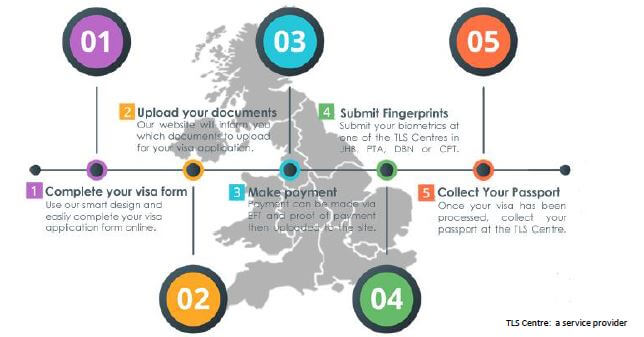
INTERNATIONAL DRIVING PERMIT (IDP)
An International Driving Permit can only be obtained from the country where you obtained your driving license.
AA-SA can only issue IDPs to holders of a valid South African issued driving license.
IDP is a legal travel document regulated by the United Nations. It contains your name, photo and driver information in several languages – so it is
understandable to authorities of almost 150 countries.
Documents needed to apply for an IDP
Valid South African driving license.
South African ID
One passport size photograph
https://www.aa.co.za/travelcol-1/international-driving-permit
IDPs are issued by the Automobile Association of South Africa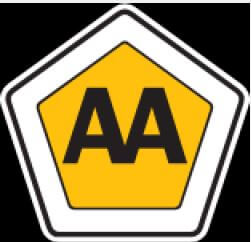
KEY FACTS ABOUT INTERNATIONAL DRIVING PERMITS
An IDP is not a stand-alone document or a substitute for a valid driving license – the South African driving license must be carried with the IDP.
IDPs do not diminish the driver’s obligations to conform to the laws and regulations of the countries visited. The validity of the IDP can never exceed the validity of your domestic driving license
IDPs can only be issued to people over 18 years of age. IDPs cannot be issued to people who hold a learner driver permit. An IDP is a helpful form of identification, even if you do not intend to drive when you travel abroad.
IDPs are officially sanctioned by the United Nations and accepted worldwide (in over 150 countries) as a recognisable form of identification.
IDPs allow you to carry your identification details in several different languages (English, Spanish, Russian, Chinese, Italian, German, Arabic and French, among others) in case you need to communicate with foreign authorities.
An IDP gives you an extra form of photo ID along with your personal details (this can be useful if you are ever asked to surrender your passport, which can happen under certain circumstances in some countries). 
LEGISLATION
All incoming travellers, including the captains and crew members of airlines, and their baggage to be cleared by Customs before they can enter South Africa.
GENERAL RULE
As with other imported goods, the general rule is that goods are entered for home consumption and duty is payable. Each person entering South Africa must therefore declare the goods in their possession
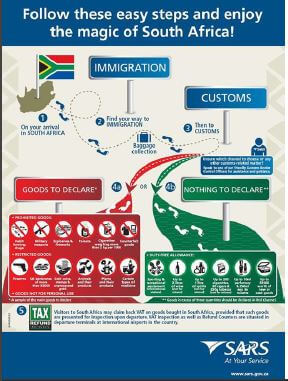

Larger international airports and land ports of entry: a red and a green channel system. Random declarations
Smaller airports and land ports of entry: single Customs control point – all travellers to declare
Customs Officers may at any time request a traveller to answer questions relating to the goods obtained and in their possession. Searches of baggage, luggage, carriers, vehicles and search of person may be conducted.
PROHIBITED GOODS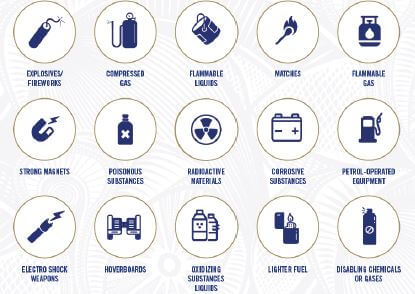
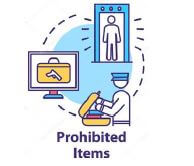
PROHIBITED GOODS VS RESTRICTED GOODS
PROHIBITED GOODS are never allowed to enter or exit South Africa under any circumstances
RESTRICTED GOODS are allowed to enter or exit South Africa only in certain circumstances or under certain conditions.
Prohibitions and restrictions: not limited to goods carried by travellers, but all modalities of transport (road, rail, air, sea, post or other), in any form of package or packaging they are imported or exported.
RESTRICTED GOODS
Currency
South African bank notes in excess of R25 000; foreign currency above $10 000; gold coins; coin and stamp collections; and unprocessed gold.
Endangered plants and animals
Species of plants or animals that are listed as endangered, whether they are alive or dead, as well as any parts of or articles made from them.
Food, plants, animals and biological goods
All plants and plant products, such as seeds, flowers, fruit, honey, margarine and vegetable oils. Also animals, birds, poultry and products thereof, such as dairy products, butter and eggs.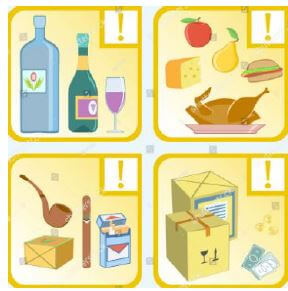
Medicines
You are allowed to bring in one month’s supply of pharmaceutical drugs or medicines for your personal use. Any other medicines must be accompanied by a letter or certified prescription from a registered physician, and have to be declared.

The limit in South African bank notes tourists are allowed to carry with them when leaving or entering SA: R25 000
Consumable Goods
The limit on consumable goods that inbound tourists may bring into South Africa
200 cigarettes | 20 cigars | Combined 250 gram pipe and / or cigarette tobacco | 2 litres of wine | 1 litre of other alcoholic beverages (including beer) | 250 ml eau de toilette | 50 ml perfume
Travel allowance:
The amount a traveller may take out of the country in one year determined by Treasury.
R1 million per year per adult (person older than 18) / Children under 18 - R200 000 per year
https://www.resbank.co.za/en/home/what-we-do/financial-surveillance/FinSurvFAQ
COVID-19 TRAVEL

All INBOUND international travellers must provide a valid certificate of a negative COVID-19 test, recognised by the World Health Organisation, which
was obtained not more than 72 hours before the date of travel.
Failure to submit, the must do an antigen test on arrival at his or her own cost. If testing positive for COVID-19, isolate him or herself at his or her own
cost, for a period of 10 days.
UPDATE
Adjusted alert level 1: Air travel [Gazette 44208, 1 March 2021]
International scheduled operations and charter flights carrying passengers are allowed at the following airports:
- OR Tambo International Airport;
- King Shaka International Airport; and
- Cape Town International Airport. [Catering only on international flights / masks compulsory]
Long-haul flight departures and landings - permitted during curfew hours.
Passengers must present evidence of a flight ticket when stopped by law enforcement officers during curfew hours.
Culture and Heritage Grade 12 - Tourism Grade 12 Study Guide
Topic: Culture and Heritage
Content: World Heritage Sites
| Concept: World Heritage Site |
| |||||||||||||||||||||||||||||||||
| UNESCO: logo | 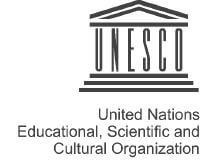 | |||||||||||||||||||||||||||||||||
| The role of UNESCO: main function |
| |||||||||||||||||||||||||||||||||
| Types of World Heritage Sites |
| |||||||||||||||||||||||||||||||||
| World Heritage Sites in South Africa | Free State and North West
| |||||||||||||||||||||||||||||||||
| Location of World Heritage Sites on a map of South Africa | 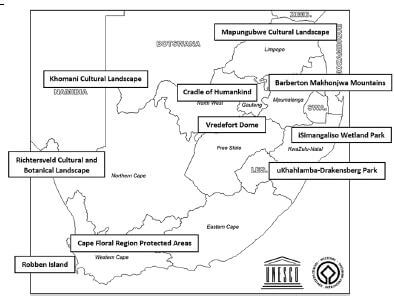 | |||||||||||||||||||||||||||||||||
| Description of each WHS in South Africa and how they meet UNESCO’s criteria | ||||||||||||||||||||||||||||||||||
Cradle of Humankind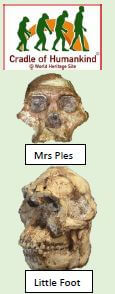 |
| |||||||||||||||||||||||||||||||||
Robben Island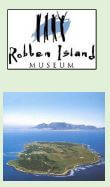 |
| |||||||||||||||||||||||||||||||||
iSimangaliso Wetland Park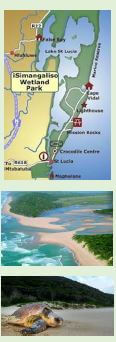 |
| |||||||||||||||||||||||||||||||||
uKhahlamba Drakensberg Park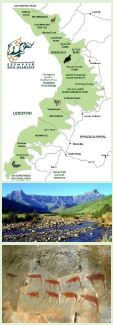 |
| |||||||||||||||||||||||||||||||||
Mapungubwe Cultural Landscape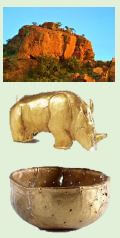 |
| |||||||||||||||||||||||||||||||||
Cape Floral Region Protected Areas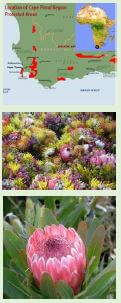 |
| |||||||||||||||||||||||||||||||||
Vredefort Dome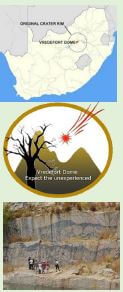 |
| |||||||||||||||||||||||||||||||||
Richtersveld Cultural and Botanical Landscape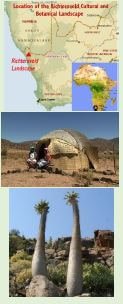 |
| |||||||||||||||||||||||||||||||||
Khomani Cultural Landscape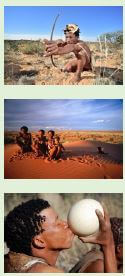 |
| |||||||||||||||||||||||||||||||||
Barberton Makhonjwa Mountains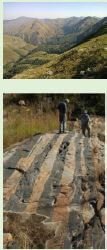 |
| |||||||||||||||||||||||||||||||||
| The value of the World Heritage Sites to South Africa’s tourism industry |
| |||||||||||||||||||||||||||||||||
Sustainable and Responsible Tourism Grade 12 - Tourism Grade 12 Study Guide
Topic: Sustainable and responsible tourism
| Revision of Gr 10 concepts: | |
| Sustainability | Meeting our own needs without compromising the ability of future generations to meet their own needs. |
| Sustainable tourism | Tourism that takes full account of its current and future economic, social and environmental impacts, addressing the needs of visitors, the industry, the environment and host communities |
| Responsible tourism | Responsible tourism focuses on short-term actions every one of us can take every day to have less of a negative impact on a given destination. |
Carbon footprint | • A carbon footprint is the total amount of greenhouse gas emissions that a person, organization, event or product has produced in a given time frame.
|
Content: The three pillars of sustainable tourism (people, planet, profit)
| The concept and background of the triple bottom line approach |
| ||||||||||||||||||||
Environment (planet)
| Good environmental practices
| ||||||||||||||||||||
|
| ||||||||||||||||||||
| Economy (Profit) |
| ||||||||||||||||||||
| Social (People) |
|
Content: Responsible tourism and tourists
Codes of conduct for tourist behaviour (social, economic and environmental)
| SOCIAL
ECONOMIC
ENVIRONMENTAL
| |
| How can a tourism destination attract environmentally (people, planet, profit) conscious tourists? | A destination can attract environmentally conscious tourists in a number of ways. For example, they can:
| |
The contribution of FTT towards encouraging responsible and sustainable practices
|
|
Tourism Notes Grade 12 - Tourism Grade 12 Study Guide
Tour planning
❖ Itinerary – is a detailed plan of the tourist’s journey.
❖ Tourist profile – is an indication of the tourists’ wants and needs.
❖ Element of a client profile
➢ Name, Gender, Age, Budget, Nationality, Location, Occupation, Purpose of visit, Type of tourist, Special needs
❖ Route planning – Why it is important when compiling a tour plan?
➢ It saves time, so that they can spend less time on travelling and more time on activities and attractions.
➢ It is logical and easy to follow
➢ Its economical
❖ Importance of having a budget in place when preparing a tour plan
➢ To be able to know all the different costs that they will have when they embark on their journey.
➢ A budget will help the tourist plan their trip effectively.
❖ Aspects /element of an itinerary
➢ Accommodation
➢ Transport
➢ Attractions and activities
➢ Meals
➢ Budget
➢ Number of people travelling
➢ Route to be taken
➢ Time of year
➢ No. of days
Mapwork
Concepts:
❖ Time zone – is a region on the earth where all the countries have adopted the same standard time, usually referred to as the local time.
❖ Greenwich – is the base from which all time is calculated.
❖ Equator – is an imaginary line around the Earth that is the same distance from the North and South Poles.
❖ Season- is any of the four seasons of the year created by the annual change in the weather.
❖ Standard time- is the uniform time that is used by all countries using the same line of longitude.
❖ Local time – is the actual time according to the position of the sun.
❖ Elapsed time also known as flying time – is the time spent on a flight.
Time calculations
Step 1
❖ Identify time zones of countries in question.
Step 2
❖ SSS DSA to find the time difference in time
Step 3
❖ Is a country with a question mark AHEAD or BEHIND?
❖ If a country with a question mark is AHEAD you ADD difference.
❖ If a country with a question mark is BEHIND you SUBTRACT the difference.
Step 4
❖ You Always ADD the flight time when calculating the ARRIVAL.
❖ You Always SUBTRACT the flight time when calculating the DEPARTURE.
Step 5
❖ When calculating the ARRIVAL TIME you ADD 1hr of DST if the country in question is practising DST at that time.
❖ When calculating the ARRIVAL TIME you SUBTRACT 1hr of DST if the country with time (departure country) is practising DST at that time.
❖ When calculating the DEPARTURE TIME you SUBTRACT 1hr of DST if the country in question is practising DST at that time.
❖ When calculating the DEPARTURE TIME you ADD 1hr of DST if the country with time is practising DST at that time.
Daylight Saving Time
❖ Daylight Saving Time is the practice of adjusting the clock one hour ahead in summer.
Reasons for practising daylight saving time/ Benefits of practising DST
❖ It increases productivity
❖ Boosts tourism as more people are able to engage in outdoor activities.
❖ Helps to reduce crime
❖ Helps save energy as fewer lights are needed during working hours.
Impacts of DST on travel planning
❖ A tourist must be able to calculate the correct time of arrival in a country practising DST.
❖ The tourist might miss a connecting flight by 1 hour if DST was not considered.
❖ To publish timetables and travel schedules with the correct times.
Jet lag
❖ Jet lag is a physical condition caused by crossing many time zones during the flight.
❖ Jet fatigue is the discomfort one feels from being in a confined space for a long time.
Symptoms
❖ Disturbed sleeping patterns
❖ Headache
❖ Lack of energy
How to prevent jet lag?
❖ Change the sleeping routine
❖ Drink lots of fluids, especially water
❖ Rest during the flight by taking short naps.
❖ Avoid alcohol and caffeine
❖ Keep active by walking around the cabin in order to stretch your hands and legs.
HEALTH AND SAFETY
Precautions and vaccinations
- Malaria – an infectious disease caused by being bitten by a mosquito carrying the parasite.
❖ Symptoms – flu-like symptoms, headaches, vomiting
❖ Prevent – Take anti-malaria tablets, use a mosquito repellent - Cholera – is a bacterial infection that passes into the body when one drinks infected water.
❖ Symptoms – Diarrhoea, vomiting, dehydration
❖ Prevent – use sealed bottled water, boil water before using it. - Compulsory vaccinations and recommended vaccinations
❖ Compulsory vaccinations are regulated according to identified threats found in some countries. To contain the spreading of a high risk disease.
❖ Recommended vaccinations are just precautionary measure to ensure the health of individual tourists and are optional. Are not a measure for high risk diseases.
Places where tourists can get healthcare information:
❖ Internet
❖ Travel clinics
❖ Travel agencies
❖ Tourism Information offices
❖ Airports
❖ Libraries
❖ Travel magazines
❖ Travel websites
SAFETY TIPS
On the street
❖ Do not display your valuables
❖ Do not accept lifts from strangers.
❖ Use credit cards or carry small amounts of cash.
In the car
❖ Do not give lifts to strangers.
❖ Never display your valuables in the car.
❖ Drive within the speed limit of the road.
In the hotel
❖ Do not leave your luggage unattended.
❖ Keep your room door locked at all times.
❖ Check who is at the door before opening it.
❖ Check your credit card if you use it in the hotel.
At the airport
❖ Always keep your bags where you can see them.
❖ Make sure all your bags have locks.
❖ Do not allow anyone to check your bags except for designated security officers.
❖ Don’t carry goods through customs of a stranger.
In public places
❖ Be aware of your surroundings.
❖ Become familiar with the local police services.
❖ Ensure you use registered qualified guides.
After dark
❖ Avoid isolated places at night.
❖ Always travel in groups.
❖ Use well-known public transport.
❖ Ensure that your cell phone is charged.
TRAVEL DOCUMENTATION
- Passport
❖ Passport is a legal document that allows a person to leave or enter another country. ❖ Issued by the Department of Home Affairs
❖ Valid for 10 years adult, 5 years child
❖ Requirements: A completed Application from- Proof of identity
- Two size photographs
- Visa
❖ A visa is an endorsement on a passport that gives a traveller permission to be in another country for a specified period.
❖ Issued by Consulate or Embassy
❖ Requirements:
➢Valid passport
➢Specific visa fee
➢Return air ticket
➢Two passport sized photographs
➢Proof of sufficient financial means
❖ Visa to apply for to gain access to England and France – Schengen visa
Advantages of using Schengen visa / multi-visa
➢ Saves money because you only pay for one visa.
➢ Saves time because you don’t visit different embassies to apply for the different visas. - International Driver’s Permit/Licence
❖ IDP can be obtained from AA (Automobile Association)
❖ Requirement needed to obtain International Driver’s Permit:
➢Valid driver’s licence,
➢2 photographs,
➢ Fees,
➢Identity document,
➢Application form,
➢Proof of residence.
❖ Functions of IDP
➢ Provides translation of the South African driver’s licence in several different languages.
➢ Helps the tourist to rent a vehicle in another country and obtain travel insurance. - Health certificate / Yellow Fever certificate
❖ Health certificate can be obtained from TRAVEL CLINICS
CUSTOMS AND IMMIGRATION
❖ Customs office - is the authority that is responsible for monitoring the movement into and out of border areas.
❖ Customs - is the check point where luggage is checked for the carrying of any illegal or prohibited goods.
❖ Immigration - is the check point where all travel documentation is checked.
❖ Green Channel – channel at which nothing need to be declared.
❖ Red Channel – channel at which goods need to be declared.
❖ Duty free goods – goods that don’t have tax added to their price.
❖ Restricted goods – goods that can be carried by following strict rules that govern the carrying of these items.
❖ Prohibited goods – goods that cannot be carried by the passenger under any circumstances.
QUESTION 3
FOREIGN EXCHANGE
❖ GDP – Gross Domestic Product is a total value of all goods and services produced in a country in one year.
❖ Currency – another name for money.
❖ Foreign currency – money from another country.
❖ Exchange Rate – the value of one currency expressed in terms of another.
❖ Foreign exchange – the process of converting one currency to another currency.
❖ Fluctuations – the process whereby the value of money changes from time to time. Changes in the value of the exchange rate follow an upwards or downwards (strengthen and weakens) trend over an extended period of time.
❖ BBR – Bank Buying Rate is the rate used by the bank to buy foreign currency.
❖ BSR – Bank Selling Rate is the rate used by the bank to sell foreign currency.
Benefits of a healthy GDP
A healthy GDP results in
❖ Job creations
❖ Skills development
❖ Infrastructure development
❖ Great output of export
❖ Attract investment
How tourism contribute to the GDP of the country
❖ Using tourism products and services results in increase of taxes and levies which contribute to the GDP.
❖ Standards of living will be improved through money directly and indirectly earned by tourism.
❖ It will set the multiplier effect into motion, creating job and entrepreneurial opportunities thereby improving the standards of living.
❖ It contributes through infrastructural development.
❖ Skills development can be encouraged.
Causes for the Rand Fluctuation
❖ Economic upsets
❖ Strikes
❖ Labour unrest
❖ Global Events
❖ Seasonality
❖ Political changes
The Impact of weak rand on Inbound and outbound tourism
❖ Inbound- Increase of foreign visitors to South Africa. Increase in tourism spending- more value for money. Increase in length of stay.
❖ Outbound- Fewer South Africans choose to travel overseas because it is expensive. Tourists spend less at international destinations. More choose to travel domestically – increase in domestic travel.
Advantages of using EUR in European countries
❖ To simplify travelling and spending in neighbouring countries.
❖ To become a strong currency in the global market place, currency is stronger than other currencies.
❖ To strengthen the regional economy.
QUESTION 4
ICONS
❖ An icon is a significant feature of a country that makes that country famous all over the world.
❖ An attraction could be anything that causes tourists to visit a destination.
Ways which increasing number of visitors to a particular icon or attraction lead to economic growth in South Africa
❖ The tourism services providers make a profit, setting the multiplier effect into motion.
❖ Leads to increase in job opportunities, infrastructure development, rise of new businesses and expansion of existing establishments,
❖ Citizens benefit directly or indirectly due to the increased number of tourists entering the country.
❖ Earn valuable foreign exchange.
Factors contributing to the success of a tourist attraction
❖ Excellent marketing at both local and international level
❖ Sustainable and responsible management plans
❖ Efficiency and ethical behaviour of staff and management
❖ Positive experience of visitors
❖ Safety and crime prevention
❖ General appearance and upkeep of the attraction
❖ Considering the needs of people with disabilities and universal access
Characteristics of a successful tourist attraction
❖ Actual visitor number exceed target number
❖ Repeat visits
❖ Income generated exceeds target figures
❖ Positive impact on the local community and the environment
QUESTION 5
WORLD HERITAGE SITES
UNESCO
UNESCO – United Nations Educational, Scientific and Cultural Organisation
Main aim of UNESCO
❖ To contribute to peace and security in the world and by bringing the nations of the world together.
❖ To declare and protect world heritage sites.
Functions of UNESCO
❖ Constant monitoring to maintain and protect the status of the World Heritage Sites.
❖ Provide support in terms of management plans.
❖ Promote co-operation and development
❖ Assistance with upgrading of facilities in the event of an unforeseen occurrence.
❖ Encourage people to nominate sites to be included in the World Heritage Site list.
- Cradle of Humankind (Fossil Hominid Sites) – Cultural site
❖ Declared in 1999
❖ Found in Gauteng and North West Province and Limpopo
❖ Contains evidence of fossil remains dating back millions of years.
❖ Criteria: (iii)(vi)
❖ Criterion (iii): The nominated serial site bears exceptional testimony to some of the most important Australopithecine specimens dating back more than 3.5 million years.
❖ Criterion (vi): The serially nominated sites are situated in unique natural settings that have created a suitable environment for the capture and preservation of human and animal remains that have allowed scientists a window into the past. - Robben Island – Cultural site
❖ Declared in 1999
❖ Found in Western Cape
❖ Buildings on Robben Island bear unusual evidence to our history.
❖ It was once used as a hospital, military base and prison.
❖ Robben Island symbolises freedom and democracy over oppression stemming from our history of apartheid which signifies universal significance.
❖ Criteria: (iii) (vi)
❖ Criterion (iii): The building of Robben Island bear eloquent witness to its sombre history.
❖ Criterion (vi): Robben Island and its prison buildings symbolise the triumph of the human spirit, of freedom and of democracy over oppression. - Mapungubwe Cultural Landscape – Cultural site
❖ Declared in 2003
❖ Found in Limpopo Province
❖ Represents the Iron Age and is the site where the golden rhinoceros was found.
❖ Criteria: (ii)(iii)(iv)(v)
❖ Criterion (ii): Contains evidence of human cultural activities, over a period of time that led to cultural and social changes between the AD 900 and 1300.
❖ Criterion (iii): Remains in the area serve as evidence to the growth and decline of the culture/ civilisation which existed in the Mapungubwe state.
❖ Criterion (iv): Mapungubwe served as a powerful trading state through East African ports with Arabia and India.
❖ Criterion (v): The remains in the Mapungubwe graphically illustrate the impact of climate change and record the growth and then decline of the Kingdom of Mapungubwe as a clear record of a culture that became vulnerable to irreversible change. - Isimangaliso Wetland Park – Natural site
❖ Declared in 1999
❖ Found in KwaZulu Natal
❖ Criteria: (vii)(ix)(x)
❖ Criterion (vii): The site is geographically diverse with superlative scenic vistas along its 220km coast.
❖ Criterion (ix): This site contains sensitive ecosystem from Africa’s marine, wetland and savannah environments.
❖ Criterion (x): A coastal site with the largest biodiverse estuarine system in the Southern Hemisphere. - Cape Floral Region Protected Areas – Natural Site
❖ Declared in 2004
❖ Found in Western Cape and Eastern Cape Provinces
❖ Criteria: (ix)(x)
❖ Criterion (ix): Representing ongoing ecological and biological processes associated with the evolution of the unique Fynbos biome / the fynbos species are only found in this area of South Africa, the only habitat for this flora in the world.
❖ Criterion (x): It is one of the richest areas for plants when compared to any similar sized are in the world. It is one of the world’s 35 biodiversity hotspots. - Vredefort Dome – Natural site
❖ Declared in 2005
❖ Found in Free State and North West Provinces
❖ Meteorite hit the earth thousands of years ago creating the largest meteorite impact site in the world.
❖ Criteria: (viii)
❖ Criterion (viii): Vredefort Dome is the oldest, largest, and most deeply eroded complex meteorite impact structure in the world. - UKhahlamba Drakensberg Park – Mixed site
❖ Declared in 2000
❖ Found between KwaZulu Natal
❖ A high-altitude site with rolling grasslands, steep-sided river valleys, rocky gorges and examples of rock art.
❖ Criteria: (i)(iii)(vii)(x)
❖ Criterion (i): It is the largest and most concentrated group of rock paintings in Africa south of the Sahara.
❖ Criterion (iii): The San people lived in the mountainous area for more than four millennia, leaving behind them a corpus of outstanding rock art, providing a unique testimony which throws much light on their way of life and their beliefs.
❖ Criterion (vii): A high-altitude site with rolling grasslands, steep-sided river valleys, rocky gorges also contribute to the beauty of the site.
❖ Criterion (x): The property contains significant natural habitats for in situ conservation of biological diversity. - Richtersveld Cultural and Botanical Landscape – Cultural site
❖ Declared in 2007
❖ Found in Northern Cape
❖ Criteria: (iv)(v)
❖ Criterion (iv): An outstanding example of a landscape which illustrates an important stage in human history of the Nama people.
❖ Criterion (v): Cultural site protects the living heritage of the Nama people. - = Khomani Cultural Landscape – Cultural Site
❖ Declared in 2017
❖ Found in Northern Cape
❖ Criteria: (v)(vi)
❖ Criterion (v): The large expanse of sand contains evidence of human occupation from the Stone Age to the present and is associated with the culture of the formerly nomadic =Khomani San people and the strategies that allowed them to adapt to harsh desert conditions.
❖ Criterion (vii): Bears testimony to the way of life that prevailed in the region and shaped the site over thousands of years. - Barberton Makhonjwa Mountains – Natural Site
❖ Declared in 2018
❖ Found in Mpumalanga Province
❖ Criteria: (viii)
❖ Criterion (viii): Represents the best preserved succession of volcanic and sedimentary rock dating back 3.6 to 3.25 billion years, when the first continents were starting to form on the primitive Earth.
THE VALUE OF THE WORLD HERITAGE SITES TO SOUTH AFRICA’S TOURISM INDUSTRY
❖ Gain prestige- making a country proud of the achievement. More people deciding to visit the country.
❖ People show added care for the heritage and learn to conserve for future generations ❖ Increased revenue for a country.
❖ Increased job opportunities.
❖ Infrastructural improvement
❖ Uplifts the overall standard of an area.
QUESTION 6
Marketing South Africa as a tourism destination
Role of SA Tourism in marketing South Africa internationally as a destination of choice for tourists
❖ Marketing activities showcase our country as a choice destination at various global travel trade shows.
❖ Vigorous advertising
❖ Their international offices help to extend marketing.
Tourism event that takes place at the ITB Berlin
❖ Travel trade show/ Travel trade exhibition
Role that SAT plays at the ITB Berlin
❖ SATourism is responsible for marketing South Africa.
❖ Show-casing the various tourism products and services available in South Africa.
Ways which South Africa is advantaged by SATourism’s activities at the ITB Berlin.
❖ It creates opportunities for South African tourism businesses and provincial tourism authorities to market at an international tradeshow.
❖ Awareness of South Africa as a value-for-money long-haul destination for the Germany and European markets and other delegates at the ITB.
TOMSA
❖ TOMSA – Tourism Levy South Africa
Sectors contributing to the TOMSA levy
❖ accommodation sector, car rental companies, tour operators
Relationship between TOMSA AND SA Tourism
❖ SAT can use the funds raised by TOMSA to promote the South Africa locally and internationally.
Way in which TOMSA collects money from tourism businesses in South Africa to fund SATourism’s marketing activities.
❖ Tourism businesses add a voluntary 1% tourism levy to tourists’ bills which is then paid over to TOMSA through TBCSA who are the administrators of TOMSA.
Involvement of the Tourism Business Council of South Africa (TBCSA) in TOMSA’s operations
❖ Levies are paid by the tourists which are paid to TBCSA who are the administrators of TOMSA.
The elements found on South Africa’s brand logo
❖ The South African flag is used and is an internationally recognised representation associated with SA.
❖ The country’s name is written out in full, leaving no room for confusion.
❖ Slogan: Inspiring new ways.
❖ The colours of the South African flag.
The importance of marketing South Africa as a destination of choice
❖ Ensures that South Africa competes in and taps into a highly competitive market place.
❖ It showcases the attractiveness of South Africa.
❖ It results in an increase in inbound tourism.
QUESTION 7
❖ Professional image – is the image you project through your appearance, attitude, behaviour and morals.
❖ Contract of employment – is an agreement between the employer and the employee which describes the rights and responsibilities required for the job.
❖ A code of conduct – is a set of rules that guide behaviour in a work place.
❖ The document that stipulate the laws under which an employee is employed – Basic Conditions of Employment Act (No. 75 of 1997)
The importance of signing the contract of employment before starting a new job
❖ Contact of employment protects the employer and the employee.
❖ It defines the conditions under which the employee is employed.
What is included in a contact of employment?
❖ Working hours
❖ Core duties
❖ Remuneration (salary)
❖ Travel benefits
❖ Leave
❖ Fringe benefits (are other benefits that an employee can enjoy while being employed at that company. E.g. cell phone costs, petrol allowance, vehicle purchase discounts, discounted travel and medical insurances)
Employees get 3 days of Family Responsibility leave.
The value of a code of conduct
❖ A code of conduct guides the conduct of staff in a business.
❖ It promotes integrity in the workplace
❖ It guides staff on ethical matters in the workplace.
❖ Encourages employees to act responsibly.
What is included in a code of conduct?
❖ The behaviour of employees when at work
❖ Confidentiality
❖ Use of company assets
❖ Honesty
❖ Appropriate dress
❖ Integrity of staff
❖ Obeying of laws and regulations
❖ Substance abuse
The importance of personal appearance of all employees.
❖ It is a reflection on the environment in which they work.
❖ It can create a sense of trust in the business or vice versa
How a business can portray the professional image
❖ The company name, logo and slogan
❖ The company stationery
❖ The physical appearance of the business
❖ Promotions and communication with customers and the website or social media sites.
❖ Marketing material and product packaging
❖ Credentials and awards
❖ Employee appearance and conduct
❖ Environmental policies
❖ Customer service policies
How the employees can maintain the professional image/ how the staff can contribute to the professional image of the company?
❖ Adhere to company policy, adhere to dress code, smile – it brings in the money, Personal appearance – be well groomed/ neat, Punctuality- manage time effectively, Behaviour and attitude- note posture/ approach. Have extensive knowledge. Acquiring excellent communication skills.
Consequences of a negative conduct
❖ Customers will support the opposition.
❖ Negative word of mouth may result in fewer customers.
❖ Decreasing profit margins
❖ Loss of employees
Intervention strategies to management that can improve the negative conducts of employees
❖ The employees can undergo additional training sessions.
❖ The employees can work under supervision until the conduct is acceptable.
❖ The employee can get a written warning.
❖ Disciplinary procedures can be started.
QUESTION 8
THE THREE PILLARS OF SUSTAINABLE TOURISM
Sustainable – something which can be kept in the same condition or a better condition for the future.
Social – People Environmental – Planet Profit/ financial – Profit
Environment (planet) – how socially responsible the company is with regard to the natural environment.
Economy (profit) – how responsibly the company acts in terms of ownership, procurement, employment.
Social (people) – what effect the company has on its employees and the communities in which it operates.
- Environment (Planet)
❖ Resource management – businesses should make sure that they conserve energy and water. This can be done by:
switching off lights and appliances when not in use, use solar heating for hot water, collect rainwater in a tank to water the garden and grounds, not wasting water by allowing taps and pipes to leak, using water-saving showers and toilets, use washing
❖ Waste management – If a business wants to control the amount of waste it generates, it should make sure that it obeys the three principles of reduce, recycle and re-use
❖ Litter and pollution control – businesses should make sure that they limit the amount of pollution it causes. This can be done by:
Encourage all staff to pick up litter when they see it.
Taking care not to pollute streams and rivers with chemicals and rubbish.
Avoiding extremely bright lights, as light pollution can also cause problems, particularly in game reserves.
❖ Environmentally friendly buildings- This can be done by:
Using building material that are not harmful to the environment.
Making sure that the buildings are well insulated so that they keep cool in summer and warm in winter, thus minimising the need for heating and air-conditioning.
❖ Promotion of indigenous flora and control of alien plants
Plant indigenous plants in the grounds, which need less water to grow. - Economy (Profit)
❖ Ownership – offer shares to employees
❖ Employment –
➢job vacancy for local people
➢Fair wages and working conditions
➢Provide skills training programmes for staff.
➢Practices must be transparent
➢Provide staff with incentives and bonuses linked to performance or service levels.
➢Procurement of local goods and services – buy local goods and services - Social (People)
❖ Stakeholders to be part of decision making
❖ Provide training & empowerment of staff
❖ Corporate Social Investment (CSI) – is a way in which a tourism business can give back to the local community in which it operates.
❖ Forms of CSI:
➢ adopting a local school
➢Provide bursaries to local school learners
❖ Corporate Social Responsibility (CSR) – is where a business engages in a project from time to time, more as a marketing initiative.(e.g. the business will help set up a mobile clinic or library for a community not necessarily where they operate from)
Responsible tourism and tourists
Responsible tourism – form of practising tourism so that it is sustainable.
Responsible tourism – is an approach to the management of tourism, aimed at maximising economic, social and environmental benefits and minimising costs to destinations.
Codes of conduct for tourist behaviour
❖ A code of conduct is a set of rules, which are written down, on how people are expected to behave.
How can a tourist destination attract environmentally conscious tourist.
❖ The business must have a responsible travel and/or environmental policy.
❖ The business must stimulate the local economy by buying local products and services.
❖ Have a recycling programme in place.
❖ Practise the triple bottom – line approach
❖ Responsible marketing of businesses
❖ Encourage visitors to use water sparingly
❖ Do not buy or sell products made from endangered species, e.g. hard woods, shells from beach traders
❖ Going green
❖ Developing partnerships
❖ Joining FTT
❖ Promoting emerging and local businesses
Types of responsible tourist behaviour that visitors should exhibit when visiting an attraction.
❖ Use water and energy sparingly.
❖ Recycle, reduce and re-use.
❖ Avoid an form of pollution
❖ Do not vandalise.
❖ Leave only footprints.
Benefits that responsible tourism behaviour has for a community
❖ It ensures that visitors and local communities alike share the benefits of tourism and travel equally.
❖ It creates a sense of pride.
❖ It promotes greater understanding of and appreciation for fair and equitable business practice.
Fair Trade Tourism
FTT (Fair Trade Tourism) - is a non-profit organisation that promote sustainable tourism development in Southern Africa and beyond.
The aim of FTT is to make tourism more sustainable by ensuring that the people who contribute their land, resources, labour and knowledge to tourism are the ones who reap the benefits.
This is done by growing awareness about responsible tourism to travellers; assisting tourism businesses to operate more sustainably; and by facilitating a Fair Trade Tourism certification programme across Southern Africa.
Tourism businesses that adhere to the FTT standard use the FTT label as a way of signifying their commitment to fair and responsible tourism.
FTT six principles
- Fair share- all participants involved in a tourism activity should get their fair share of the income, in direct proportion to their contribution to the activity.
- Democracy (fair say) – all participants involved in a tourism activity should have the right and opportunity to participate in decisions that concern them.
- Respect – both host and visitor should have respect for human rights, culture and environment (safe working conditions and practices, protection of young workers, promoting gender equality, HIV/AIDS awareness).
- Reliability – the services delivered to tourists establish mechanism of accountability (ownership must be clearly defined, sharing of profits, benefits and losses must be transparent, employees and other participants should be able to access information that concern them).
- Sustainability – the tourism businesses should strive to be sustainable.
Fair Trade good practices:
❖ Fair Wages and working conditions
❖ Products must be obtained from local producers
❖ Have respect for human and environmental rights
❖ Reliability and Transparency
❖ Practicing sustainability
QUESTION 9
GLOBAL EVENTS
➢ A global event is something that all countries know of and affect or change the whole world.
HOW DO WE DETERMINE WHETHER AN EVENT HAS THE STATUS OF BEING CLASSIFIED AS A GLOBAL EVENT?
➢ It involves multi-country participation.
➢ It draws large crowds from all over the world.
➢ It generates multi-country interest.
➢ Has major global media attention.
➢ The event requires proper planning and preparation.
➢ Large sums of money is invested in the event.
Sporting events: 2010 FIFA World Cup (football), Wimbledon (tennis), Comrades Marathon (running), Tour de France (cycling), Olympic Games (all sporting codes).
Non- Sporting Events: G8 Summit, Summits on climate change, Miss Universe and Miss World), World Conferences.
POSITIVE IMPACTS OF GLOBAL EVENTS ON INTERNATIONAL TOURISM
➢ ECONOMIC- Increased foreign revenue, increased business transactions and therefore increased profits, Creation of employment opportunities, Skills developments, Publicity via media experiences at the destination, Creations of other investment opportunities.
➢ SOCIAL – Communities are uplifted through skills development and job creation, communities are able to showcase their cultures.
➢ ENVIRONMENTAL – More money is invested in protecting the environment, more funding becomes available as profits made from the event, physical and natural environment are upgraded to enhance its tourism attractiveness.
NEGATIVE IMPACTS OF GLOBAL EVENTS ON INTERNATIONAL TOURISM
➢ ECONOMIC – Large sums of money are invested in preparation for the event, increased employment is only temporary, many people over-invest and once the event is over the investment is not sustainable, Negative publicity if something goes wrong.
➢ SOCIAL - Cultural disrespect can result in conflict situations, increase in criminal activity, a superficial image is created about the destination for the duration of the event.
➢ ENVIRONMENTAL – Mass tourism can result in increased stress on the natural environment, air pollution from increased demand for transport, litter created by the event creates more pressure on the environment, and the natural environment can be cleared away for infrastructure development.
THE IMPACT OF HOSTING A GLOBAL EVENT ON DOMESTIC TOURISM IN THE HOST COUNTRY.
POSITIVE – Domestic tourists see it as an opportunity to participate in such unique event, Pride in their country and the need to support the event.
NEGATIVE – Major construction in infrastructure may make it inconvenient for people to travel, Prices are usually higher due to increased demand, Places may be fully booked, and congestion and overcrowding may discourage domestic tourists.
THE IMPACT OF HOSTING A GLOBAL EVENT ON THE ECONOMY OF THE HOST COUNTRY
POSITIVE
➢ Creation of employment opportunities
➢ Attracts investment
➢ Wide scale of infrastructural development
➢ Increased foreign revenue
➢ Increased marketing for the host country
➢ All tourism sectors tend to benefit from the influx of tourists
➢ Skills development and entrepreneurial opportunities for locals
➢ It will set the multiplier effect into motion
➢ Will result in positive GDP growth
➢ Increased publicity/ positive image
➢ International publicity and exposure
NEGATIVE
➢ Increased levels of crime
➢ Increased pollution/ traffic congestion
➢ Negative media coverage if the event proves to be unsuccessful
➢ Exploitation of cultures and surrounding environments
➢ Disruption of daily commuting patterns of the local people
➢ Overcrowding with international and domestic visitors flocking to the city.
Political situation
❖ Political situation – is any event that involves the countries government and the way in which the country is run.
❖ Types of political situations
➢ Acts of terrorism
➢ Protests
➢ Xenophobia
❖ The impact this situation have on international tourism and the economy of the affected country
➢ Tourists may chose not to visit the country which will decrease foreign revenue.
➢ Investors will pull out
➢ Jobs will be lost due to fewer tourists visiting the country.
➢ The negative WOM/media coverage may discourage potential tourists from visiting the country.
Unforeseen circumstances
❖ An unforeseen circumstance - is an event that cannot be predicted in advance.
❖ Types of unforeseen occurrences
➢ Natural disasters
➢ Economic upsets
➢ Accidents
➢ Diseases
❖ The impact this unforeseen occurrence have on international tourism and the economy of the affected country
➢ Tourists may chose not to visit the country which will decrease foreign revenue.
➢ The country may lose potential investors.
➢ Jobs will be lost due to fewer tourists visiting the country.
➢ Loss of profits may lead to retrenchments.
Why it is important for SATourism to have statistics
❖ To provide for the needs and wants of customers.
❖ To monitor travel trends.
❖ To gather information in order to market South Africa as a preferred destination.
Reasons why the European markets visit more in South Africa (more number of tourists from these countries)
❖ Favourable exchange rate for them (South Africa is a VFM destination)
❖ Travelling time is convenient
❖ Business opportunities
❖ South Africa is considered a safe destination compared to other major destinations.
❖ Our climate attracts tourists
Reasons why other countries don’t like to visit South Africa (least number of tourists from these countries)
❖ We are not a VFM destination for them.
❖ Travelling time is too long
❖ Attractions we have may be similar to what they provide.
❖ Our climate may not be appeal to them
Ways that SATourism can use to encourage inbound tourism from a least visiting country
❖ Intensive marketing programmes
❖ Offering incentives to tourists
❖ Research their specific needs and develop packages around those research.
❖ Examine possibility of offering direct flights
❖ Dropping visa regulations for tourists
QUESTION 10
❖ Customer feedback: is the process of collecting information from customers regarding the satisfaction or dissatisfaction they feel with a product or service.
The purpose of customer feedback
❖ To gain information on what they are doing right, what they are doing wrong, how they can improve and how they can attract more customers.
Types of customer feedback:
❖ Surveys, Questionnaires, Feedback cards, Follow-up calls, sms services, web-based responses, mystery customer.
Analysing customer feedback
- Study and capture the feedback data to determine the extent of customer satisfaction.
- Identify the most common complaints
- Decide on an action plan
- Start the intervention process
Ways how feedback methods help to improve the level of service delivery of tourism businesses
❖ Feedback gathered from clients is used to evaluate service delivery.
❖ To ensure satisfaction levels of customers are established.
❖ The message that the tourism business cares about its customers are established,
❖ The information captured can be used to improve service delivery levels at the business.
❖ Quick feedback and problems are addressed immediately.
Intervention plans that should be implemented to improve service delivery OR Suggest strategies that can be used to improve service
❖ Staff sent for regular training courses to improve service delivery skills.
❖ Training methods adopted to improve the speed of service.
❖ Offer incentives to employees to maintain good work ethics.
❖ Continuous feedback from customers.
Negative impacts that poor review could have on a business
❖ Loss of customers
❖ Loss of business profitability
❖ Loss of income
❖ Negative publicity due to negative word of mouth
❖ Loss of repeat visit
Impacts of excellent service on business profitability
❖ More money for the business.
❖ The business gets a better reputation.
❖ Increased customer satisfaction.
❖ Customer loyalty
❖ Repeat business
❖ Positive word-of-mouth
Support Document Grade 12 - Tourism Grade 12 Study Guide
NCS (CAPS) LEARNER
SUPPORT DOCUMENT
GRADE 12
TOURISM
STEP AHEAD PROGRAMME
2021
Guide
- Preface
- Time Zones
- Jetlag
- Understanding and Interpreting the Time Zone map
- Steps Used to Calculate Time Across time zones
- Learner Activities: Time Zones
- Map work and tour planning
- Topic: Tourism Sectors
- Topic: Tourism Attrcations
- Tour Planning
PREFACE
This support document serves to assist learners on how to deal with curriculum gaps and learning losses as a result of the impact of COVID-19 in 2020. It also captures the challenging topics in the Grade 11 and 12 work. The lesson plans should be used in conjunction with the 2021 Recovery Annual Teaching Plan. Activities should serve as a guide on how to assess topics dealt with in this document. It will cover the following:
| A | ||
| B | ||
| C | ||
| D | ||
| E | ||
| F |
Time Zones
The section on Time Zones is covered under the Map work and Tour Planning Section. The topic is made up of two parts:
- The theory behind Time Zones including concepts and related aspects to the way in which time is calculated across the world
- The actual calculation of time across the globe as is used by people who travel one place to another.
There are certain aspects of this section that you need to master in order to answer the questions asked in exam papers.
This section will be tested in all tests and exams in your Grade 12 year as it is taught in Term 1. It makes up Section B (Question 2) of your exam papers.
Many learners believe that this section is difficult because there are calculations involved. There are in fact a few steps that you will need to master in order to get all your calculations correct. We will come to that in a little while.
The following is a checklist of what you should know in this section:
- Understand how to use the 24-hour clock when completing time zone calculations
- Understand the given terms and how they impact on world time zones
- Be able to read, interpret and use the Time Zone Map to complete your calculations.
- Use the concepts of longitude and latitude to locate destinations on the Time Zone Map
- Understand the practice of Daylight Savings Time and how it impacts on travel
- Understand how travelling across time zones lead to Jetlag and Jet Fatigue (including the symptoms, causes and prevention).
The 24-hour clock. In tourism we use the 24-hour clock which goes from 24:00/00:00 to 23:59. We don’t use the ‘am” and “pm” method of telling time.
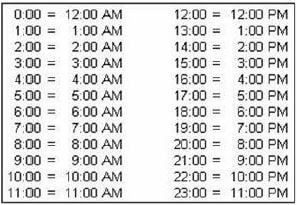 The earth has imaginary lines that run from East to West and North to South. These lines are called latitudes and longitudes.
The earth has imaginary lines that run from East to West and North to South. These lines are called latitudes and longitudes.
| LATITUDES | LONGITUDES |
|
|
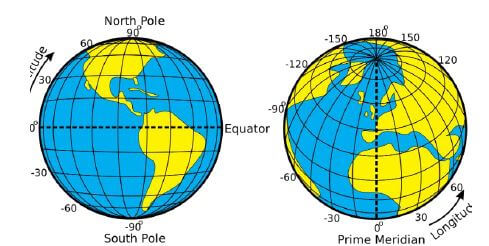
The space between two longitudes is called a TIME ZONE.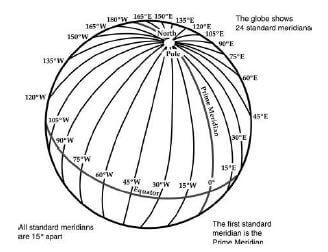
- Each time zone is 15º(degrees) apart.
- There is a 1-hour time difference between each time zone.
The earth is round and therefore measures 360º. There are 24 hours in a day.
The movement around the earth around the Sun, in 24 hours is called Rotation. The earth rotates from WEST to EAST.
360º ÷ 24 = 15 = the earth moves 15º every 1 hour.
The Greenwich Meridian was first identified to be used as the meridian from which time is calculated. The time at this meridian was called the Greenwich Mean Time.
The Universal Time Coordinate (UTC) lies on the Greenwich Meridian. All clocks take its time from the UTC, i.e. it standardises how time is kept.
The movement of the earth on its axis over the year (365days) is called Revolution.
The revolution of the earth results in the different Seasons of the year.
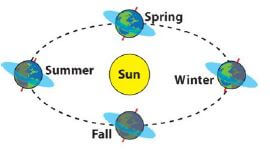
The local time is the exact time according to the position of the sun. Places close to each other may experience different times due to the shape of the earth and the effect this has on rotation. It was therefore decided by scientists to use the concept of standard time.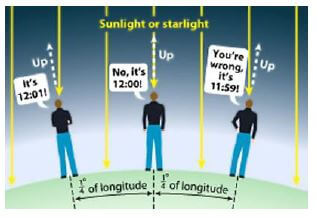
Standard Time is measured from the Greenwich Meridian using the GMT as a guide. Smaller countries where there is only one meridian running through it, takes its time from the same meridian. This is called standard time.
The earth rotates from West to East. Therefore:
All places to the East of the GM are ahead in time
All places to the West of the GM are behind in time.
The (+) and the (-) indicates direction.
If we are at the GM and we want to know the time East of us, we are going to go forward in time, i.e. earlier in time and therefore we will look at the (+). The opposite is true if we want to know the time West of us, then we use the (-)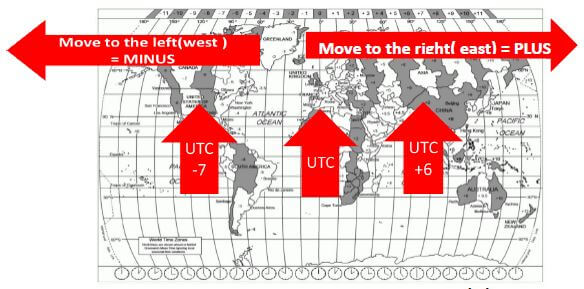
The International Date Line (180º) meridian is 12 hours across the Greenwich meridian (GM).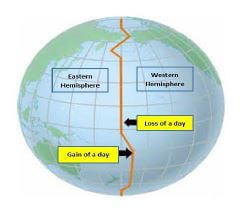
- When crossing over the IDL, there is a change in the calendar day.
- When one travels West over the IDL (E.g. Japan to Canada), the date will change from today to yesterday.
- When one travels East over the IDL (E.g. Canada to Japan), the date will change from today to tomorrow.
EXAMPLE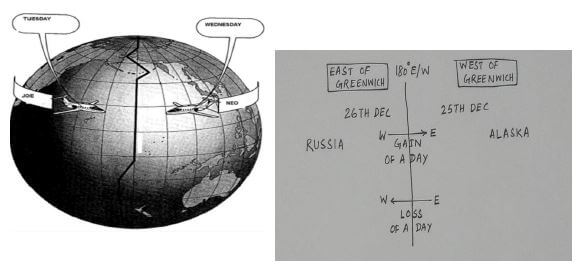
Some countries are very wide across their longitudes and therefore all the places in that country cannot take their time from the same time zone, E.g. Australia.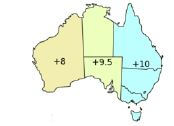
Daylight Saving Time(DST) also referred to as Summer time is a system used by some countries which lie further away from the equator. These countries generally have the sun rising earlier in the mornings and setting earlier in the evening. The sun rises much earlier than for example the norm of 06:00.
These countries therefore feel that they are wasting a lot of valuable daylight when businesses could be operating. They have decided to adapt to the way in which the rotation of the earth takes place.
Daylight Saving Time is where the country decides to set the clocks 1 hour ahead of standard world time in summer. This allows for one hour of daylight to move from morning to evening. The change forward is known as Spring forward. The country will turn their clocks back to standard time once summer is over. This change back is referred to as Fall back.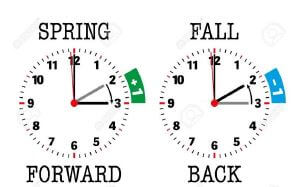
There have been many reasons for country’s adopting DST. Some of these reasons include:
- Cool hours in the morning could be used more productively rather than the warmer hours later on in the afternoon. This will increase productivity and hence lead to the growth of the economy.
- This practice is actually a green practice because it encourages energy saving because less lights and air conditioners are used.
- It can lead to a reduction in crime as more people return home well before dark.
- There will be reduced road deaths as the evening rush hour would now have more daylight.
- There will be more time for recreation, leisure, family time for both parents and children.
- Recreational areas and tourism establishments make money as they can open for longer hours.
Time zones and Daylight savings time will have an impact on tourists travelling outside of their country, especially across different time zones and hemispheres.
Tourists need to know how the times will change as they move across the globe, i.e. if they move East they are going ahead in time and if they move West they are going behind in time.
If their host country is practicing Daylight Savings Time, they will need to change their watches according and this will also impact on how they plan their itineraries. The times to visit attractions or participate in activities will be impacted by the time being used by the host country.
Changes in time either due to the impact of time zones or DST will also impact on other travel arrangements including flight times and changes, boarding times for trains and cruises, checking into to accommodation, etc. Tourists will also have to be informed about the business hours for establishments such as banks, foreign exchange bureaux’s, etc.
There is also an impact on how the tourist feels when they are travelling. The tourist physical and mental health can be affected by two aspects, namely:
Jetlag which is a tiredness that one feels when travelling across time zones
Jet Fatigue which is a tiredness that one feels from being confined to a space for a prolonged period of time. The cause of jet fatigue is not restricted to the crossing of time zones. A person can feel this even if they have not crossed over time zones.
JETLAG
| SYMPTOMS OF JETLAG | MINIMISING THE IMPACT OF JETLAG |
|
|
Understanding and Interpreting the Time Zone map
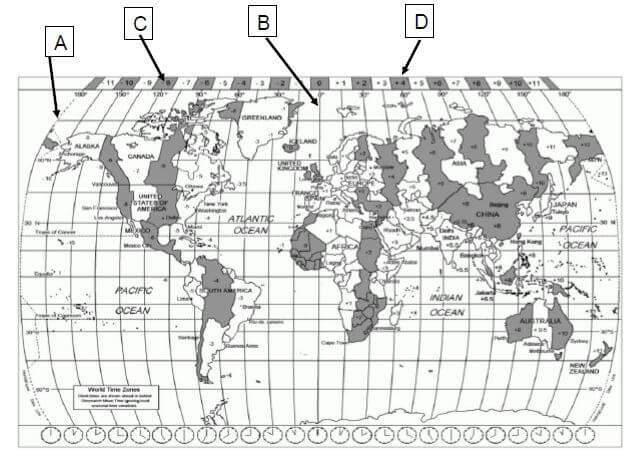
| A | The International Date Line is located at 180° |
| B | The Greenwich Meridian/Prime Meridian is located at 0°. This is the point from which we calculate time. |
| C | (-8) is the 120°W Line of Longitude. It means that all places who take their time using the 120°E meridian are 8 hours behind in time compared to the GM |
| D | (+4) is the 60° Line of longitude. It simply means that places who take their time from the 60°Emeridian are 4 hours ahead in time from the GM. |
| Grey shaded areas mean that all the places with grey will take their time from the same meridian, corresponding to the longitude coloured in grey. E.g. all the places in the Eastern hemisphere shaded in grey and marked +8, take their time from the 120°E meridian. | |
Steps Used to Calculate Time Across time zones
Step 1: Write down all the given information.
- Identify time zones of countries in question.
- In problems where flying time is needed, note the departure time and point as well as the flying time.
Step 2 : Find out if the places are in the same or in different hemispheres.
- If they are in the same hemisphere SUBTRACT, if they are in different hemispheres, ADD
- Same Signs Subtract (SSS) and Different Signs ADD(DSA) to find the time difference in time.
Step 3: Is a country with a question mark AHEAD or BEHIND
- If a country with a question mark is AHEAD you ADD difference.
- If a country with a question mark is BEHIND you SUBTRACT the difference.
- Always start with the place in question, in your statement.
Step 4: When dealing with flight time:
- You Always ADD the flight time when calculating the ARRIVAL.
- You Always SUBTRACT the flight time when calculating the DEPARTURE.
Step 5: When dealing with DST:
- When calculating the ARRIVAL TIME you ADD 1hr of DST if the country in question is practising DST at that time.
- When calculating the ARRIVAL TIME you SUBTRACT 1hr of DST if the country with time (departure country) is practising DST at that time.
- When calculating the DEPARTURE TIME you SUBTRACT 1hr of DST if the country in question is practising DST at that time.
- When calculating the DEPARTURE TIME you ADD 1hr of DST if the country with time is practising DST at that time.
NOTE:
- Some problems include transit time between destinations
- Past papers have also asked for learner to calculate the departure time rather than the arrival time.
YOU MUST GO THROUGH AS MANY PAST PAPERS AS YOU CAN, IN ORDER TO BECOME FAMILIAR WITH THE DIFFERENT TYPES OF PROBLEMS IN TIME ZONE CALCULATIONS.
Examples Using the Steps
Sandile is travelling from Johannesburg to New York. His flight will leave O.R. Tambo at 17:00 on the 12 June. His elapsed time from O.R. Tambo to John F Kennedy International is 16hrs 30mins. Give his arrival time in New York
Step 1: Write down all the given information
- Johannesburg (30ºE) +2 New York (75ºW) -5
17:00, 12 June ?
Flying time = 16hrs30mins
Step 2: Are both places in the same or different hemispheres
- Johannesburg = 30°E => Eastern hemisphere
New York = 75°W => Western Hemisphere
Rule: Both places are in different hemispheres, therefore you will ADD (2+5 = 7HRS) There are 7 hours between both places.
Step 3: Is the place in question East or West of the known place?
- New York (place in question) is West of Johannesburg, therefore you will SUBTRACT
Step 4: Calculate time difference
- 17:00 – 7hrs = 10:00 -> When it is 17:00 in Johannesburg it is 10:00 in New York
Step 5: Add flight time
- 10:00 + 16hrs 30 mins = 02:30 13 June: arrival time
You need to master this kind of problem before your teacher shows you other kinds of time zone problems. You may use your textbooks to examine other examples related to calcualtions.
Learner Activities: Time Zones
Activity 1 – Spot Test on Concepts
QUESTION 1:
Match the term in Column A with the description in Column B. Write only the letter of the correct term.
| Column A | Column B |
| 1.1. IDL | A. Artificial divisions of the world’s surface |
| 1.2. GMT | B. An artificial time boundary corresponding to 180⁰ from the Greenwich Meridian |
| 1.3. Greenwich Meridian | C. The time used in a country, calculated from the meridian that they take their time from. |
| 1.4. Standard Time | D. A temporary change in a country’s standard time during the summer months. |
| 1.5. DST | E. The point of the globe representing the 0⁰ longitude. |
| 1.6. Time Zones | F. Local time at the Greenwich Meridian. |
QUESTION 2: Correct the following statement by replacing the incorrect term/concept
2.1. GMT is the temporary change in a country’s standard time.
2.2. Latitudes divide the Earth into the Eastern and Western hemisphere. 2.3. South Africa has two standard time zones.
2.4. IDL stands for International Data Link.
2.5. The world is divided into 12 time zones
2.6. The International Date Line is also known as Greenwich Meridian.
Activity 2
Read the following article before answering the questions that follow
Daylight Savings Time
Daylight Saving Time (or Summertime as it is called in many countries) is a way of getting more light out of the day by advancing clocks one hour during the summer. During Daylight Saving Time, the sun appears to rise one hour later in the morning,
when people are usually asleep anyway, and sets one hour later in the evening, seeming to stretch the day longer. The reason DST works is because its saves energy due to less artificial light needed during the evening hours - clocks are set one hour ahead during the Spring, and one hour back to standard time in the Autumn. Many countries observe DST, but many do not.
Benjamin Franklin first suggested Daylight Saving Time in 1784, but it was not until World War I, in 1916, that it was adopted by several counties in Europe that had initially rejected the idea.
Note: Between March-April through September-November, it is summer in the northern hemisphere, where many countries may observe DST, while in the southern hemisphere it is winter. During the rest of the year the opposite is true; it is winter in the northern hemisphere and summer in the southern.
Adapted:(https://ticktocktony.com/Newsletter/daylight-savings.html
- What is the abbreviation for Daylight Savings Time?
- Explain why Canada adopts this practice in March.
- Briefly describe the process of Daylight Savings Time.
- “that it was adopted by several counties in Europe that had initially rejected the idea.” Determine TWO reasons why many European countries may have decided to adopt Daylight Savings Time.
- There are arguments on the idea that daylight saving time reduces electricity usage and promotes energy efficiency.
Why is the above statement not completely true? Justify your answer with a good reason. - Identify reasons why there are many countries who choose not to use Daylight Savings Time.
Activity 3 – Jetlag
Study the picture below and then answer the questions that follow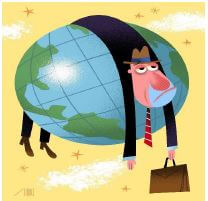
- Explain the difference between jet lag and jet fatigue.
- Refer to the picture and identify symptoms of jet lag that this tourist could be feeling.
- Refer to the diagram below and then answer the question that follows.

Why would a person travelling from West to East suffer greater symptoms of jetlag compared to a person travelling from East to West?
Activity 4
Using the World Time Zone Map, answer the following questions.
- Give the location (longitude and continent) where one will find the following countries:
- San Francisco
- Lagos
- Johannesburgh
- Adelaide
- India is +5,5 on the Time Zone Map. What does this mean?
- For each of the following time zones, give the time difference with the UTC:
- 75ºW
- 30º E
- 120ºE
- 15ºW
- Complete the following table, if the time at the UTC is 12:00
COUNTRY DIFFERENCE IN º DIFFERENCE IN TIME AHEAD/BEHIND OF THE UTC TIME Rio de Janeiro Berlin Perth Tehran Between 45ºE and 60ºE = 3,5hrs 3,5hrs Ahead 15:30
Activity 5
Using your Time Zone Map, complete the following calculations. Show all workings.
- Zandile is working late in her Johannesburg (30ºE) office. She needs to make a phone call to her colleague Jane in Canada (105ºW). She will make the call at 16:00 SAST. Is this call possible?
- A businessman flies from Hong Kong (120ºE) to Johannesburg. He leaves Hong Kong at 12:30 on Sunday. What time and day will he arrive in Johannesburg, if he takes a 13-hour flight.
- Skhumbuzo will be departing from OR Tambo International Airport (30ºE) for Auckland (180ºE). He will leave at 18:00, Tuesday. His flight time is 18hrs. Auckland is practicing Daylight Savings Time.
- Peter leaves Paris (15ºE) on Friday at 08:00. He travels to New York (75ºW) on a 9-hour flight. What is his arrival time in New York?
- Keshnee who is studying in Lima, Peru (75ºW) makes a phone call to her parents who are living in Riyadh (45ºE). If she makes the call at 06:00, at what time will they receive the call? Lima is practicing DST.
- A group of educational tourists travel from Sao Paulo(45ºW) to Namibia (15ºE). They leave Sao Paulo at 05:00 on Wednesday and take a 6 hour flight to New York. The will remain in transit in New York for 4 hrs before flying to Namibia. The flight from New York to Namibia is 16 hours.
- Ayanda flew from San Francisco (120ºW) to Dallas (90ºW). She arrived in Dallas at 08:00 on Wednesday. Calculate her departure time from San Francisco if the flight was 3 hours long.
MAP WORK AND TOUR PLANNING
TRAVEL DOCUMENTS
- Passport
- PASSPORT - A document issued by a national government that certifies the identity (name, date of birth, gender and place of birth) and nationality of its holder.
- The passport is issued by the Department of Home Affairs
- Valid for 10 years’ adult
- Requirements: A completed Application from
- Proof of identity
- Two size electronic photographs will be taken inside the DHA
- Required fee
- Different types of Passports
Types of Passports Description Valid for 1 Passport These passports are issued to citizens who are 16 years of age or older, and are intended for occasional travel, such as vacations and business trips 10 years. 2 Maxi passport Similar to regular passports, but they contain 48 pages to cater for frequent travellers. Like regular passports, they are issued to citizens aged 16 and older 10 years and are non-renewable.
New passport applications have to be filed.3 Child passport These passports are issued to citizens who are 15 years of age or younger. 5 years, and are non-renewable 4 Official passport These passports are issued to officials attached to government institutions who have to travel on official business. They are valid for five years. 5 Diplomatic passport Issued to diplomats and representatives for work related travel, and to their accompanying dependents.
- PASSPORT - A document issued by a national government that certifies the identity (name, date of birth, gender and place of birth) and nationality of its holder.
- Visa
A visa is an endorsement on a passport giving the holder permission to travel to, enter, transit or remain in a foreign country.
The visa is issued by Consulate or Embassy- Requirements:
- Valid passport
- Specific visa fee
- Return air ticket
- Two passport sized photographs
- Proof of sufficient financial means
- Types of Visas – Uni-visa, Multi-visa / Schengen visa
Example: Schengen Visa countries
Advantages of using Schengen visa / multi-visa- Saves money because you only pay for one visa.
- Saves time because you don’t visit different embassies to apply for the different visas.
- Requirements:
- Health Certificate / Yellow Fever certificate
A health certificate is a statement signed by a health-care provider (such as a registered travel doctor) that proves the health of the bearer of the certificate. Health certificate can be obtained from TRAVEL CLINICS - International drivers permit
Permits a tourist to drive in a foreign country
IDP can be obtained from AA (Automobile Association)- Requirement needed
Requirement needed to obtain International Driver’s Permit:- Valid driver’s Licence,
- 2 photographs, Fees,
- Identity document,
- Application form,
- Proof of residence.
- Functions of IDP
- Helps the tourist to rent a vehicle in another country and obtain travel insurance.
- Requirement needed
ACTIVITIES
Four options are provided as possible answers to the following questions. Choose the answer and write ONLY the letter (A–D) e.g. 1.1.21 A.
1.1.1This type of visa applied for when travelling to European Union Countries.
- Brazilian
- Scottish
- Schengen
- American
1.1.2. An IDP is required to …
- participate in local cultural activities.
- fly an light aircraft in a foreign country.
- hire a vehicle at certain foreign destinations
- participate in white water rafting activities.
1.1.3 A South African applying for this travel document needs to submit a South African identity document, a completed application form and pay a fee.
- Passport
- Health certificate
- International driving permit
- Visa
1.1.4 A South African outbound international tourist who wants to visit China will apply at the … for a holiday visa.
- Department of Home Affairs
- National Department of Tourism
- Asian Embassy
- Chinese Embassy
1.1.5 A South African outbound international tourist would apply to the …for a transit visa when changing flights at Heathrow International Airport in London.
- Department of Economic Affairs
- British Embassy
- Department of Home Affairs
- American Embassy
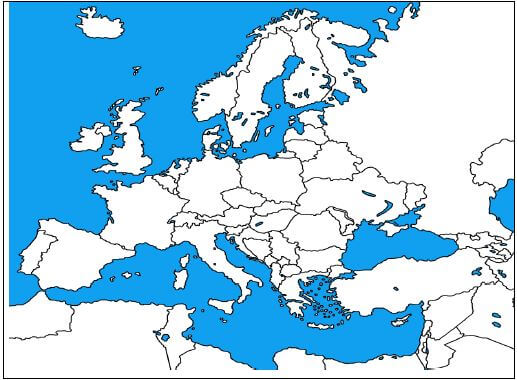
1.1 Name the 22 Schengen member countries and colour each country using their flag colours.
1.2 Eric wants to take a gap year, touring France, Italy and Germany. List FOUR travel documents that Eric would need for his trip.
2.1 Choose a service from COLUMN B that matches the service provider in COLUMN A. Write only the letter (A–F) next to the question number
| COLUMN A | COLUMN B | |
| 1 | Travel clinic | a. international driver's permit |
| 2 | Department of Home Affairs | b. visa document |
| 3 | AA (Automobile Association) | c. yellow fever certificate |
| 4 | Embassy | d. passport |
Study the information below and answer the questions that follow.
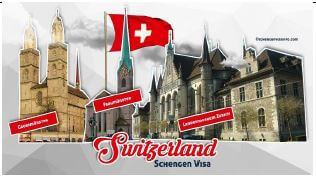 | A Schengen Visa gives a tourist entry into 22 countries who are members of the European Union. John has to go to the Switzerland Embassy to apply for a Schengen Visa. |
3.1 Differentiate between a passport and a visa. (2 × 2) (4)
3.2 Give ONE reason why John would require a Schengen Visa for the race. (2)
USA Visa Requirements:
| JOHN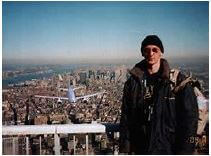 |
3.3 Name the place where John will hand in an application to obtain a passport (1)
3.4. Suggest ONE reason why visa applicants are required to provide the US Embassy or Consulate with supporting documents in order to obtain a visa. (2)
Topic: Tourism Sectors
Content: Professional image in the tourism industry
Professional image in the tourism industry
- When working in the tourism industry it is important that professional image is portrayed at all times.
- Company and staff image are important when dealing with tourists from different countries and backgrounds.
- They contribute to the professional image in the tourism industry.
Factors contribute to a professional image in the tourism industry.
Examples of aspects to consider include:
COMPANY IMAGE: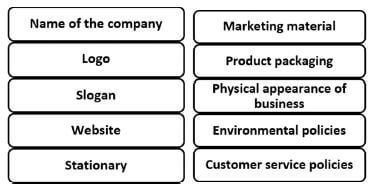
Name of company
People get to know a company’s name and they learn to trust it tOR associate it with poor service.
Logo
- A company’s identity is expressed by its logo and the colour thereof. The logo (or symbol or trademark) is the recognisable feature of the brand or company.
- The logo is used on most visible features of the company, such as uniforms, stationery, marketing material and signage.
- All of this together is called a company’s branding and is what establishes its corporate identity.
Slogan
- A slogan is a short phrase that communicates a brand’s core values.
- Slogans should be printed on all the company’s promotional items, including its website, stationery, marketing material and merchandise.
- A slogan must be memorable and reflect the company philosophy.

Website
- The website must be up to date, user-friendly and well designed.

Stationary
- Stationery refers to office supplies such as letterheads, envelopes, registration forms, invoices, notepads, business cards.


Marketing
- Marketing material is all printed material with information about a company’s products, such as flyers, brochures, maps, business cards, leaflets, fact sheets, postcards, and posters as well as videos.
- Marketing material also includes online marketing through websites, newsletters, and social media.

Product packaging
- Product packaging refers to the way in which product features and benefits are combined to appeal to consumers.
- Example: A package holiday is made up of elements such as flights, coach transfers, accommodation, excursions, and the attractions that have been selected by the tour operator. It is important that all components reflect the tour operator’s image

Physical appearance of the business
- The physical appearance – exterior and interior elements of a company – also portrays an image.
- Exterior elements include signage, the parking area and landscaping, and interior elements include the design, layout and equipment.
- For example, windows must be clean, signage must be visible, and the décor must reflect the image of the company.

Environmental policies
- An environmental policy is a written statement that outlines a company’s aims and principles with regards to managing (limiting) the effect it has on the environment.
- Consumers are increasingly choosing to do business with companies that are committed to protecting the environment.
- A commitment to responsible tourism and conserving the environment projects a positive and responsible image.

Customer service policies
- Contains a statement to the customer about the levels of service they can expect
- Standards that can be expected.

Factors contributing to a professional image in the tourism industry.
IMAGE OF THE STAFF
What is a staff image?
- Staff image refers to the presentability of employees when dealing with tourists and when carrying out their duties.
Aspects to consider to create professional image.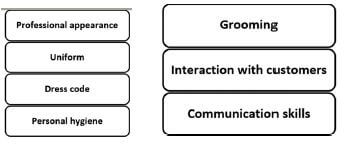
Professional appearance
- A professional appearance is key to making a good impression and creating a professional image of yourself and your company
Uniforms
- Staff uniforms must be appropriate to the image and type of company.

Dress Code
- If employees are not required to wear a uniform, they will still have to adhere to a dress code that specifies what they may or may not wear.
- Having a dress code ensures that staff still looks neat, tidy and professional even though they aren’t in uniform.

Personal hygiene
- Staff should be free of body odour and avoid strong fragrance.
- Nails and hair must be clean and neat.

Personal grooming
- Staff should be neatly groomed.
- Women should wear little make- up.
- Jewellery should be limited and must be appropriate.

Interaction with customers
- Staff must be always polite and courteous to guests.
- Excellent service can enhance a company’s image; poor service will damage a company’s image and business.
- Avoid bad habits, such as smoking in front of customers.

Communication Skills
- Whenever staff deals with customers, they are communicating, whether it is face to face, over the telephone, in writing or non-verbally (through body language).
- The way in which an employee speaks, presents information in person or in writing and/or their body language determines the impression that employee makes personally and of the company.
- Communicate confidently and honestly.
- Do not use slang or bad language.

Conditions of Employment
The Basic Conditions of Employment Act 75 of 1997
- It refers to the terms under which employer has employed a person.
- The Department of Labour is the South African Government responsible for matters related to employment.
- The Act applies to all employees and employers.
- The Act protects employees and employers by outlining the minimum basic working conditions.
- The Act gives effect to the right to fair labour practices.
- The basic conditions of employment contained in the Act form part of the employment contract between the employer and employee.
The Contract of Employment
- A contract of employment is a signed agreement between an employer and an employee.
- Signing a job contract signifies an agreement between the employer and employee.
- The contract of employment has rules that the employee should abide by when working for the company that has issued it.
Information Contained in The Contract of Employment.
Employer and employee details
- Employer’s full name and address
- Employee’s full name and address
Employment details
- Place of work
- Date on which employment starts
- Job title
- A brief description of the job including core duties
- Working hours
Remuneration and deductions
- Agreed minimum salary or wage
- Rate for overtime
- Frequency of payment (daily, weekly, monthly)
- Any deductions (UIF, medical aid, pension fund, trade union membership fees, home loan and tax e.g. PAYE)
Notice and contract period
- Period of contract
- otice period required from the employee as well as the employer, should either wish to terminate the contract
Leave details
- Any leave to which the worker is entitled
- This includes, but it is not limited to sick leave, annual leave, study leave, maternity leave, family responsibility leave
Uniform allowances
- Depending on the company policy, the employer could provide one uniform, more than one uniform, seasonal uniforms or the policy may stipulate that employees are entitled to a uniform allowance
Travel benefits
- This is a decision of the employer
- Some airlines provide discounted flight travel benefits to employees
- Some hotels may agree to a travel allowance for employees
- National Parks grant travel benefits to employees for the performance of official duties
Fringe benefits
- Fringe benefits are benefits in addition to an employee's wages.
- Any benefit offered to employees in exchange for their services (not including salary) is a fringe benefit
- Examples include: pension fund, medical scheme, unemployment insurance, disability insurance, vehicle allowance, study loans and bursaries
Professional accountability and responsibility
- The obligation/requirement to fulfil duties and accept responsibility for the consequences of actions and decisions, be they positive or negative.
Service ethics
- The moral principles that govern a company's conduct with its customers, potential customers and ex customers.
- They are based on a set of values relating to the question of what is “right” or “wrong.”
Disciplinary and grievance procedures
- A disciplinary procedure is used by an employer to address an employee's conduct or performance
- The aim of a disciplinary procedure is to encourage and maintain standards of conduct and ensure consistent and fair treatment for all e.g. verbal warning, written warning, firing an employee
- A grievance procedure is used to deal with a problem or complaint that an employee raises.
Signatures
- Signature of the employer
- Signature of the employee.
Purpose and value of a code of conduct
Code of conduct
- A code of conduct is a set of rules that provides guidance to all staff on what is acceptable behaviour.
- It contains procedures to follow in certain situations and requires certain behaviour.
The purpose of a code of conduct
- It spells out the expected conduct of staff in their performance of duties.
- Offers guidance for staff with ethical challenges.
- Guides behaviour.
- Acts as a public statement providing the customers of a business with an understanding of the ethics of the company.
The value of a code of conduct
- Creates a cooperative, collaborative atmosphere.
- Promotes integrity in the workplace.
- Creates agreed upon behaviours and methods of operation for the business.
- Leads to improved company performance if linked to the aims and objectives of the company.
- States the company’s unique set of values and beliefs.
- Can be used to create publicity and attract new customers, thus helping the organisation to grow.
TOURISM SECTORS: LEARNER ACTIVITIES
Study the information below and answer the questions that follow.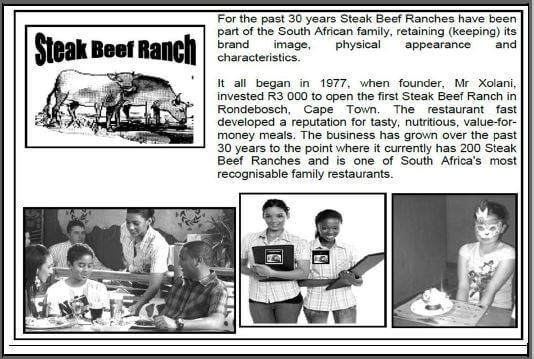
- Refer to the above extract and explain how this company succeeded in establishing a positive brand image through the following:
- It’s logo (2)
- The name of the business (2)
- The physical appearance of the business (2)
- The special attraction for parents with young children (2)
- State TWO advantages of the Steak Beef Ranches having a recognizable, positive image. (4)
- Refer to the photographs above and discuss TWO points that can form part of the dress code for waiters working at a Steak Beef Ranches restaurant. (4)[16]
Study the web designs underneath and rates them according to the criteria provided and the information in the extract:
WEB 1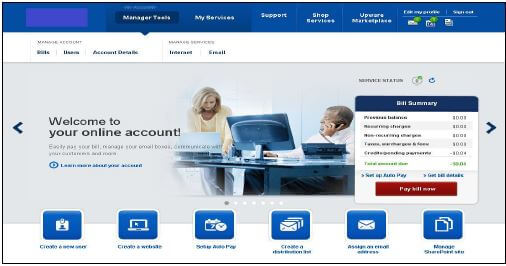
WEB 2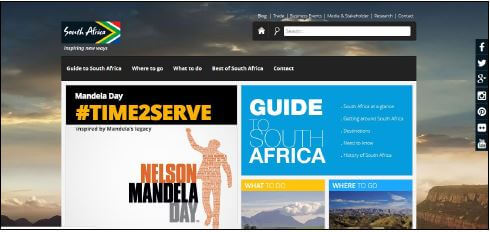
| CRITERIA | WEB 1 | WEB 2 |
| Image | ✓✓ | ✓✓ |
| Target audience | ✓✓ | ✓✓ |
| Usability | ✓✓ | ✓✓ |
| Layout | ✓✓ | ✓✓ |
| Content | ✓✓ | ✓✓ |
| Media | ✓✓ | ✓✓ |
[28]
Identify the problem in the cartoon taken from Cartoon Stock below and provide a possible solution, explaining two reasons for your answer. Your answer must be in a paragraph format. 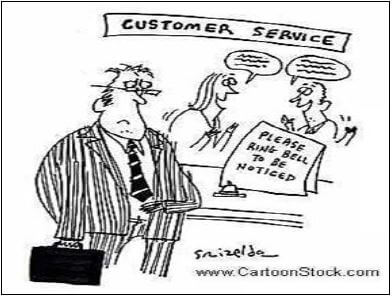
(5)
4.1. Study the picture below and answer the question that follows.
AFRICAN SKY HOTEL SPAS AND RESORTS African Sky Hotel Spas and Resorts is the great company to work for. They really look after the wellbeing of their employees. If you are in the lower to upper management you can enjoy the benefits of the use of the various properties and their facilities. There is a lot of passion within the company and hard workers are recognised through company incentives for example the company give workers fully paid holidays and they held year end functions where they award hard working employees. Great value system in place with the correct people. The company want to move forward and stay in line with technology and ever changing markets. |
4.1.1. Professional image is very important in ensuring the success of a business. What do you understand by the term professional image? (2)
4.1.2. In the extract, discuss two ways in which the African Sky Hotel Spas and Resorts motivate its employees. (4)
4.1.3. The employees play a huge role in attracting customers to their business. Suggest two ways in which employees can maintain the professional image of a business. (5)
4.1.4. Define the following conditions that are included in a contract of employment.
- Fringe benefits (2)
- Remuneration (2) [15]
5.1. Study the extract below and answer the questions that follow. 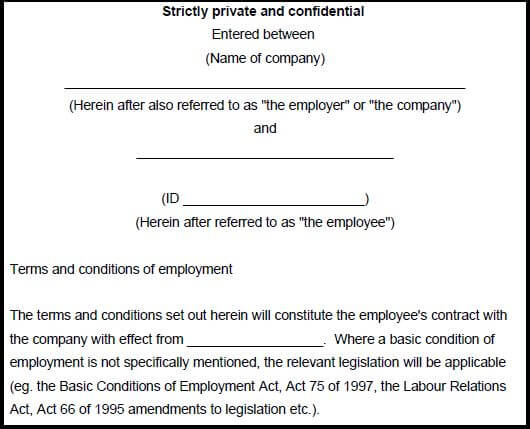
5.1.1. Identify the document from which this extract has been taken. (2)
5.1.2. ‘Many of the conditions of employment, such as leave and working hours, are governed by government legislation.’ Name the government legislation that is being referred to in this statement. (2)
5.1.3. The document mentioned in 5.1.1 is a vital agreement in the workplace. Explain why would you consider this document an essential in the workplace? (4)
5.2. Study the pictures of employees at the I CARE CAR RENTAL below and answer the questions that follow. 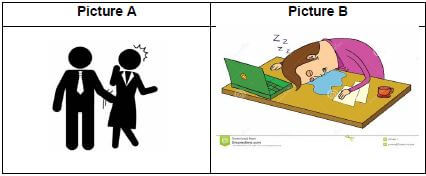
5.2.1. Identify the inappropriate behaviour shown in picture A and picture B. (2)
5.2.2. Discuss TWO ways in which the inappropriate behaviour of the staff members in the pictures above can impact negatively on the profitability of the I CARE CAR RENTAL Company. (2)
5.2.3.
- State the document that the company should have in place in order to prevent what is happening in the pictures shown above. (1)
- Explain the purpose of the document mentioned above. (2) [15]
Topic: Tourist attractions
Content: Famous world icons and attractions
| The difference between a tourist attraction and an icon | A tourist attraction is a place, an area, a building or an event of interest that tourists visit for its historical significance, cultural value, natural or human-made beauty or entertainment opportunities e.g. natural attractions (waterfalls, mountains, forests and wildlife) and human-made attractions (theme parks, festivals, historical buildings and statues). An icon in the tourism context is an attraction or feature that is world famous, has symbolic value and is closely associated with a particular destination. |
| Reasons why specific tourism attractions and/or physical features are regarded as icons |
|
| The economic significance of icons for a country/area | Some of the factors that contribute to the economic significance of icons are that they:
|
ICONS & ATTRACTIONS
| NAME OF ICON | Sydney Opera House | |
| COUNTRY | Australia | |
| CITY/ TOWN | City: Sydney | |
| WHY IT IS AN ICON? | It is universally recognised as an architectural masterpiece of the 20th century because of its design and construction. | |
| DESCRIPTION | It is located in Sydney Harbour, close to the Sydney Harbour Bridge. It’s creative roof design of interlocking “shells” are shaped like sails of a sailboat It is one of the most famous performing arts centres in the world The building houses five theatres, a recording studio, cafés, restaurants, bars and souvenir shops. | |
| NAME OF ICON | Ayers Rock / Uluru-Kata Tjuta National Park* | |
| COUNTRY | Australia | |
| CITY/ TOWN | State: Northern Territory | |
| WHY IT IS AN ICON? | Uluru or Ayers Rock is a unique, massive, round rock formation composed of hard, red sandstone. | |
| DESCRIPTION | Ayers Rock or Uluru lies in the Uluru-Kata Tjuta National Park in the Northern Territory of Australia. The park is named after Uluru, a single rock dome and Kata Tjuta, a range of rock domes. Formed through erosion over 500 million years, it is the most spectacular natural landmark in Australia. | |
| NAME OF ICON | The statue of Christ the Redeemer | |
| COUNTRY | Brazil | |
| CITY/ TOWN | City: Rio de Janeiro | |
| WHY IT IS AN ICON? | With its outstretched arms overlooking the city of Rio de Janeiro it is one of the most famous statues in the world and is known not only for its dramatic location and size, but also as a symbol of Christianity and peace. | |
| DESCRIPTION | The statue of Christ the Redeemer is situated on top of Corcovado Mountain At a height of 700 m it overlooks the city of Rio de Janeiro. It was built to commemorate the 100th anniversary of Brazil’s independence from Portugal in 1922 It offers spectacular views of the city, Sugar Loaf Mountain, the Maracana Soccer Stadium and the famous beaches of Copacabana and Ipanema | |
| NAME OF ICON | Niagra Falls | |
| COUNTRY | Canada and USA | |
| CITY/ TOWN | Niagara Falls, Ontanario (Canada)and Niagara Falls, New York (USA | |
| WHY IT IS AN ICON? | The Niagara Falls is the most famous waterfall in the world. It is one of the biggest and most powerful and receives more visitors than any other waterfall. | |
| DESCRIPTION | Niagara Falls on the Niagara River is located on the international border between the province of Ontario, Canada and the State of New York. | |
| NAME OF ICON | Colosseum | |
| COUNTRY | Italy | |
| CITY/ TOWN | City of Rome | |
| WHY IT IS AN ICON? | It is the largest amphitheatre constructed during the Roman Empire and is regarded as the greatest example of Roman engineering and architecture. It is nearly 2 000 years old. | |
| DESCRIPTION | It was originally known as the Flavian Amphitheatre. The Colosseum, which could seat over 50 000 people, was built to provide a place of entertainment for Roman citizens. | |
| NAME OF ICON | Learning Tower of Pisa | |
| COUNTRY | Italy | |
| CITY/ TOWN | City of Pisa | |
| WHY IT IS AN ICON? | Because of its beauty and the fact that it has tilted. It is the most recognisable structure in the world. | |
| DESCRIPTION | The Tower or campanile is one of three historic buildings located on the Piazza del Duomo (Cathedral Square). | |
| NAME OF ICON | Venice | |
| COUNTRY | Italy | |
| CITY/ TOWN | City Of Venice | |
| WHY IT IS AN ICON? | It was built on 118 small islands linked by canals and bridges, it is one of the most beautiful cities in the world and its famous for its architecture and art. | |
| DESCRIPTION | It is located in the lagoon on the shore of the northern Adriatic sea. | |
| NAME OF ICON | Vatican City | |
| COUNTRY | Italy | |
| CITY/ TOWN | Rome | |
| WHY IT IS AN ICON? | Vatican City also known as the Vatican, is the world smallest independent city state, the city of the Roman Catholic church and its ruled by its head, the Pope. | |
| DESCRIPTION | It was established in 1929 and is completely surrounded by the City of Rome. | |
| NAME OF ICON | The Great Pyramids of Giza | |
| COUNTRY | Egypt | |
| CITY/ TOWN | City of Giza | |
| WHY IT IS AN ICON? | They were constructed over 4500 years ago as massive tombs for the Egyptian pharaohs | |
| DESCRIPTION | There are nearly 1000 pyramids in Egypt. The three most famous pyramids are located near the Nile River. | |
| NAME OF ICON | The Sphinx | |
| COUNTRY | Egypt | |
| CITY/ TOWN | City of Giza | |
| WHY IT IS AN ICON? | It is a huge statue with the body of a lion and the head of human. | |
| DESCRIPTION | It is located in front of the Great Pyramid at Giza, 25 km from Cairo. Its exact construction date and purpose is not known. | |
| NAME OF ICON | Berlin Wall | |
| COUNTRY | Germany | |
| CITY/ TOWN | City of Berlin | |
| WHY IT IS AN ICON? | It was built in 1961, separating West Berlin from East Berlin. | |
| DESCRIPTION | In 1945, World War II came to an end with the defeat of Hitler’s Nazi Germany. Germany and the City of Berlin was divided into four allied (USA, Britain, France and the USSR) occupation zones. | |
| NAME OF ICON | Black Forest | |
| COUNTRY | Germany | |
| CITY/ TOWN | State : Baden-Wurttemberg | |
| WHY IT IS AN ICON? | It is known for its beautiful scenery consisting of mountains covered with pine and fir trees. | |
| DESCRIPTION | The region is 200 km long and 60 km wide and lies in the state of Baden-Wurttemberg is Southern Germany | |
| NAME OF ICON | The Dome of the Rock | |
| COUNTRY | Israel | |
| CITY/ TOWN | Jerusalem | |
| WHY IT IS AN ICON? | Is an Islamic shrine built on sacred rock. It is the third most holy site in the world for Muslims. | |
| DESCRIPTION | Is located on the Temple mount, is the oldest Islamic monument in the world. | |
| NAME OF ICON | The Wailing Wall | |
| COUNTRY | Israel | |
| CITY/ TOWN | Jerusalem | |
| WHY IT IS AN ICON? | It is located on the west of the Temple Mount in the old City of Jerusalem. The most holiest Jewish site in the world. | |
| DESCRIPTION | Also known as the Western Wall or Kotel (Hebrew), this 2000 year old wall is all that remains of a retaining wall that surrounded the second Temple built by Herold the Great. | |
| NAME OF ICON | The Great Wall of China | |
| COUNTRY | China | |
| CITY/ TOWN | Beijing | |
| WHY IT IS AN ICON? | It dates back 2000 years and is the world’s longest human made defence structure. | |
| DESCRIPTION | It was built between the 5th century BC and the 16th century AD by several Chinese emperors to protect China against invaders. | |
| NAME OF ICON | The Parthenon | |
| COUNTRY | Greece | |
| CITY/ TOWN | Athens | |
| WHY IT IS AN ICON? | It is the remains of a 2 500 year old temple located on the Acropolis, a hill overlooking the city of Athens. | |
| DESCRIPTION | The temple was built in honour of Greek goddess, Athena, the patron of Athens, for protecting Athens during war. | |
| NAME OF ICON | The Taj Mahal | |
| COUNTRY | India | |
| CITY/ TOWN | Agra | |
| WHY IT IS AN ICON? | The Taj Mahal is constructed of white marble. It was built by an Indian ruler as a symbol of his everlasting love for his deceased wife. | |
| DESCRIPTION | Shah Jahan, the Mughal Emperor of Southern Asia, ordered the construction of the Taj Mahal in 1631 to honour the memory of his favourite wife, Mumtaz Mahal, who died while giving birth to their 14th child. | |
| NAME OF ICON | The Blue Mosque | |
| COUNTRY | Turkey | |
| CITY/ TOWN | Istanbul | |
| WHY IT IS AN ICON? | The Blue Mosque in Istanbul, Turkey, with its cascading domes, decorated with ceramic blue tiles on the inside, its courtyards and six minarets, is considered one of the most beautiful mosques in the world. | |
| DESCRIPTION | The Blue Mosque was built by Sultan Ahmed I between 1609 and 1616. Its official name is the Sultan Ahmet Mosque. The 34 m-high main dome is surrounded by eight smaller cascading domes and semi-domes. | |
| NAME OF ICON | The Eiffel Tower | |
| COUNTRY | France | |
| CITY/ TOWN | Paris | |
| WHY IT IS AN ICON? | The Eiffel Tower is the world’s most famous tower and a symbol of Paris. It is the tallest structure in Paris and the most-visited tourist attraction in the world that charges an admission fee. | |
| DESCRIPTION | The Eiffel Tower is made from iron lattice and is situated on the southern bank of the Seine River in Paris, France. It was built by the French structural engineer Gustave Eiffel as an archway to the International Exhibition of Paris in 1889 and to celebrate the 100th anniversary of the French Revolution | |
| NAME OF ICON | The French Riviera | |
| COUNTRY | France | |
| CITY/ TOWN | Nice | |
| WHY IS IT AN ICON? | The French Riviera or Côte d’Azur is one of the most famous and luxurious coastal resort areas in the world. It lies on the Mediterranean coast of south-eastern France on the border with Italy. | |
| DESCRIPTION | The French Riviera is known for its blue water, scenic beauty, dramatic coastline, warm weather and beaches. | |
| NAME OF ICON | Mount Fuji | |
| COUNTRY | Japan | |
| CITY/ TOWN | Tokyo | |
| WHY IS IT AN ICON? | Mount Fuji is the highest mountain in Japan. This volcanic mountain is world famous for its near perfect symmetrical cone shape and is recognised as a symbol of Japan. | |
| DESCRIPTION | Mount Fuji is surrounded by five beautiful lakes and is in the Fuji-Hakone-Izu National Park approximately 100 km south-west of Tokyo, the Japanese capital. The volcano last erupted in 1707 but although it has been dormant since then, geologists still regard it as active. | |
| NAME OF ICON | Chichen Itza* | |
| COUNTRY | Mexico | |
| CITY/ TOWN | Region: Yucatán Peninsula | |
| WHY IS IT AN ICON? | Chichen Itza is the ruined remains of a large, ancient Mayan city. It is one of the best preserved archaeological sites of the ancient Mayan civilization | |
| DESCRIPTION | Chichen Itza lies on the Yucatán Peninsula in Mexico. With its stone temples, pyramids, astronomy observatory and ball courts Chichen Itza was a powerful Mayan political, spiritual, ceremonial and trading centre between 500 AD and 1100 AD. The city was later abandoned and visited by Mayan pilgrims only until the Spanish arrived in the 16th century. | |
| NAME OF ICON | Petra | |
| COUNTRY | Jordan | |
| CITY/ TOWN | Wadi Musa | |
| WHY IS IT AN ICON? | This desert city, hidden in a narrow valley between mountains, has been carved from solid rock, making it one of the most spectacular ancient cities in the world. Petra, which means “rock” in Greek, was constructed around 100 BC as the capital city of the | |
| DESCRIPTION | Petra is located outside the town of Wadi Musa in southern Jordan. From 600 BC to 106 AD the Nabateans settled in Petra and developed it into a wealthy caravan trading centre that linked the spice and silk routes of China, India and Arabia with Egypt, Syria, Greece and Rome. | |
| NAME OF ICON | Mount Everest | |
| COUNTRY | Nepal | |
| CITY/ TOWN | Kathmandu | |
| WHY IT IS AN ICON? | Mount Everest is the highest mountain in the world. The peak is 8 848 m above sea level. | |
| DESCRIPTION | Mount Everest lies on the border between Nepal and Tibet (China) in South Asia and forms part of the Himalaya mountain range. This 60-million-yearold mountain is always covered with ice and snow. Its peak is shaped like a pyramid. | |
| NAME OF ICON | Mecca | |
| COUNTRY | Saudi Arabia | |
| CITY/ TOWN | Mecca | |
| WHY IT IS AN ICON? | Mecca, the most sacred city of the Islam faith, is the spiritual centre of all Muslims. It is the birthplace of the Prophet Muhammad, the founder of the Islamic faith, and the focal point of Muslim pilgrimage. | |
| DESCRIPTION | The most holy site in Mecca is the Kaaba, located in the courtyard of the Masjid al Haram (Grand Mosque), the holiest mosque in the world. | |
| NAME OF ICON | The Swiss Alps | |
| COUNTRY | Switzerland | |
| CITY/ TOWN | Area: Cantons of Berne and Valais | |
| WHY IT IS AN ICON? | The Swiss Alps Jungfrau-Aletsch is a protected area in south-western Switzerland. This beautiful region has high mountain peaks that are permanently covered in snow, glaciers and valleys. | |
| DESCRIPTION | The Jungrau-Aletsch is located between the cities of Interlaken and Brig in the Swiss cantons of Berne and Valais. There are nine mountains of over 4 000 m high each in the region. Of these, the peaks of Eigar, Monch and Jungfrau are the most spectacular. | |
| NAME OF ICON | Windmills | |
| COUNTRY | The Netherlands | |
| CITY/ TOWN | Area: All over the Netherlands | |
| WHY IT IS AN ICON? | Windmills are one of the main symbols associated with the Netherlands. Not only are they characteristic of the Dutch landscape, they are also a symbol of the Dutch struggle against water. | |
| DESCRIPTION | Windmills in the Netherlands date back to the 14th century and there were over 10 000 in use by the early 20th century. | |
| NAME OF ICON | Machu Picchu | |
| COUNTRY | Peru | |
| CITY/ TOWN | Cuzco | |
| WHY IT IS AN ICON? | Machu Picchu, an ancient Inca city in the Andes Mountain in Peru, is one of the most important and mysterious archaeological sites in the world. | |
| DESCRIPTION | Machu Picchu is located in the Andes Mountains, 80 km from the city of Cuzco in Peru. It lies at 2 430 m above sea level. | |
| NAME OF ICON | Auschwitz | |
| COUNTRY | Poland | |
| CITY/ TOWN | Auschwitz | |
| WHY IT IS AN ICON? | Auschwitz was Nazi Germany’s largest concentration camp, forced labour and extermination camp complex in Europe from 1940 to 1945 | |
| DESCRIPTION | Auschwitz in southern Poland is the town where the Nazis established their largest concentration camps after invading Poland in 1939. | |
| NAME OF ICON | The Algarve | |
| COUNTRY | Portugal | |
| CITY/ TOWN | Faro | |
| WHY IT IS AN ICON? | The Algarve is Portugal’s most popular tourist region and one of Europe’s favourite holiday destinations. This region is renowned for the natural beauty of its dramatic coastline, sunny weather, excellent beaches, opportunities for outdoor activities and great food. | |
| DESCRIPTION | The Algarve lies on the southern tip of Portugal with the Atlantic Ocean as its southern and western border. | |
| NAME OF ICON | Alcazar of Segovia | |
| COUNTRY | Spain | |
| CITY/ TOWN | Segovia | |
| WHY IT IS AN ICON? | The Alcázar of Segovia is the most recognisable fortress castle in Spain. It is built on top of a huge rocky hill and shaped like the bow of a ship. This fortress dates back centuries and is one of the most visited monuments in Spain. | |
| DESCRIPTION | -The Alcázar (castle) lies in the old city of Segovia in the province of Segovia in Spain. Originally built as a wooden fortress by the Arabs during their occupation of Spain, it was recaptured by the Spanish who rebuilt it as a stone structure in the 12th century. | |
| NAME OF ICON | Bull fights | |
| COUNTRY | Spain | |
| CITY/ TOWN | Madrid, Seville and Pamplona | |
| WHY IT IS AN ICON? | The practice of bullfighting, in which a bullfighter in the public display provokes and then kills a bull with a sword, is universally associated with Spain’s history and culture. | |
| DESCRIPTION | Bullfights take place in a large outdoor arena. When the bull (toro) enters the ring the bullfighter (matador), who is carrying a cape and sword, wearing a colourful embroidered silk costume, provokes it. | |
| NAME OF ICON | Floating markets | |
| COUNTRY | Thailand | |
| CITY/ TOWN | Bangkok | |
| WHY IT IS AN ICON? | The colourful and vibrant floating markets where traders sell their goods from their boats on the rivers and canals have become a symbol of the traditional way of life in Thailand | |
| DESCRIPTION | Floating markets (Talaat Naam) are known for the Thai women dressed in blue shirts (Mor Hom) and flat topped hats (Muak Nob) who paddle alongside the canal. | |
| NAME OF ICON | The Kremlin | |
| COUNTRY | Russia | |
| CITY/ TOWN | Moscow | |
| WHY IT IS AN ICON? | The Kremlin is a fortified complex of buildings in the city of Moscow. | |
| DESCRIPTION | The Kremlin lies on a hill in the centre of Moscow, on the Moscow River. It is surrounded by a 2,2 km-long red brick wall and 20 defensive towers forming an irregular triangle. Cathedral Square is at the centre of the Kremlin. | |
| NAME OF ICON | The Red Square | |
| COUNTRY | Russia | |
| CITY/ TOWN | Moscow | |
| WHY IT IS AN ICON? | The Red Square in the centre of Moscow, is a large public square surrounded by significant buildings. It has been the site of many historical events since the 15th century and is considered to be the most famous tourist attraction in Moscow. | |
| DESCRIPTION | The Red Square separates the Kremlin from the rest of the city of Moscow. Landmarks surrounding the Red Square include the brightly domed Basil’s Cathedral, Lenin’s mausoleum containing the embalmed body of Vladimir Ilyich Lenin (the founder of the Soviet Union), the State Historical Museum, Kazan Cathedral and GUM, the city’s famous department store. | |
| NAME OF ICON | Big Ben | |
| COUNTRY | United Kingdom | |
| CITY/ TOWN | London | |
| WHY IT IS AN ICON? | Popularly referred to as Big Ben, the Elizabeth Tower of the Palace of Westminster is recognised worldwide as a symbol of the city of London and the United Kingdom | |
| DESCRIPTION | The Palace of Westminster, with its neo-Gothic architecture and more than 1 000 rooms, is built on the banks of the Thames River in London. It is the home of the British Houses of Parliament called the House of Commons and the House of Lords. The 93 m, free-standing Elizabeth Tower at the northeast of the Palace of Westminster houses the Great Clock of Westminster or Big Ben that has four faces. | |
| NAME OF ICON | Buckingham Palace | |
| COUNTRY | United Kingdom | |
| CITY/ TOWN | London | |
| WHY IT IS AN ICON? | Buckingham Palace is the official residence and administrative headquarters of the British monarch. It is a major tourist attraction in London. | |
| DESCRIPTION | Built as a house for the Duke of Buckingham in 1703, the palace became the royal residence in 1837 when Queen Victoria ascended the throne. Queen Elizabeth II has been the reigning monarch since 1952. | |
| NAME OF ICON | Tower of London | |
| COUNTRY | United Kingdom | |
| CITY/ TOWN | London | |
| WHY IT IS AN ICON? | The Tower of London is an ancient fortress palace complex and one of the oldest buildings in London. It is a symbol of royal power dating back to the 11th century. | |
| DESCRIPTION | It is not just a single tower, but a complex of many buildings added by other kings until its completion. Two defensive walls and towers surround the tower. | |
| NAME OF ICON | Tower Bridge | |
| COUNTRY | United Kingdom | |
| CITY/ TOWN | London | |
| WHY IT IS AN ICON? | London's Tower Bridge is one of the most recognizable bridges in the world. Tower Bridge (built 1886–1894) is a combined bascule and suspension bridge in London which crosses the River Thames. | |
| DESCRIPTION | The bridge consists of two towers tied together at the upper level by means of two horizontal walkways. It took 8 years, 5 major contractors and the relentless labour of 432 construction workers to build theTower Bridge. When it was built, Tower Bridge was the largest and most sophisticated bascule bridge ever completed ("bascule" comes from the French for "see-saw"). These bascules were operated by hydraulics, using steam to power the enormous pumping engines. In 1982 the Tower Bridge opened to the public for the first time since 1910, with a permanent exhibition inside called The Tower Bridge Experience | |
| NAME OF ICON | The Statue of Liberty | |
| COUNTRY | USA | |
| CITY/ TOWN | New York | |
| WHY IT IS AN ICON? | The Statue of Liberty was a gift from France to the USA. It has become one of the most recognisable landmarks in the world. | |
| DESCRIPTION | The Statue of Liberty is a huge sculpture of a robed woman wearing a crown, holding a lit torch in her right hand and a tablet in her left hand. At her feet is a broken chain. | |
| NAME OF ICON | The Grand Canyon | |
| COUNTRY | USA | |
| CITY/ TOWN | Arizona | |
| WHY IT IS AN ICON? | The Grand Canyon is one of the largest gorges in the world. With its overwhelming size and magnificent landscape, it is one of the most spectacular natural wonders | |
| DESCRIPTION | The Grand Canyon lies in the Grand Canyon National Park in the state of Arizona, USA. | |
1.1.1 The Black Forest is located in …
- Switzerland
- Germany
- Russia
- Turkey
1.1.2 This world icon is one of the seven new wonders of the world:
- Machu Picchu
- Eiffel Tower
- The Sphinx
- Big Ben
1.1.3 … is the ruined remains of a large, ancient Mayan city
- Taj Mahal
- Cuzco
- Vatican City
- Chichen Itza
1.1.4 An example of universal accessibility at an attraction:
- The restaurant offers kosher dishes
- Toilet facilities are provided for people in wheelchairs
- Staff members are able to communicate with visitors in a variety of international languages
- All of the above
1.1.5 Gondolas and canals are associated with this city:
- New York
- Johannesburg
- Moscow
- Venice
1.1.6 A factor that contributes to Machu Picchu being a successful tourist attraction:
- Machu Picchu limits the number of tourists visiting the attraction.
- Tourists to Machu Picchu are offered free accommodation.
- Tourists on wheelchairs are not allowed to visit Machu Picchu.
- Machu Picchu does not advertise their tourist packages.
1.2 Choose the correct word(s) from those given in brackets. Write only the word(s) next to the question number (1.2.1–1.2.5) in the ANSWER BOOK.
1.2.1 (The Dome of the Rock/Ayers Rock) is a unique natural landmark, composed of hard, red sandstone that lies in the Uluru-Kata Tjuta National Park.
1.2.2 The (Alcázar of Segovia/Parthenon) is considered to be the most beautiful castle in Spain.
1.2.3 Tourists interested in ancient civilisations must travel to Jordan to explore (the Kremlin/Petra).
1.2.4 (The Blue Mosque/Mecca) is regarded as the spiritual centre of the Muslim faith.
1.2.5 (Mount Everest/Mount Fuji) is a nearly perfectly shaped volcano that is worshiped as a sacred mountain by Buddhists.
1.3![]()
![]()
1.3.1 State the continent where icons A and D are located and provide their correct names. (3)
1.3.2 Name the country where the above mentioned (1.3.1) icons are found. (1)
1.3.3 Provide the name of the activity experienced in icon E. (1)
1.3.4 Explain the structural condition of icon C. (1)
1.3.5 Give the continent and country where world icon B located? (2)
1.3.6 The crowns jewels are associated with this icon. Write the letter and the name of this icon. (2)
A Lesson in Project Failure: Sydney's National Opera House
You can't tell from looking at it, but Sydney Australia's iconic Opera House is actually a study in a project failure. Its original plan had a four-year timetable and an AU $7 million budget, but in the end, it took AU $102 million and 14 years to complete.
Fortunately, the final product more than met the expectations of Opera-goers, the world's architectural community, and ultimately the Australian government, which recouped the massive cost after only two years. How the project rolled out over time offers a series of abject lessons in how not to manage a construction (or any kind of) project.![]()
The Opera House project failed because it did not follow any of the processes that normally signify proper project management and accounting processes:
Inadequate resource management planning resulted in no one dedicated person responsible for project activities, and the budget was at best a suggestion.
No management and no accounting expectations lead to excessive and wasteful materials costs. No resource scheduling lead to delays at all stages of the project's development.
- What other icon is found in Australia other than the one mentioned in the case study? (1)
- Why is Sydney Opera House regarded as a failed project? (2)
- From the extract identify two problems hindering the success of Sydney Opera House project. (4)
- For each of the above mentioned problems hindering the success, recommend the solutions for them. (4)[11]
T H E N E G A T I V E I M P A C T S O F O V E R T O U R I S M![]()
When I visited Cairo a few years ago, dozens of air-conditioned tour buses swarmed around the Giza plateau, the museum, and tourist hotspots like Khan El Khalili every single day. They congested the roads around these attractions even more than usual, attracting exploitative cottage industries such as touts, papyrus factory tours, and unethical camel rides. The result has created a massive work and monetary imbalance in the city.
More recently, the tourism industry in and around Cairo has suffered a massive blow. Overblown safety warnings and fears have caused the local economy to crash. As Egyptian tourism starts to recover, Cairo and Giza should take a step back and learn from their past mistakes. This is their chance to embrace responsible tourism, controlling visitor numbers and encouraging travelers to explore the ancient history and culture of the whole area, not just a few tourist hotspots. –Mike Huxley of Bemused Backpacker
- From the case study above identify the name of the icon and the continent it is located (2)
- From the extract above identify the problem that is threatening the sustainability of the above mentioned icon (2)
- Advise the Egyptian authorities on two measure that would ensure the continuity success of the above attraction(4)
TOUR PLANNING
- Itinerary – is a detailed plan of the tourist’s journey.
- Tourist profile – is an indication of the tourists’ wants and needs.
- Element of a client profile
- Name, Gender, Age, Budget, Nationality, Location, Occupation, Purpose of visit, Type of tourist, Special needs
- Route planning – Why it is important when compiling a tour plan?
- It saves time, so that they can spend less time on travelling and more time on activities and attractions.
- It is logical and easy to follow
- Its economical
- Importance of having a budget in place when preparing a tour plan
- To be able to know all the different costs that they will have when they embark on their journey.
- A budget will help the tourist plan their trip effectively.
- Aspects /element of an itinerary
- Accommodation
- Transport
- Attractions and activities
- Meals
- Budget
- Number of people travelling
- Route to be taken
- Time of year
- No. of days
- COMPILING A TOUR BUDGET
A tour budget is a document that specifies all the costs of a tour. Preparing a tour budget will give you an idea of expected costs. Therefore, the tour budget will serve as a basis for the final costing of the tour. The development of a tour is dependent on a combination of factors,including:- The type of tour
- The tour group
- Transport
- Accommodation
- Sundry expenses
- HEALTH AND SAFETY
The tourist’s health and safety refers to the well-being or welfare and safety of visitors; from their places of origins to destinations and most importantly during their stay at their destination of choice.
Travellers must be aware about health and safety issues and precautions when travelling. It is important that the destination continues to inform them so that tourists can take necessary precautions.
Precautions and vaccinationsDISEASES PRECAUTIONS SYMPTOMS Malaria (an infectious disease caused by being bitten by a mosquito carrying the parasite). ❖ take anti-malaria tablets, use a mosquito repellent
❖ avoid outdoor activities from dust to dawn
❖ wear protective clothingflu-like symptoms, headaches, vomiting Cholera (a bacterial infection that passes into the body when one drinks infected water). ❖ use sealed bottled water
❖ boil water before using it.Diarrhoea, vomiting, dehydration Bilharzia (waterborne disease caused by parasites found in
streams, lakes and rivers)❖ Look out for signs that warn of contaminated water in dams Skin rash within few hours of contact with water
followed by feverYellow fever (transmitted by a bite of a female mosquito in South America Northern Africa) ❖ Avoid mosquito bite in affected areas Fever, nausea, pain Hepatitis A (viral infection of the liver transmitted through direct person person contact) ❖ Avoid ice and shell fish from contaminated water
❖ Boil water and cook food
❖ Do not eat raw fruits and vegetables that are contaminated with sewerageHepatitis B (a chronic liver infection that is deadly, transmitted from person to person contact through body fluids, especially bloods and through unprotected sexual contact; transfusion of contaminated blood, tattooing or other skin piercing procedures, by sharing needles, and also from mother to baby) ❖ Practice safe sex
❖ Avoid contaminated instruments for injections or skin piercing. - Compulsory vaccinations and recommended vaccinations
❖ Compulsory vaccinations are regulated according to identified threats found in some countries. To contain the spreading of a high risk disease.
❖ Recommended vaccinations are just precautionary measures to ensure the health of individual tourists and are optional. They are not a measure for high risk diseases.- Places where tourists can get healthcare information:
- Internet
- Travel clinics
- Travel agencies
- Tourism Information offices
- Airports
- Libraries
- Travel magazines
- Travel websites
- SAFETY TIPS
- On the street
- Do not display your valuables.
- Do not accept lifts from strangers.
- Use credit cards or carry small amounts of cash.
- In the car
- Do not give lifts to strangers.
- Never display your valuables in the car.
- Drive within the speed limit of the road.
- In the hotel
- Do not leave your luggage unattended.
- Keep your room door locked at all times.
- Check who is at the door before opening it.
- Check your credit card if you use it in the hotel.
- At the airport
- Always keep your bags where you can see them.
- Make sure all your bags have locks.
- Do not allow anyone to check your bags except for designated security officers.
- Don’t carry goods through customs of a stranger.
- In public places
- Be aware of your surroundings.
- Become familiar with the local police services.
- Ensure you use registered qualified guides.
- After dark
- Avoid isolated places at night.
- Always travel in groups.
- Use well-known public transport.
- Ensure that your cell phone is charged.
- On the street
- Places where tourists can get healthcare information:
When travelling it is important to research the health requirements of one’s destination, as well as the precautions one should take. Safety is an important factor to consider when travelling. These factors play an important part in the decisions that tourists take when travelling.
TOUR PLANNING MIND MAP
![]()
ACTIVITIES
QUESTION 1
1.1 Four options are provided as possible answers to the following questions. Choose the answer and write only the letter (A-D) next to the question number (1.1.1-1.1.20) in the ANSWER BOOK, e.g. 1.1.21 A.
1.1.1 When planning an itinerary a tour planner should take into account that travellers on international flights must check in for their flight ... prior to departure.
- 30 minutes
- 90 minutes
- 2 to 3 hours
- 1 to 2 hours
1.1.2 A disease contracted in the same way as HIV Aids:
- Hepatitis A
- Hepatitis B
- Malaria
- Cholera
1.1.3 The disease caused by drinking contaminated (polluted) water:
- Malaria
- Yellow fever
- Cholera
- Bird flu
1.1.4 The... virus, found mainly in South America, caused panic in the tourism industry in 2016.
- bird flu
- SARS
- Ebola
- Zika
1.1.5 Name the function of the organisation represented by the following logo:![]()
- Informs tourists about health regulations
- Informs tourism role-players about global tourism statistics
- Regulates air travel in the aviation industry
- Regulates trading in endangered species
1.2 Choose a concept provided in the list that best completes the sentences below. You may only use each of the concepts given ONCE. Write only the concept next to the question number (1.2.1-1.2.4) in the ANSWER BOOK
Yellow fever, TB, HIV AIDS, Bilharzia, Malaria, Hepatitis B, visa, Hepatitis A, HIV, Cholera
1.2.1 Use of insect repellent on exposed skin, staying indoors, spraying an aerosol insecticide in the sleeping area or burning of mosquito coils
and mosquito mats are precautionary measures against contracting ...
1.2.2 Transmitted by a bite of a female mosquito in South America and Northem Africa
1.2.3 Prolonged coughing, difficulty in breathing and chest and joint pain are symptoms of
1.2.4 Avoiding potentially contaminated rivers and not drinking or washing in contaminated water are precautionary measures against contracting (4 x 1) (4)
1.3 It is important to compile a client profile before developing an itinerary for a tourist
1.3.1 Give ONE reason why it is important to compile a profile for Mr Jackson before developing his itinerary. (2)
Mr Jackson wants to take biltong (dried meat) to Germany as a Proudly South African gift for his German friend. He was informed that meat products are prohibited from being taken into Germany.
1.3.2 Give TWO reasons why Germany do not allow meat products into the country.
1.4![]()
1.4.1 Advise Mr Jackson on TWO safety precautions he should consider when in the hotel.(4)
1.4.2 State TWO consequences for the hotel if guests are not adequately informed on safety and security issues during their stay. (4)
QUESTION 2
Read the extract and answer the questions that follow.![]()
2.1 The above-mentioned tour is an example of a package tour. Do you agree with this statement? Motivate your answer. (2)
2.2 Taking the activities into account, identify ONE type of tourist that would consider going on this tour. (1)
2.3 Explain the term inclusions used in the extract. (1)
2.4 Advise a tourist making a booking on this tour regarding TWO items that he/she should pack before departure. (2 x 1) (2)
Understanding Time Zones Grade 12 - Tourism Grade 12 Study Guide
Understanding Time Zones
Developed by E.Engelbrecht
WHAT DOES THE CAPS REQUIRE?
CURRICULUM AND ASSESSMENT POLICY STATEMENT
| 9 | Map work and tour planning | World time zones:
|
| 10 | Map work and tour planning | Calculations of world times when travelling between countries:
|
WORLD MAP & CARDINAL POINTS
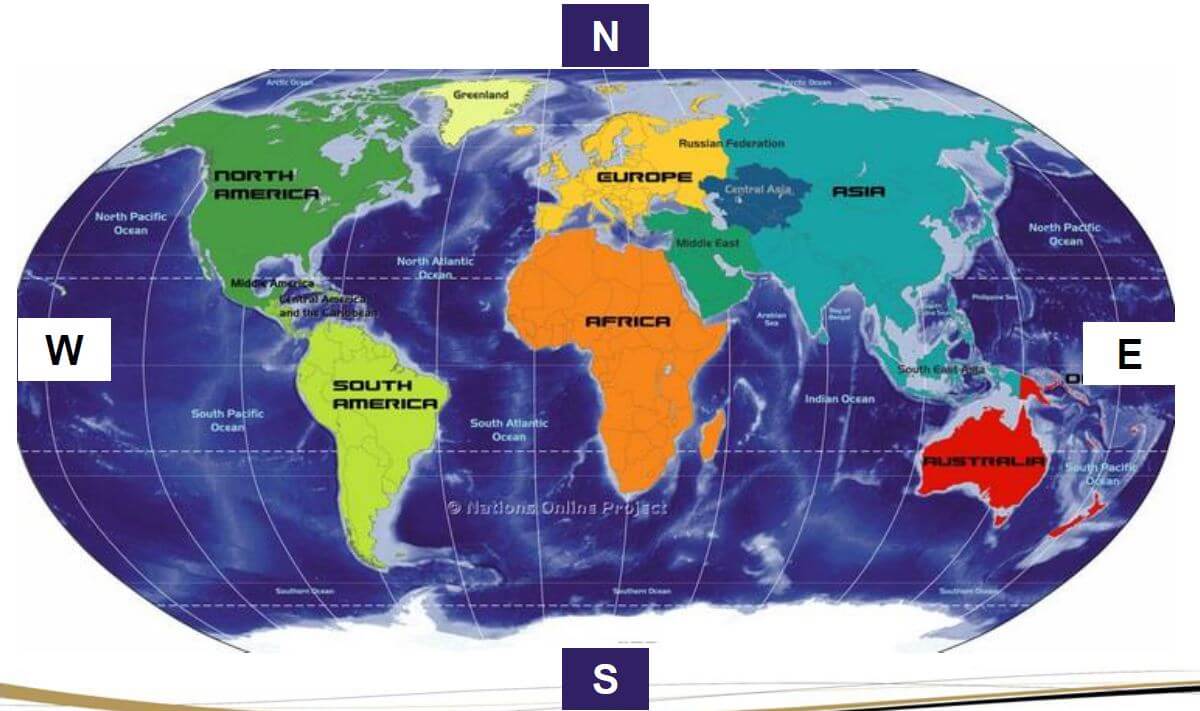
EARTH REVOLVES AROUND THE SUN
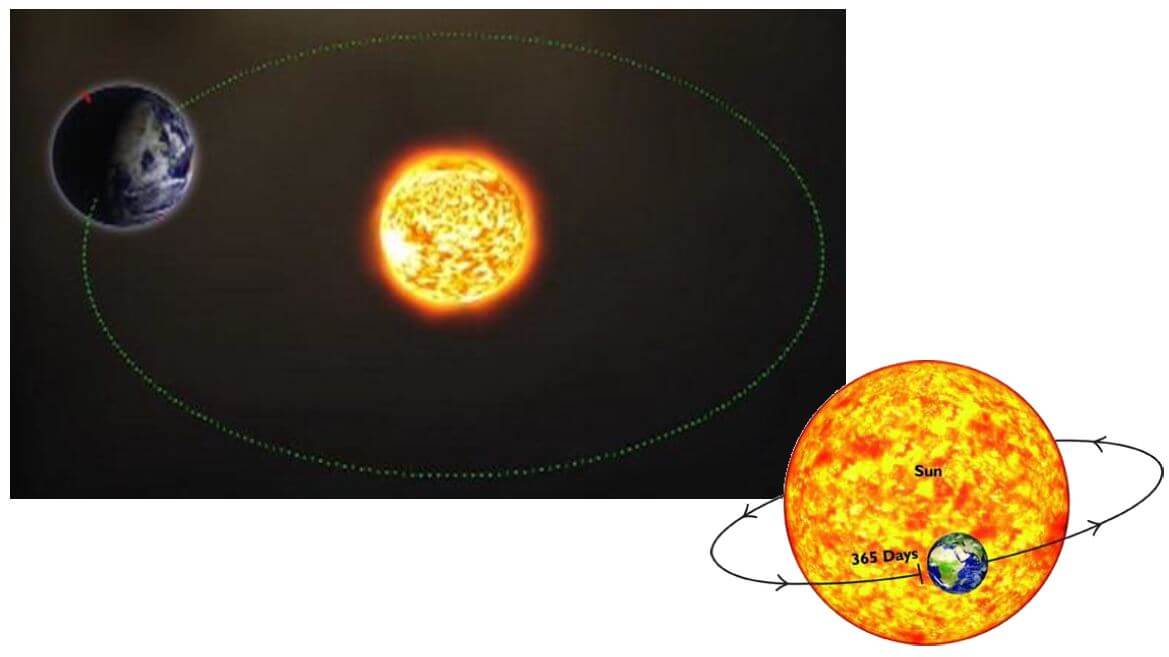
ROTATION OF THE EARTH
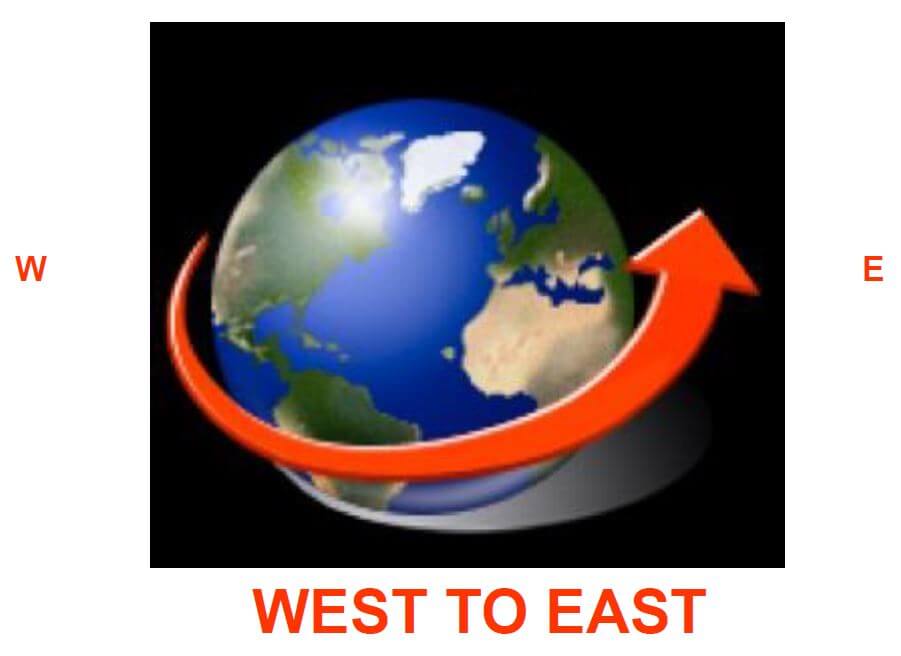
DAY AND NIGHT ON EARTH

DEMONSTRATING TIME ZONES
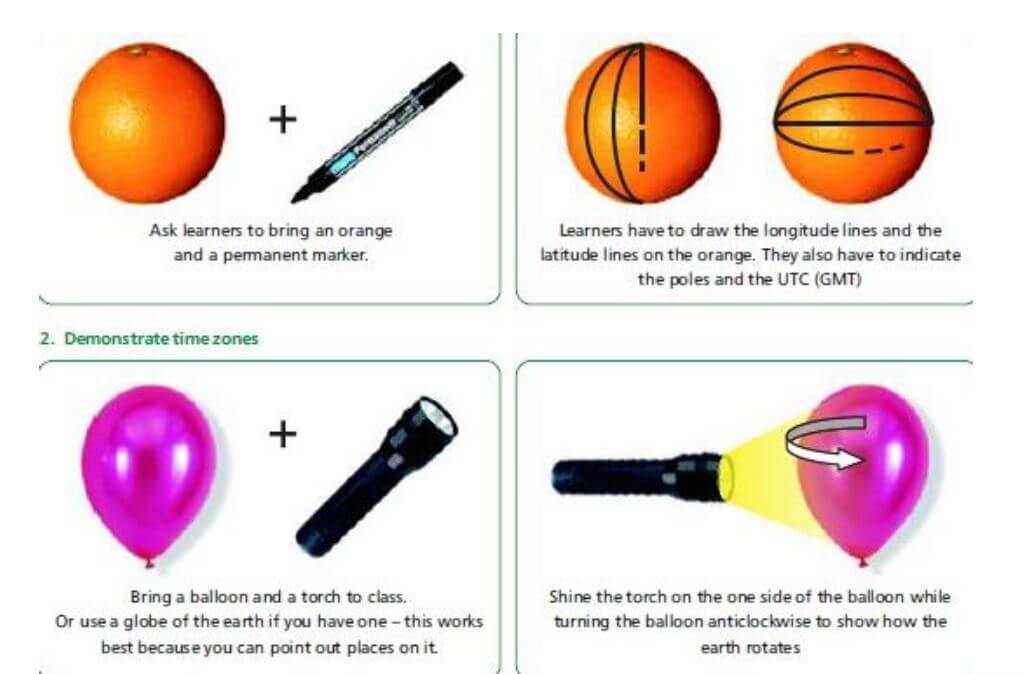
LINES OF LONGITUDE
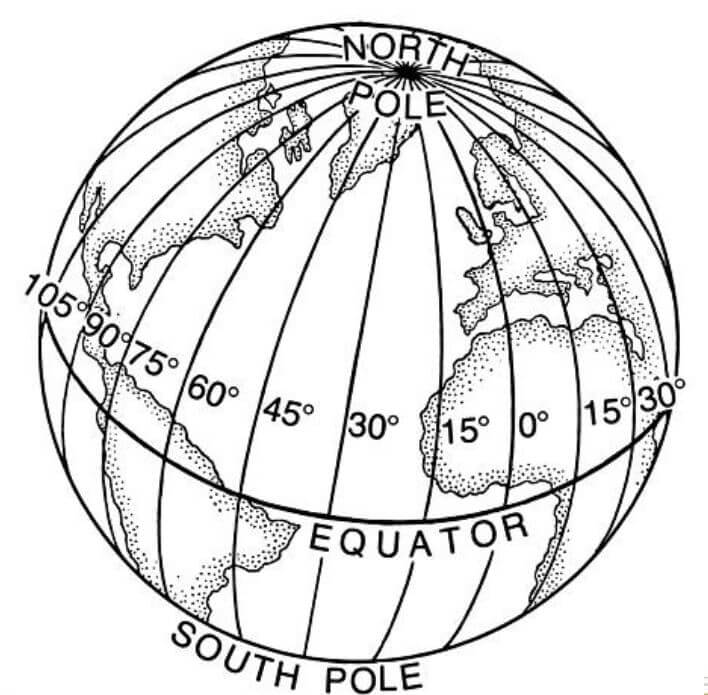
24 LINES OF LONGITUDE
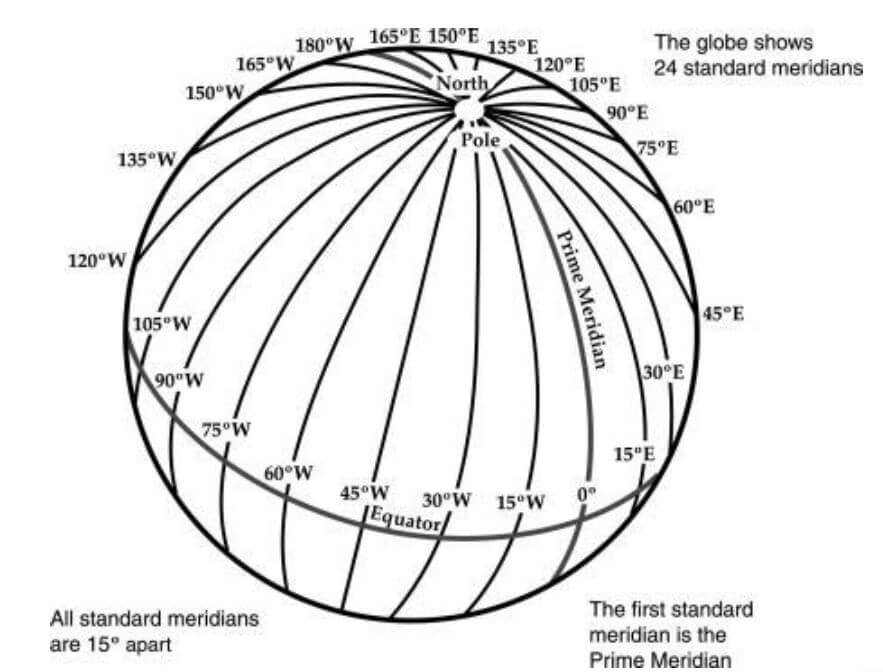
THE 0º LINE OF LONGITUDE
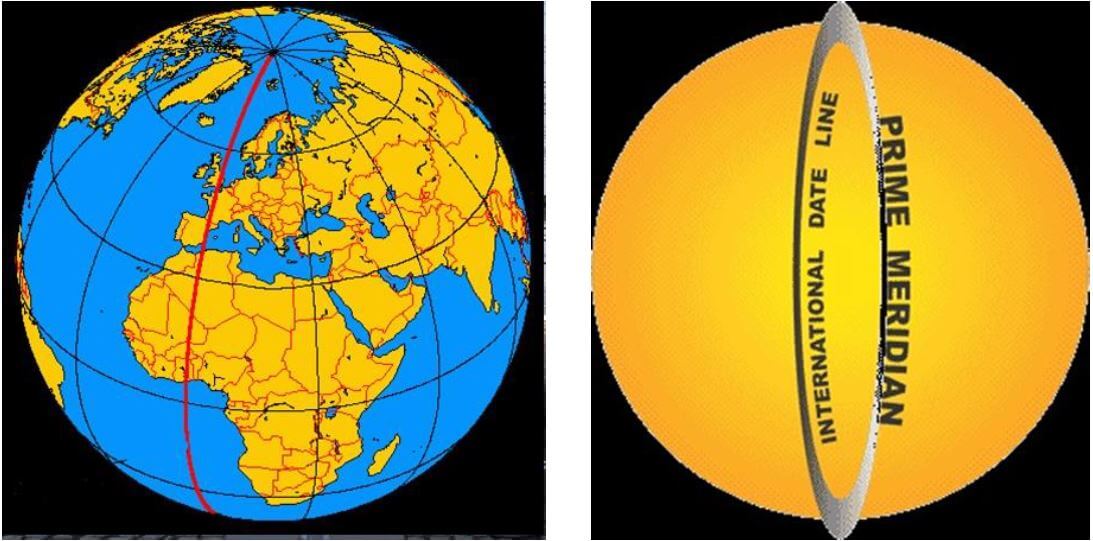
GREENWICH
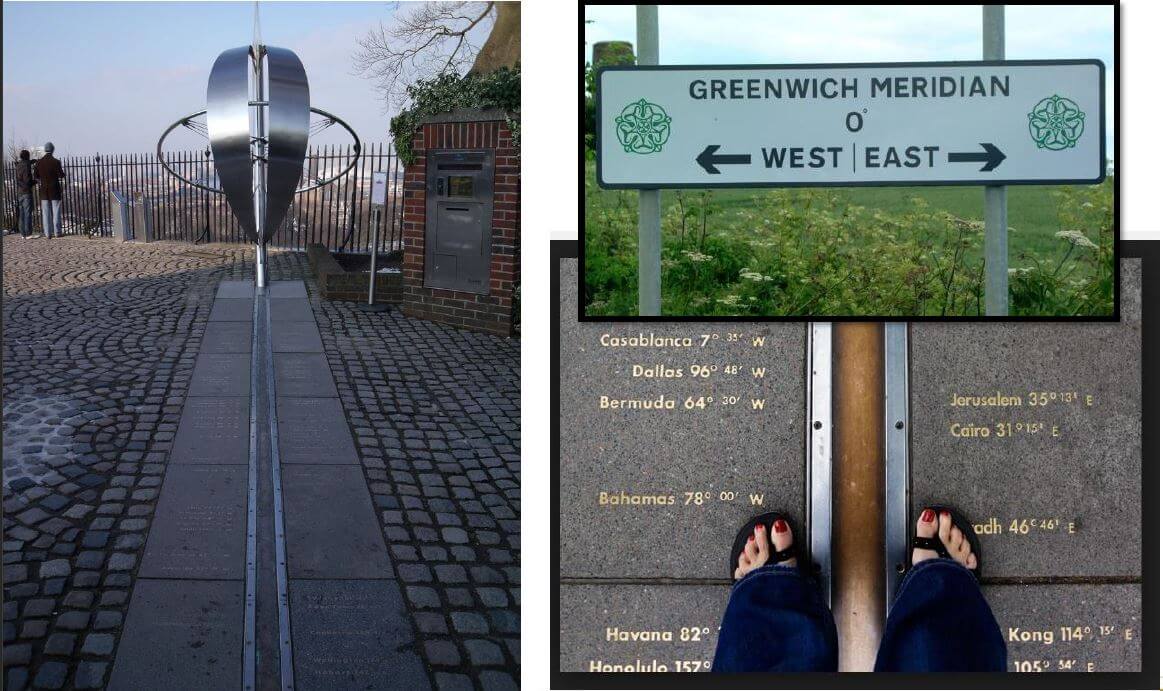
INTERNATIONAL DATE LINE (IDL)
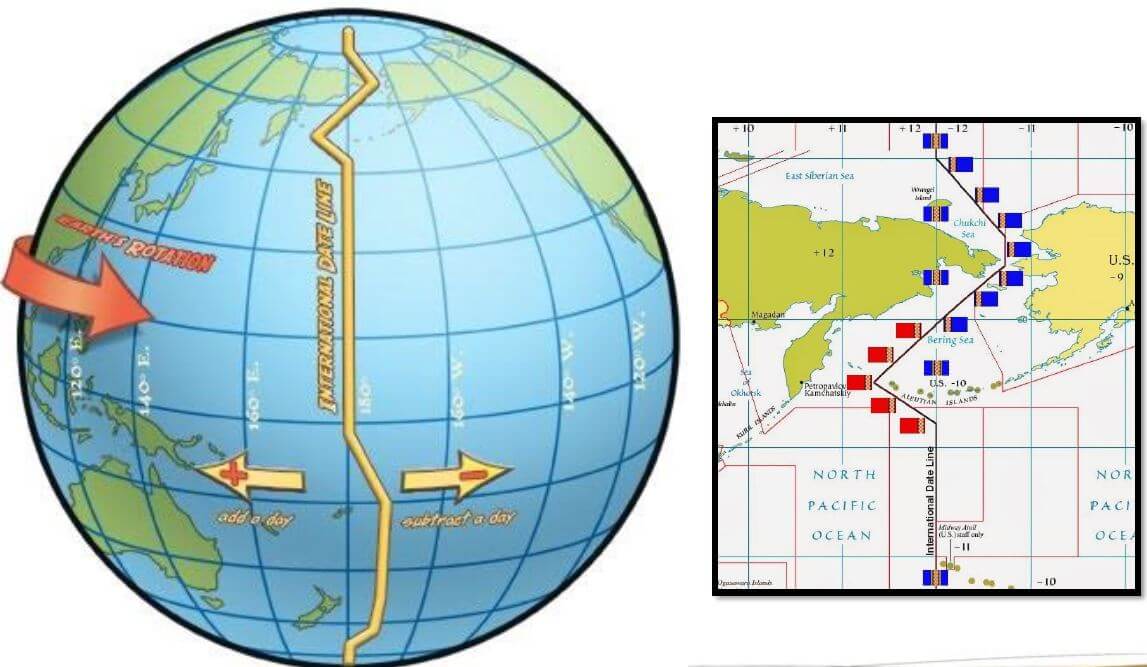
TIME ZONE MAP
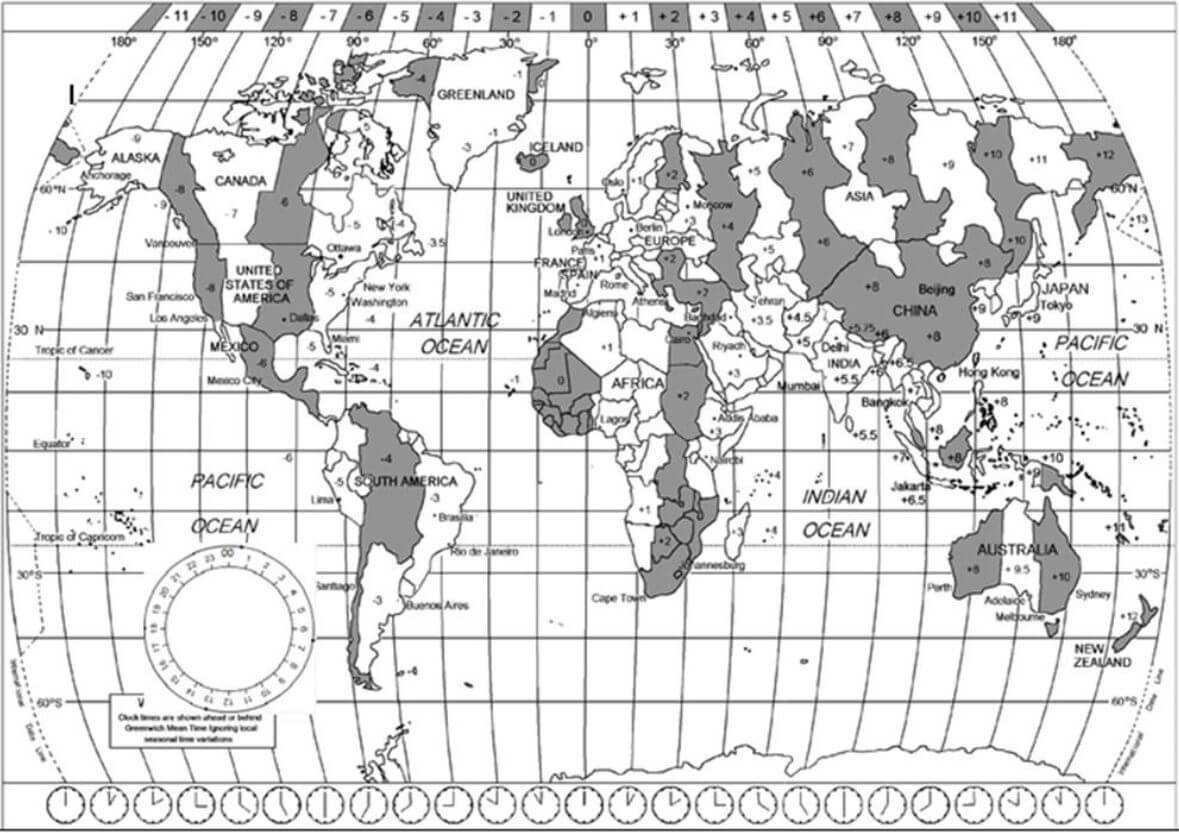
THE 24-HOUR CLOCK
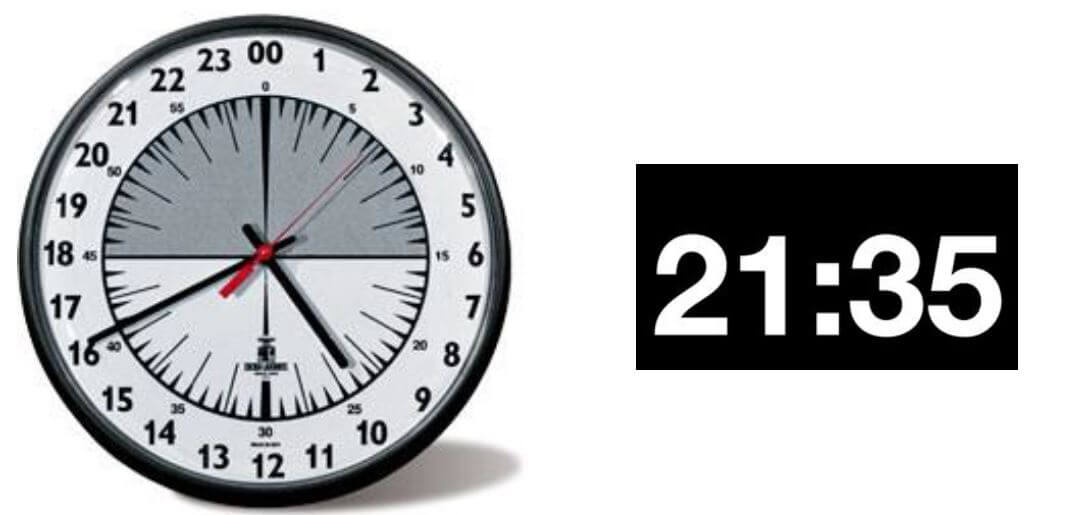
TIME DIFFERENCES
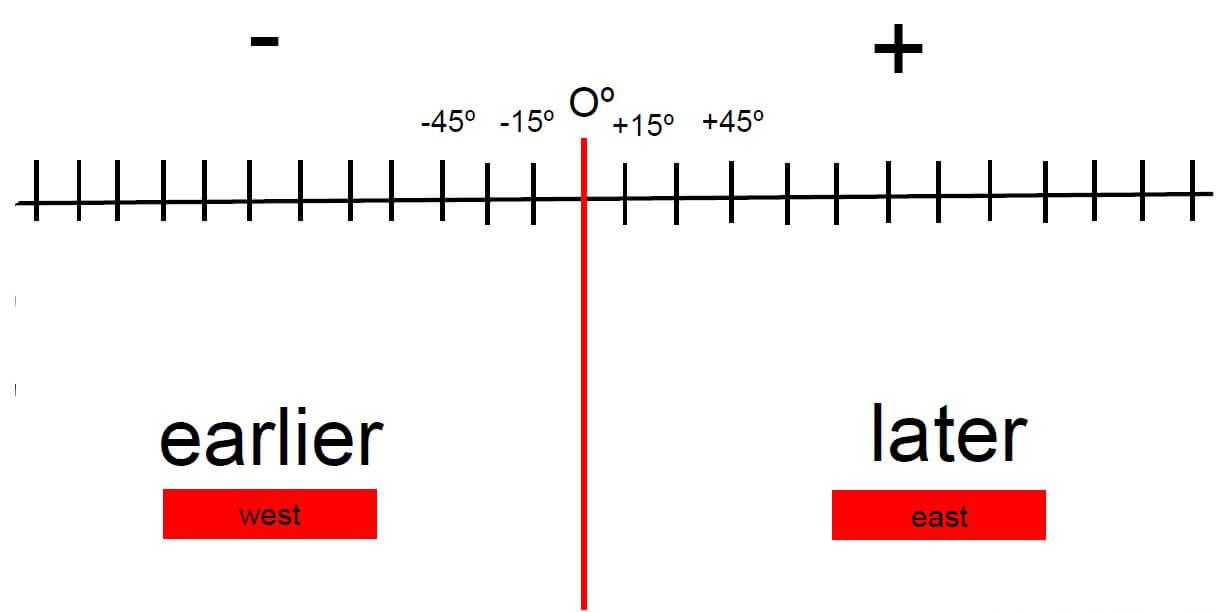
TIME ZONE LINE

DAYLIGHT SAVING TIME (DST)
A way of making better use of the natural daylight by setting your clock forward one hour during the summer months, and back again in autumn.
Daylight saving time is in use between March and April and ends between September and November as the countries return to Standard Time.
JET LAG / JET FATIQUE
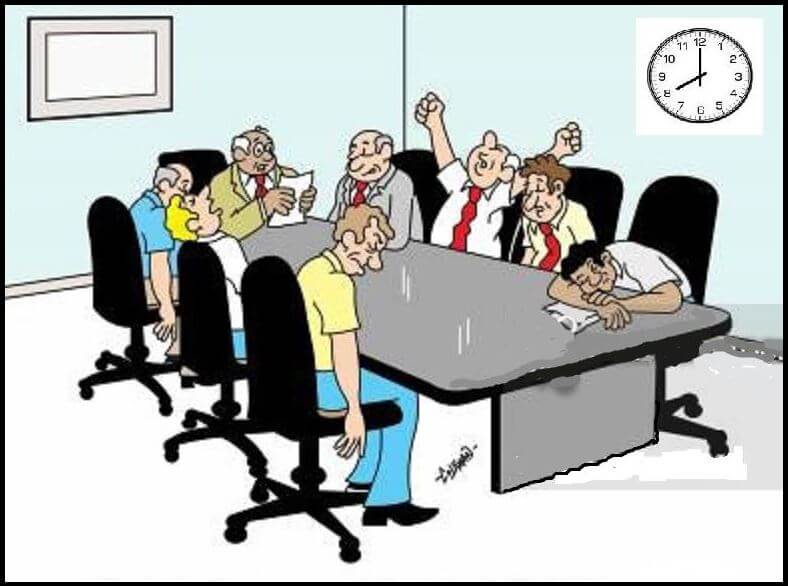
JET LAG / JET FATIQUE
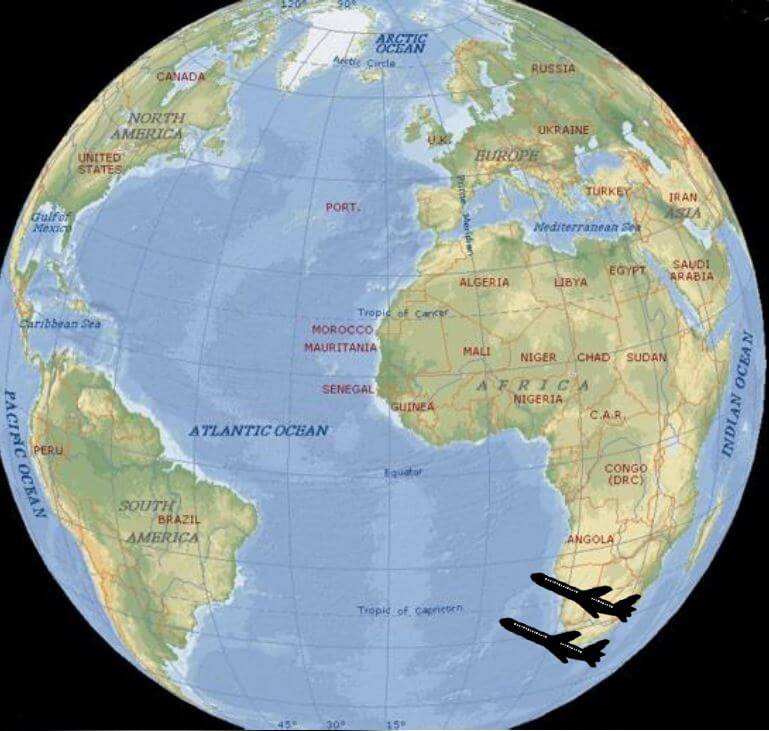

Thank You!
BUSINESS STUDIES GRADE 12 MEMORANDUM - NSC EXAMS PAST PAPERS AND MEMOS SEPTEMBER 2019 PREPARATORY EXAMINATIONS
BUSINESS STUDIES
GRADE 12
NSC EXAMS PAST PAPERS AND MEMOS SEPTEMBER 2019
PREPARATORY EXAMINATIONS
NOTES TO MARKERS
PREAMBLE
|
- Comprehensive marking guidelines have been provided but this is by no means exhaustive. Due consideration should be given to an answer that is correct, but:
- Uses a different expression from that which appears in the marking guidelines
- Comes from another source
- Original
- A different approach is used
NOTE: There is only ONE correct answer in SECTION A.
- Candidates’ responses must be in full sentences for SECTIONS B and C. However, this would depend on the nature of the question.
- Take note of other relevant answers provided by candidates and allocate marks accordingly. (In cases where the answer is unclear or indicates some understanding, part-marks should be awarded, for example, one mark instead of the maximum of two marks).
- The word ‘Sub-max’ is used to facilitate the allocation of marks within a question or sub-question.
- The purpose of circling marks (guided by ‘max’ in the breakdown of marks) on the right-hand side is to ensure consistency and accuracy in the marking of scripts as well as for calculation purposes.
- Subtotals to questions must be written in the right-hand margin. Circle the subtotals as indicated by the allocation of marks. This must be guided by ‘max’ in marking guidelines. Only the total for each question should appear in the left-hand margin next to the appropriate question number.
- In an indirect question, the theory as well as the response must be relevant and related to the question.
- Incorrect numbering of answers to questions or sub-questions in Section A and B will be severely penalised. Therefore, correct numbering is strongly recommended in all sections.
- No additional credit must be given for repetition of facts. Indicate with an R.
- Note that no marks will be awarded for indicating Yes/No in evaluation type questions requiring substantiation or motivation.
(Applicable to SECTIONS B and C). - The differentiation between 'evaluate' and 'critically evaluate' can be explained as follows:
11.1 When ‘evaluate’ is used, candidates are expected to respond in either a positive/negative manner or take a neutral (positive and negative) stance, e.g. Positive: ‘COIDA eliminates time and costs spent √ on lengthy civil court proceedings.’ √
11.2 When ‘critically evaluate’ is used, candidates are expected to respond in either a positive/negative manner or take a neutral (positive and negative) stance. In this instance candidates are also expected to support their responses with more depth, e.g. 'COIDA eliminates time and costs spent√ on lengthy civil court proceedings, √ because the employer will not be liable for compensation to the employee for injuries sustained during working hours as long as it can be proved that the business was not negligent.’ √
NOTE:- The above could apply to 'analyse' as well.
- Note the placing of the tick (√) in the allocation of marks.
- The allocation of marks must be informed by the nature of the question, cognitive verb used, mark allocation in the marking guidelines and the context of each question.
Cognitive verbs, such as:
12.1 Advise, name, state, mention, outline, motivate, devise, recommend, suggest, (list not exhaustive) do not usually require much depth in candidates' responses. Therefore, the mark allocation for each statement/answer appears at the end.
12.2 Describe, explain, discuss, elaborate, compare, distinguish, differentiate, justify, analyse, evaluate, critically evaluate (list not exhaustive) require a greater depth of understanding, application and reasoning. Therefore, the marks must be allocated more objectively to ensure that assessing is conducted according to established norms so that uniformity, consistency and fairness are achieved. - Mark only the FIRST answer where candidates offer more than one answer for SECTION B and C questions that require one answer.
- SECTION B
14.1 If, for example, FIVE facts are required, mark the candidate’s FIRST FIVE responses and ignore the rest of the responses. Indicate by drawing a line across the unmarked portion or use the word ‘Cancel’.
NOTE: This only applies to questions where the number of facts is specified.
14.2 If two facts are written in one sentence, award the candidate FULL credit. Point 14.1 above still applies.
14.3 If candidates are required to provide their own examples/views, brainstorm this to come up with alternative answers.
14.4 Use of the cognitive verbs and allocation of marks:
14.4.1 If the number of facts are specified, questions that require candidates to 'describe/discuss/explain' may be marked as follows:- Fact 2 marks (or as indicated in the marking guidelines)
- Explanation 1 mark
The 'fact' and 'explanation' are given separately in the marking guidelines to facilitate mark allocation.
14.4.2 If the number of facts required is not specified, the allocation of marks must be informed by the nature of the question and the maximum mark allocated in the marking guidelines.
14.5 ONE mark may be awarded for answers that are easy to recall, requires one word answers or is quoted directly from a scenario/case study. This applies to SECTIONS B and C in particular (where applicable).
- SECTION C
15.1 The breakdown of the mark allocation for the essays is as follows:
15.2 Insight consists of the following components:Introduction
Maximum:
32
Content
Conclusion
Insight
8
TOTAL
40
Layout/Structure
Is there an introduction, a body and a conclusion?
2
Analysis and interpretation
Is the candidate able to breakdown the question into headings/sub-headings/interpret it correctly to show understanding of what is being asked?
Marks to be allocated using this guide:
All headings addressed: 1 (One ‘A’) Interpretation (16 to 32 marks): 1 (One ‘A’)2
Synthesis
Are there relevant decisions/facts/responses made based on the questions?
Marks to be allocated using this guide:
No relevant facts: 0 (Two ‘-S’)
Some relevant facts: 1 (One ‘-S’)
Only relevant facts: 2 (No ‘-S’)
Option 1: Where a candidate answers 50% or more of the question with only relevant facts; no '-S' appears in the left margin. Award the maximum of TWO (2) marks for synthesis.
Option 2: Where a candidate answers less than 50% of the question with only OR some relevant facts; one '-S' appears in the left margin.
Award a maximum of ONE (1) mark for synthesis.
Option 3: Where a candidate answers less than 50% of the question with no relevant facts; two '-S' appear in the left margin. Award a ZERO mark for synthesis.2
Originality
Is there evidence of examples, recency of information, current trends and developments?
2
TOTAL FOR INSIGHT:
TOTAL MARKS FOR FACTS:
TOTAL MARKS FOR ESSAY (8 + 32):8
32
40NOTE:
- No marks will be awarded for contents repeated from the introduction and conclusion.
- The candidate forfeits marks for layout if the words
INTRODUCTION and CONCLUSION are not stated. - No marks will be allocated for layout, if the headings
‘INTRODUCTION and CONCLUSION are not supported by an explanation.
15.3 Indicate insight in the left-hand margin with a symbol e.g. (‘L, A, -S and/or O’).
15.4 The breakdown of marks is indicated at the end of the suggested answer/ marking guidelines to each question.
15.5 Mark all relevant facts until the SUB MAX/MAX mark in a subsection has been attained. Write SUB MAX/MAX after maximum marks have been obtained.
15.6 At the end of each essay indicate the allocation of marks for facts and marks for insight as follows:
(L – Layout, A – Analysis, S – Synthesis, O – Originality) as in the table below.CONTENT
MARKS
Facts
32 (max.)
L
2
A
2
S
2
O
2
TOTAL
40
15.7 When awarding marks for facts, take note of the sub-maxima indicated, especially if candidates do not make use of the same subheadings. Remember headings and sub-headings are encouraged and contribute to insight (structuring/logical flow/sequencing) and indicate clarity of thought.
(See MARKS BREAKDOWN at the end of each question.)
15.8 If the candidate identifies/interprets the question INCORRECTLY, then he/she may still obtain marks for layout.
-
16.9 If a different approach is used by candidates, ensure that the answers are assessed according to the mark allocation/subheadings as indicated in the memorandum.
16.10
16.10.1 Award TWO marks for complete sentences. Award ONE mark for phrases, incomplete sentences and vague answers.
16.10.2 With effect from November 2015, the TWO marks will not necessarily appear at the end of each completed sentence.
The ticks (√) will be separated and indicated next to each fact, e.g. “Product development is a growth strategy/where businesses aim to introduce new products √ into existing markets.”√
This will be informed by the nature and context of the question, as well as the cognitive verb used.
16.11 With effect from November 2017, the maximum of TWO (2) marks for facts shown as headings in the marking guidelines, will not necessarily apply to each question. This would also depend on the nature of the question.
MEMORANDUM
SECTION A: COMPULSORY
QUESTION 1
1.1
1.1.1 D √√
1.1.2 A √√
1.1.3 C √√
1.1.4 A √√
1.1.5 D √√
1.1.6 D √√
1.1.7 B √√
1.1.8 C √√
1.1.9 A √√
1.1.10 B √√ (10 x 2) (20)
1.2
1.2.1 National Credit √√
1.2.2 written report √√
1.2.3 CSR √√
1.2.4 association √√
1.2.5 external √√ (5 x 2) (10)
1.3
1.3.1 J √√
1.3.2 E √√
1.3.3 H √√
1.3.4 G √√
1.3.5 A √√ (5 x 2) (10)
TOTAL SECTION A: 40
BREAKDOWN OF MARKS
QUESTION 1 | MARKS |
1.1 | 20 |
1.2 | 10 |
1.3 | 10 |
TOTAL | 40 |
SECTION B
Mark ONLY the FIRST THREE (3) questions in this section.
QUESTION 2: BUSINESS ENVIRONMENTS
2.1 Defensive strategies
- Retrenchment √
- Divestiture √
- Liquidation √
NOTE: Mark the first THREE (3) only. (3 x 1) (3)
2.2 Steps in strategy evaluation
- Examine the underlying basis of a business strategy. √√
- Look forward and backward into the implementation process. √√
- Compare the expected performance with the actual performance. √√
- Measure business performance in order to determine the reasons for deviations and analyse these reasons. √√
- Take corrective action so that deviations may be corrected. √√
- Set specific dates for control and follow up. √√
- Draw up a table of the advantages and disadvantages of a strategy. √√
- Decide on the desired outcome. √√
- Consider the impact of the implementation of a strategy in the internal and external environments of the business. √√
- Any other relevant answer related to the steps in evaluating a strategy.
NOTE:
- Accept steps in any order.
- Mark the first FOUR (4) only. (4 x 2) (8)
2.3.1 Provisions of leave from the scenario
PROVISIONS FOR LEAVE | MOTIVATION |
1. Maternity leave √√ | PFM requires their female employees to report to work immediately after giving birth. √ |
2. Family responsibility leave √√ | Workers are also not allowed to take time off to attend the funeral of a relative. √ |
Sub-max. (4) | Sub-max. (2) |
NOTE:
- The answer does not have to be in tabular format.
- Do not award marks for the motivation quoted, if the provision for leave was not mentioned.
- Award marks for the provision for leave even if the quote is incomplete. Max. (6)
2.3.2 Impact of BCEA on PFM
Positives/Advantages
- Creates a framework of acceptable employment practices, √ e.g. legal employment contracts, work hours, leave, √ etc.
- Promotes fair treatment √ of employees in business. √
- The rules and regulations are very specific, √ which clearly guides the employer how to deal with employment issues. √
- Encourages consultation √ between employers and employees. √
- Outlines minimum requirements √ that form the basis of employment contracts. √
- Working hours are specified so that the employer √ cannot exploit employees. √
- Employees are permitted to consult labour unions √ in cases where the BCEA conditions are violated. √
- Employees may submit complaints √ to labour inspectors who can address them. √
- Any other relevant answer related to the positive impact of BCEA on PFM.
AND/OR
Negatives/Disadvantages
- Developing/Drafting a formal/legal employment contract √ may be time-consuming/costly.√
- Businesses may regard employment contracts as restrictive/negative and may refrain from implementing it, √ which results in non-compliance/penalties.√
- No employer may force an employee to work more than 45 hours in a week/nine hours in a five-day (or less) work week/eight hours in a six-day work week √ which may result in low productivity. √
- Hiring cheap labour is no longer possible, √ so businesses cannot exploit workers. √
- BCEA forces businesses to comply with many legal requirements, √ which may increase labour costs. √
- Businesses not complying to the Act, may be charged with high penalties, √ which may affect their cash flow negatively.√
- Businesses may consider the provisions of the BCEA as unimportant, √ and an unnecessary administrative burden that increase operating costs. √
- Any other relevant answer related to the negative impact of BCEA on PFM. Max. (8)
2.4 Purpose of the Employment Equity Act
- The Employment Equity Act states that employees who do the same work (work of equal value) √ must be paid equally (equal pay). √
- There should be no discrimination √ on grounds of gender in the workplace. √
- Promotes equal opportunity √ and fair treatment in the workplace.√
- Protects employees from victimisation √ if they exercise the rights given to them by the EEA. √
- Provides for employees to refer unresolved disputes √ to the CCMA. √
- Any other relevant answer related to the purpose of the Employment Equity Act. Max. (6)
2.5 Human Resources Development Strategy
- Addresses skills shortages √ in the South African workforce.√
- Aims at achieving faster economic growth/ higher employment levels √ and reduced levels of poverty. √
- Promotes social development and social justice √ which helps to alleviate poverty. √
- Develops short term √ and long term workforce skills. √
- Improves the supply √ of skills.√
- Increases employee participation √ in lifelong learning. √
- Any other relevant answer related to the Human Resources Development Strategy. Max. (6)
2.6 Challenges and the extent of control over business environment
CHALLENGES (2.6.1) | BUSINESS ENVIRONMENTS (2.6.2) | EXTENT OF CONTROL(2.6.3) |
1. Kevin, the farmer, does not have any knowledge of poultry farming.√ | Micro √ | Full control √ |
2. The suppliers of chicken feed have increased their prices by 30%. | Market √ | Some/Limited control √ |
3. CCF lost more than half of their chicks due to a heavy rain storm.√ | Macro √ | No control √ |
Sub-max. (3) | Sub-max. (3) | Sub-max. (3) |
NOTE:
- Do not award marks for challenges that are not fully quoted from the scenario.
- Do not award marks for business environments if it is not linked to the challenge.
- Award marks for the business environments even if the quote is incomplete.
- The extent of control must be linked to the business environment.
- Do not award marks for the extent of control if the businesses environment is not mentioned.
- The order may be different.
- The answer does not have to be in tabular format. Max. (9)
2.7 Advantages of intensive strategies
- Increased market share √ reduces the business's vulnerability to actions of competitors.√
- Increase in sales/income √ and profitability. √
- Improved service delivery √ may improve business image.√
- Businesses may have more control √ over the prices of products/services. √
- Gain loyal customers √ through effective promotion campaigns.√
- Decrease in prices √ may influence customers to buy more products.√
- Regular sales to existing customers √ may increase.√
- Eliminate competitors √ and dominate market prices.√
- Enables the business to focus on markets/well-researched quality products √ that satisfy the needs of customers.√
- Any other relevant answer related to the advantages of intensive strategies. Max. (6)
2.8 Porter’s Five Forces Model
2.8.1 Bargaining power of buyers/Buyer power
- Business must assess how easy it is for its buyers/customers to drive prices down. √√
- Determine the number of buyers/the importance of each buyer to the business and the cost of switching to other products. √√
- A few powerful buyers are often able to dictate terms to the business. √√
- Buyers buying in bulk can bargain for prices in their favour. √√
- If buyers/customers can do without the business's products they may have more power to determine the prices and terms of sale. √√
- Conduct market research to gather more information about its buyers. √√
- Any other relevant answer related to the bargaining power of buyers/buyer power as a Porter's Five Forces. Sub-max. (4)
2.8.2 Competitive rivalry
- If competitors have a unique product/service, they have greater power/impact on the market. √√
- Draw up a competitor's profile of each similar business in the area to determine its strength √√/Business should determine how many competitors there are and how influential they are in the market. √√
- If a business has many competitors with similar products, the business will have very little power in the market. √√
- Some businesses have the necessary resources to start price wars and continue selling at a loss until some/all competitors leave the market. √√
- Any other relevant answer related to competitive rivalry as a Porter's Five Force. Sub-max. (4)
Max. (8)
[60]
BREAKDOWN OF MARKS
QUESTION 2 | MARKS |
2.1 | 3 |
2.2 | 8 |
2.3.1 | 6 |
2.3.2 | 8 |
2.4 | 6 |
2.5 | 6 |
2.6.1 | 3 |
2.6.2 | 3 |
2.6.3 | 3 |
2.7 | 6 |
2.8 | 8 |
TOTAL | 60 |
QUESTION 3: BUSINESS VENTURES
3.1 Types of preference shares
- Participating √
- Non-participating √
- Non-cumulative √
- Cumulative √
- Redeemable √
- Non-redeemable √
- Convertible √
- Non-convertible √
NOTE: Mark the first THREE (3) only. (3 x 1) (3)
3.2 Functions of the Johannesburg Securities Exchange Ltd (JSE)
- Gives opportunities to financial institutions such as insurance companies to invest their funds in shares. √√
- Serves as a barometer/indicator of economic conditions in South Africa. √√
- Keeps investors informed about share prices by publishing the share prices daily. √√
- Acts as a link between investors and public companies. √√
- Shares are valued and assessed by experts. √√
- Small investors are invited to take part in the economy of the country through the buying of shares. √√
- Venture capital market is made possible. √√
- Orderly market for securities serves as a disciplined market for securities. √√
- Encourages new investments. √√
- Mobilises the funds of insurance companies and other institutions. √√
- Raises primary capital. √√
- Regulates market for dealing with shares. √√
- Plans, researches and advises on investment possibilities. √√
- Ensures that the market operates in a transparent manner. √√
- Provides protection for investors. √√
- Encourages short-term investments. √√
- Facilitates electronic trading of shares/STRATE. √√
- Any other relevant answer related to the functions of the Johannesburg Securities Exchange (JSE.) Max. (8)
3.3 Types of investments
3.3.1 Shares √√
3.3.2 Fixed property √√
3.3.3 Unit trusts √√
3.3.4 Mutual funds/stokvels √√ (4 x 2) (8)
3.4 Importance/Advantages of insurance
- Transfer the risk form business/insured √ to an insurance company/insurer. √
- Transfer of the risk is subject to the terms and conditions √ of the insurance contract.√
- Protects the business against theft and loss of stock and/or damages √ caused by natural disasters such as floods, storm damage, etc. √
- The business will be compensated √ for insurable losses, e.g. destruction of property through fire. √
- Business assets √ e.g. vehicles/equipment/buildings need to be insured against damage and/or theft. √
- Business is protected against the loss of earnings √ e.g. strikes by employees result in losses worth millions of rands.√
- Protects the business against deeds of dishonesty √ by employees. √
- Life insurance can be taken against the life of partners√ in a partnership, to prevent unexpected loss of capital.√
- Should the services of key personnel be lost due to accidents or death, √ the proceeds of an insurance policy can be paid out to the business/beneficiaries. √
- Replacement costs for damaged machinery/equipment are very high, √ therefore, insurance can reduce/cover these costs. √
- Protects businesses from claims made by members of the public √ for damages that the business is responsible for. √
- Protects the business against losses √ due to the death of a debtor. √
- Any other relevant answer related to the importance/advantages of insurance to businesses. Max. (6)
3.5 Form of ownership
3.5.1 Sole trader/proprietorship √√ (2)
Motivation
Luke is the only owner of the business and is also liable for all the business debts.√ (1)
NOTE: Do not award marks for the motivation, if the form of ownership was incorrectly identified. Max. (3)
3.5.2 Success factors of a sole trader/proprietorship and a private company
CRITERIA | SOLE TRADER | PRIVATE COMPANY |
(a) Management |
|
|
Sub-max. (2) | Sub-max. (2) |
CRITERIA | SOLE TRADER | PRIVATE COMPANY |
(b) Legislation |
|
|
Sub-max. (2) | Sub-max. (2) |
CRITERIA | SOLE TRADER | PRIVATE COMPANY |
(c) Division of profits |
|
|
Sub-max. (2) | Sub-max. (2) |
NOTE:
- The answer does not have to be in tabular format.
- Consider similarities if the sole trader was incorrectly identified. Max. (12)
3.6 Factors to consider when preparing for a presentation Clear purpose/intentions/objectives √ and main points of the presentation. √
- Main aims captured √ in the introduction/opening statement of the presentation. √
- Information presented √ should be relevant and accurate. √
- Fully conversant √ with the content/objectives of the presentation. √
- Background/diversity/size/pre-knowledge of the audience √ to determine the appropriate visual aids. √
- Prepare a rough draft of the presentation √ with a logical structure/format with an introduction, body and conclusion. √
- The conclusion must summarise the key facts √ and how it relates to the objectives/shows that all aspects have been addressed. √
- Create visual aids/graphics √ that will consolidate the information/facts to be conveyed to the board of directors. √
- Find out about the venue for the presentation, √ e.g. what equipment is available/appropriate/availability of generators as backup to load shedding. √
- Consider the time frame√ for presentation, e.g. fifteen minutes allowed. √
- Rehearse √ to ensure a confident presentation/effective use of time management. √
- Prepare for the feedback session, √ by anticipating possible questions/comments. √
- Any other relevant answer that relate to the factors to be considered when preparing for a presentation. Max. (8)
3.7 Situation in which democratic leadership style could be applied in the workplace
This leadership style can be used when:
- Group members are skilled and eager to share their ideas. √√
- The leader does not have all the information needed to make a decision and employees have valuable information to contribute. √√
- Cooperation is needed between a leader and a team. √√
- Decisions need to be looked at from several perspectives. √√
- Any other relevant answer related to situations in which the democratic leadership style may be applied in the workplace.
NOTE: Mark the first TWO (2) only. (2 x 2) (4)
3.8 Impact of autocratic leadership style
Positives/Advantages
- Quick decisions can be taken √ without consulting/considering followers/ employees. √
- Work gets done √ in time/on schedule. √
- Line of command/communication is clear √ as it is top-down/followers know exactly what to do. √
- Direct supervision and strict control √ ensure high quality products/service.√
- Provides strong leadership √ which makes new employees feel confident and safe. √
- Works well in large companies where consultation√ with every employee is impractical.√
- Clear guidance can be given √ to low-skilled/inexperienced/new staff. √
- Useful in a crisis/urgent situation, √ e.g. after an accident/meeting tight deadlines. √
- Any other relevant analysis related to a positive/advantages impact of an autocratic leadership style.
AND/OR
Negatives/Disadvantages
- Leaders and followers may become divided √ and may not agree on ways to solve problems. √
- Workers can be demotivated √ as their opinions/ideas are not considered. √
- De-motivated workers √ impact negatively on productivity. √
- New/Creative/Cost reducing ideas √ may not be used/implemented/never be considered. √
- Followers may feel that they are not valued √ resulting in high absenteeism and high employee turnover. √
- Experienced and highly skilled workers will resist an autocratic leadership style √ because it results in less growth, participation and creativity. √
- Any other relevant analysis related to a negative/disadvantages impact of an autocratic leadership style. Max. (8)
[60]
BREAKDOWN OF MARKS
QUESTION 3 | MARKS |
3.1 | 3 |
3.2 | 8 |
3.3 | 8 |
3.4 | 6 |
3.5.1 | 3 |
3.5.2 | 12 |
3.6 | 8 |
3.7 | 4 |
3.8 | 8 |
TOTAL | 60 |
QUESTION 4: BUSINESS ROLES
4.1 Examples of unfair advertising
- Giving goods deceptive names/False labelling. √
- Selling second-hand goods as new goods. √
- Exaggerating the merits of the product. √
- Using fine print to conceal important information. √
- Criticising competitor’s goods. √
- Exploitation of children’s lack of understanding. √
- Misuse of people with disabilities in advertisements. √
- Advertising that encourages violence. √
- Advertising goods at a very low price to attract customers but when the customer reaches the store the item is no longer there/Bait and switch. √
- Advertising a product showing additional items, but do not clearly state that these items are excluded. √
- Any other relevant examples of unfair advertising.
NOTE: Mark the first FOUR (4) only. (4 x 1) (4)
4.2 Causes of conflict
- Lack of proper communication between management and workers. √√
- Ignoring rules/procedures may result in disagreements and conflict. √√
- Management and/or workers may have different personalities/ backgrounds. √√
- Different values/levels of knowledge/skills/experience of managers/workers. √√
- Little/no co-operation between internal and/or external parties/stakeholders. √√
- Lack of recognition for good work, e.g. a manager may not show appreciation for extra hours worked to meet deadlines. √√
- Lack of employee development may increase frustration levels as workers may repeat errors due to a lack of knowledge/skills. √√
- Unfair disciplinary procedures, e.g. favouritism/nepotism. √√
- Little/no support from management with regard to supplying the necessary resources. √√
- Leadership styles used, e.g. autocratic managers may not consider worker inputs. √√
- Unrealistic deadlines/Heavy workloads lead to stress resulting in conflict. √√
- Lack of agreement on mutual matters, e.g. remuneration/working hours. √√
- Unhealthy competition/Inter-team rivalry may cause workers to lose focus on team targets. √√
- Lack of commitment which may lead to an inability to meet pre-set targets. √√
- Any other relevant answer related to the causes of conflict. Max. (8)
4.3.1 Problem-solving techniques
PROBLEM-SOLVING TECHNIQUE | MOTIVATION |
Nominal group technique √√ | Employees are requested to first generate ideas and then share the ideas with other group members. √ |
Delphi technique √√ | The management also contacted designer experts to complete a questionnaire on how to change the designs. √ |
Sub-max. (4) | Sub-max. (2) |
NOTE:
- The answer does not have to be in tabular format.
- Do not award marks for the motivation quoted, if the problem-solving technique were not mentioned.
- Award marks for the problem-solving technique even if the quote is incomplete. Max. (6)
4.3.2 Advantages of creative thinking in the workplace
- Better/Unique/Unconventional ideas/solutions √ is generated. √
- May give the business a competitive advantage √ if unusual/unique solutions/ideas/strategies are implemented. √
- Complex business problems √ may be solved. √
- Productivity increases √ as management/employees may quickly generate multiple ideas which utilises time and money more effectively. √
- Managers/Employees have more confidence √ as they can live up to their full potential. √
- Managers will be better leaders √ as they will be able to handle/manage change(s) positively and creatively. √
- Managers/Employees can develop a completely new outlook, √ which may be applied to any task(s) they may do. √
- Leads to more positive attitudes √ as managers/employees feel that they have contributed towards problem solving. √
- Improves motivation √ amongst staff members. √
- Managers/Employees have a feeling of great accomplishment √ and they will not resist/obstruct the process once they solved a problem/ contributed towards the success of the business. √
- Management/employees may keep up √ with fast changing technology. √
- Stimulates initiative from employees/managers, √ as they are continuously pushed out of their comfort zone. √
- Creativity may lead to new inventions √ which improves the general standard of living. √
- Any other relevant answer related to the advantages of creative thinking. Max. (8)
4.4 Positive impact of corporate social responsibility (CSR) on communities
- Socio-economic issues are attended to √ which will improve the welfare of the community. √
- Training opportunities in the community increase the possibility √ of appointments of members of the community. √
- Implementing developmental programmes in the community √ improves entrepreneurial skills of communities. √
- Provision of bursaries √ encourages communities to improve their skills. √
- The standard of living of the community √ is uplifted √/quality of life of communities √ is improved.√
- Better educational facilities are established √ in poor communities. √
- Improve the health of communities √ by providing medical infrastructure. √
- Provide rehabilitation centres to community members √ who have addiction problems. √
- Any other relevant answer related to a positive impact of CSR in the community. Max. (6)
4.5
4.5.1 Quotation of the responsibilities of employees in promoting human health and safety in the workplace from the scenario
- The management is very proud of the way in which their workers are taking responsibility for their own safety. √
- The workers also report unsafe and unhealthy conditions to the management. √
NOTE: Mark the first TWO (2) only. (2 x 1) (2)
4.5.2 Other responsibilities of employees in promoting human health and safety in the workplace
- Co-operate and comply with the rules and procedures √ e.g. wear prescribed safety clothing. √
- Report accidents √ to the employer by the end of the shift. √
- Use prescribed √ safety equipment. √
- Take reasonable care √ of their own safety. √
- Inform the employer of any illness √ that may affect the ability to work. √
- Any other relevant answer related to the responsibilities of employees in promoting human health and safety in the workplace.
NOTE: Do not award marks for responses quoted in QUESTION 4.5.1. Max. (6)
4.5.3 Strategies to protect the environment and human health in the workplace
- Laws and regulations should be adhered to so that profits are not generated at the expense of the environment. √√
- Pollution and other environmental issues should always be considered in all business activities, e.g. safe disposal of waste/dumping of toxic waste √√, etc.
- Become involved in environmental awareness programs. √√
- The environment can be protected by altering production techniques in favour of cleaner and greener technologies. √√
- Water for human consumption should be tested before it is used. √√
- Promote nature conservation by looking after natural resources. √√
- Minimise pollution, by re-using, reducing and recycling. √√
- Reduce consumption of goods/services which are environmentally unfriendly. √√
- Register/Engage with recognised institutions/bodies that promote green peace. √√
- Physical working conditions should always be worker friendly, safe and promote occupational health. √√
- Physical working conditions, e.g. adequate lighting/ventilation should be available and functional. √√
- Machines must be serviced/maintained regularly. √√
- Educate people about hygiene issues. √√
- Encourage employees to do regular health checks. √√
- Any other relevant answer related to strategies to protect the environment and human health in the workplace. Max. (4)
4.6 Dealing with diversity issues in the workplace
4.6.1 Language
- Business may specify that all communications should be in one specific language only √ and would expect employees to have a certain level of fluency in that language. √
- Provide training √ in the official language of the business. √
- Employ an interpreter √ so that everyone can fully understand what is being said in a meeting. √
- All business contracts should be in an easy-to-understand language √ and should be available in the language of choice for the relevant parties signing the contract.√
- No worker should feel excluded in meetings √ conducted in one language only. √
- Any other relevant answer related to how business could deal with language as a diversity issue in the workplace. Sub-max. (4)
4.6.2 Age
- Promotions should not be linked to age, √ but rather to a specific set of skills. √
- A business may not employ children √ aged 15 or younger. √
- The ages of permanent workers should vary √ from 18 to 65 to include all age groups. √
- A business may employ a person who is older than the normal retirement age, √ provided that person is the most suitable candidate. √
- Businesses must encourage older employees to help young employees √ to develop their potential. √
- Young employees must be advised to respect and learn √ from older employees. √
- The business should encourage employees to be sensitive √ to different perspectives of various age groups.√
- Any other relevant answer related to how businesses could deal with age as a diversity issue in the workplace. Sub-max. (4)
Max. (8)
4.7 Handling conflict in the workplace
- Acknowledge that there is conflict in the workplace. √√
- Identify the cause of the conflict. √√
- Pre-negotiations may be arranged where workers/complainants will be allowed to state their case/views separately. √√
- A time and place are arranged for negotiations where all employees involved are present. √√
- Arrange a meeting between conflicting employers/employees. √√
- Make intentions for intervention clear so that parties involved may feel at ease. √√
- Each party has the opportunity to express his/her own opinions/feelings/ Conflicting parties may recognise that their views are different. √√
- Analyse the cause(s) of conflict by breaking it down into different parts/Evaluate the situation objectively. √√
- Blame shifting should be avoided and a joint effort should be made. √√
- Direct conflicting parties towards finding/focusing on solutions. √√
- Devise/Brainstorm possible ways of resolving the conflict.√√
- Conflicting parties agree on criteria to evaluate the alternatives.√√
- The best possible solution(s) is/are selected and implemented.√√
- Parties must agree to on the best solution. √√
- Evaluate/Follow up on the implementation of the solution(s). √√
- Monitor progress to ensure that the conflict has been resolved. √√
- Expertise on handling conflict maybe sourced from outside the business. √√
- Any other relevant answer related to how businesses should handle conflict in the workplace.
NOTE: If problem-solving steps do not demonstrate the handling of conflict (explanation), award a maximum of FOUR (4) marks. Max. (8)
[60]
QUESTION 5: BUSINESS OPERATIONS
5.1 Methods of salary determination
- Piecemeal √
- Time-related √
NOTE: Mark the first TWO (2) only.
BREAKDOWN OF MARKS
QUESTION 4 | MARKS |
4.1 | 4 |
4.2 | 8 |
4.3.1 | 6 |
4.3.2 | 8 |
4.4 | 6 |
4.5.1 | 2 |
4.5.2 | 6 |
4.5.3 | 4 |
4.6 | 8 |
4.7 | 8 |
TOTAL | 60 |
5.2 Placement procedure (2 x 1) (2)
- Businesses should outline the specific responsibilities of the new position, √ including the expectations/skills required for this position. √
- Determine the successful candidate’s strengths/weaknesses/interests/skills √ by subjecting him/her to a range of psychometric tests. √
- Determine the relationship between the position √ and the competencies of the new candidate. √
- Any other relevant answer related to the placement procedure that businesses should follow to place a new employee. Max. (6)
5.3.1 Quotation of Maggie’s role during the interview
- During the interview Maggie carefully listened to the questions before responding to them. √
- She made eye contact with the interviewer √
- and asked clarity seeking questions. √
NOTE: Mark the first THREE (3) only. (3 x 1) (3)
5.3.2 Role of the interviewer during the interview
- Allocate the same amount of time √ to each candidate. √
- Introduce members of the interviewing panel √ to each candidate/interviewee. √
- Make the interviewee √ feel at ease. √
- Explain the purpose of the interview √ to the panel and the interviewee. √
- Record interviewees' responses √ for future reference. √
- Do not misinform/mislead√ the interviewee. √
- Avoid discriminatory/controversial types of questions, √ e.g. asking a female candidate about family planning/having children. √
- Provide an opportunity for the interviewee √ to ask questions. √
- Close the interview by thanking the interviewee √ for attending the interview. √
- Any other relevant answer related to the role of the interviewer during the interview. Max. (8)
5.4 Difference between job description and job specification
JOB DESCRIPTION | JOB SPECIFICATION |
|
|
|
|
|
|
|
|
Sub-max. (4) | Sub-max. (4) |
NOTE:
- The answer does not have to be in tabular format but differences must be clear.
- Allocate a maximum of FOUR (4) marks if distinction is not clear./Mark either job description or job specification only. Max. (8)
5.5 Contribution of the quality indicators of the financial function to the success of a business
- Obtain capital √ from the most suitable/available/reliable sources. √
- Negotiate better interest rates √ in order to keep financial cost down.√
- Draw up budgets √ to ensure sufficient application of monetary resources.√
- Keep financial records up to date√ to ensure timely/accurate tax payments.√
- Analyse strategies √ to increase profitability.√
- Invest surplus funds √ to create sources of passive income. √
- Implement financial control measures/systems √ to prevent fraud. √
- Implement credit granting/debt collecting policies √ to monitor cash flow. √
- Draw up accurate √ financial statements timeously/regularly. √
- Accurately analyse and interpret √ financial information. √
- Invest in strategies √ that will assist the business to remain profitable. √
- Avoid over/under-capitalisation √ so that financial resources will be utilised effectively.√
- Any other relevant answer related to the contribution of the quality indicators of the financial function to the success of a business. Max. (6)
5.6.1 Total quality management
TQM ELEMENTS | MOTIVATION |
1 Total client satisfaction/Total customer satisfaction√√ | The management always ensure that customer complaints are handled within a short period of time.√ |
2 Continuous skills development/ Education and training √√ | The employees regularly attend training courses. √ |
3 Involvement of all employees/ People Based Management √√ | The management also allows staff to make inputs during designing sessions. √ |
Sub-max. (6) | Sub-max. (3) |
NOTE:
- Mark the first THREE (3) only.
- The answer does not have to be in tabular format.
- Do not award marks for the motivation quoted, if the TQM elements were not mentioned.
- Award marks for the TQM element even if the quote is incomplete. Max. (9)
5.6.2 Benefits of a good quality management system
- Effective customer service will be rendered, resulting in increased customer satisfaction.√√
- Time and resources are used efficiently. √√
- Productivity increase through proper time management and using high quality resources. √√
- Products and services are constantly improved, resulting in greater customer satisfaction. √√
- Vision and mission may be achieved. √√
- The business may achieve a competitive advantage over its competitors. √√
- Continuous training will continuously improve the quality of employees’ skills and knowledge. √√
- Employers and employees will have a healthy working relationship which results in happy workers. √√
- Increased market share and profitability. √√
- Any other relevant answer related to the benefits of a good quality control system. Max. (6)
5.7 Negative impact if TQM is poorly implemented
- Setting unrealistic deadlines √ that may not be achieved. √
- Employees may not be adequately trained √ resulting in poor quality products. √
- Decline in productivity, √ because of stoppages. √
- Businesses may not be able to make necessary changes √ to satisfy the needs of customers. √
- The reputation of the business √ may suffer because of faulty goods. √
- Customers will have many alternatives to choose from √ and the impact could be devastating to businesses. √
- Investors might withdraw investment, √ if there is a decline in profits. √
- Bad publicity √ due to poor quality products supplied. √
- Decline in sales, √ as returns from unhappy customers' increase. √
- High staff turnover, √ because of poor skills development. √
- Undocumented quality control systems/processes √ could result in error or deviations from pre-set quality standards. √
- Any other relevant answer related to the negative impact on businesses if TQM is poorly implemented. Max. (6)
5.8 Impact of continuous improvement to processes and systems on large businesses
Positives/Advantages
- Large businesses have more resources √ to check on quality performance in each unit/business function. √
- Enough capital resources are available for new equipment required √ to stay relevant to new developments. √
- Large businesses have a person dedicated √ to the improvement of systems and processes. √
- Willing to take risk on/try new processes and systems √ because they are able to absorb the impact of losing money. √
- They can afford to use the services of the quality circles √ to be competitive.√
- Large businesses use the PDCA model √ to continuously plan/do/check/act on new/revised processes and systems. √
- Any other relevant answer related to the positive impact of continuous improvement to processes and systems on large businesses.
AND/OR
Negatives/Disadvantages
- Large scale manufacturing √ can complicate quality control. √
- Systems and processes take time and effort to be implemented in large businesses √ as communication/buy-in/distrust may delay the implementation process. √
- Face the risk of changing parts of the business √ that are actually working well. √
- Not all negative feedback from employees and customers is going to be accurate, √ which may result in incorrect/unnecessary changes to systems and processes. √
- Any other relevant answer related to the negative impact of continuous improvement to processes and systems on large businesses. Max. (6)
[60]
BREAKDOWN OF MARKS
QUESTION 5 | MARKS |
5.1 | 2 |
5.2 | 6 |
5.3.1 | 3 |
5.3.2 | 8 |
5.4 | 8 |
5.5 | 6 |
5.6.1 | 9 |
5.6.2 | 6 |
5.7 | 6 |
5.8 | 6 |
TOTAL | 60 |
QUESTION 6: MISCELLANEOUS TOPICS
BUSINESS ENVIRONMENTS
6.1 Pillars of BBBEE
6.1.1 Enterprise and supplier development (ESD) √√
6.1.2 Socio-economic development/social responsibility √√
6.1.3 Ownership √√
6.1.4 Skills development √√ (4 x 2) (8)
6.2 Difference between market development and product development
MARKET DEVELOPMENT | PRODUCT DEVELOPMENT |
It is a growth strategy where businesses aim to sell their existing products √ in new markets. √ | Businesses generate new It is a growth strategy where businesses aim to introduce new products √ into existing markets. √ |
Business implements √ the idea of expanding/selling products/services in other areas. √ | Business improves the product line √ by adding different types of related products/services. √ |
Finds new ways √ of distributing products/services. √ | Conduct test marketing/market research √ to establish whether new products will be accepted by existing customers. √ |
Restructure pricing policies √ to cater for customers of all income levels. √ | - Ensure that new products of a higher quality are more reasonably priced √ than those of competitors. √ |
Any other relevant answer related to market development. | Any other relevant answer related to product development. |
Sub-max. (4) | Sub-max. (4) |
NOTE:
- The answer does not have to be in a tabular format but the distinction must be clear.
- Award a maximum of FOUR (4) marks if the distinction is not clear./Mark either market development or product development only. Max. (8)
BUSINESS VENTURE
6.3 Forms of ownership
6.3.1 Public company √√
6.3.2 Personal liability company √√
6.3.3 Partnership √√ (3 x 2) (6)
6.4 Role of personal attitude in successful leadership
- Positive attitude √ releases leadership potential. √
- A leader's good/bad attitude √ can influence the success/failure of the business. √
- Leaders must know their strengths and weaknesses √ to apply their leadership style effectively. √
- Great leaders understand that the right attitude √ will set the right atmosphere. √
- Leaders attitude can influence employees/teams' thoughts √ and behaviour. √
- Leaders should model the behaviour √ that they want to see in team members. √
- Leaders must know/understand their teams √ to be able to allocate tasks/roles effectively. √
- Enthusiasm √ produces confidence in a leader. √
- A positive attitude is critical for good leadership √ because good leaders will stay with the task regardless of difficulties/challenges. √
- Successful employees and leaders have a constant desire to work √ and achieve personal and professional success. √
- Leaders with a positive attitude know that there is always more to learn √ and space to grow.√
- Any other relevant answer related to the role of personal attitude in successful leadership. Max. (8)
BUSINESS ROLES
6.5.1 Quotation of the characteristics of a successful team from the scenario
- The workers have good interpersonal relationships √
- and show mutual respect towards each other despite their differences. √
- The workers support and trust each other √
- and have open discussions that lead to effective solutions of problems.√
NOTE: Mark the first FOUR (4) only. (4 x 1) (4)
6.5.2 Benefits of having a diverse workforce
- Workforce diversity improves the ability of a business √ to solve problems/innovate/cultivate diverse markets. √
- Employees value each other's diversity √ and learn to connect/communicate across lines of difference.√
- Diversity in the workforce improves √ morale/motivation. √
- Employees demonstrate greater loyalty to the business √ because they feel respected/accepted/understood. √
- A diversified workforce can give businesses a competitive advantage √ as they can render better services. √
- Being respectful of differences/demonstrating diversity √ makes good business sense/improves profitability. √
- Diverse businesses ensure that its policies/practices √ empower every employee to perform at his/her full potential. √
- Customers increasingly evaluate businesses √ on how they manage diversity in the workplace. √
- Employees from different backgrounds √ can bring different perspectives to the business. √
- A diversified workforce stimulates debate √ on new and improved ways of getting things done. √
- Employees represent various groups √ and are therefore better able to recognise customer needs and satisfy consumers. √
- Businesses with a diverse workforce are more likely to have a good public image √ and attract more customers. √
- Any other relevant answer related to the benefits of having a diverse workforce. Max. (6)
6.6 Ways to promote cultural rights in the workplace
- Provide the environment in which employees are free to use their own language when interacting with others during their free time. √√
- Encourage employees to participate in cultural activities. √√
- Allow employees to provide solutions to challenges from their own cultural perspective. √√
- Regular cultural information sessions will help employees to respect each other's culture in the workplace. √√
- Make provision for different cultures, such as food served in the canteen/entertainment at staff functions. √√
- Employ people from various cultural backgrounds. √√
- Employees should be trained on cultural tolerance. √√
- Any other relevant answer related to ways in which businesses could promote cultural rights in the workplace. Max. (6)
BUSINESS OPERATIONS
6.7 Importance of quality circles
- Solve problems related to quality and implement improvements. √√
- Investigate problems and suggest solutions to management. √√
- Ensure that there is no duplication of activities/tasks in the workplace. √√
- Make suggestions for improving systems and processes in the workplace. √√
- Improve the quality of products/services/productivity through regular reviews of quality processes. √√
- Monitor/Reinforce strategies to improve the smooth running of business operations. √√
- Reduce costs of redundancy in the long run. √√
- Increase employees' morale/motivation. √√
- Quality circles discuss ways of improving the quality of work/ workmanship. √√
- Contribute towards the improvement and development of the organisation. √√
- Reduce costs/wasteful efforts in the long run. √√
- Increase the demand for products/services of the business. √√
- Create harmony√ and high performance in the workplace. √
- Build a healthy workplace relationship between the employer and employee. √√
- Improve employees’ loyalty and commitment to the business and its goals. √√
- Improve employees’ communication at all levels of the business. √√
- Develop a positive attitude/sense of involvement in decision making processes of the services offered. √√
- Any other relevant answer related to the importance of quality circles in TQM. Max. (4)
6.8 Differences between quality performance and quality management
QUALITY PERFORMANCE | QUALITY MANAGEMENT |
Total performance of each department measured √ against specified standards. √ | It is techniques/tools √ used to design/improve the quality of a product. √ |
Can be obtained if all departments work together √ towards the same quality standards.√ | Can be used for accountability √ within each of the business functions.√ |
Quality is measured √ through physical product/statistical output of processes/surveys of the users and/or buyers of goods/services. √ | Aims to ensure that the quality of goods/services √ is consistent √/ Focuses on the means √ to achieve consistency. √ |
Any other relevant answer related to quality performance. | Any other relevant answer related to quality management. |
Sub-max. (2) | Sub-max. (2) |
Max. (4)
NOTE:
- The answer does not have to be in a tabular format but the distinction must be clear.
- Award a maximum of TWO (2) marks if the distinction is not clear./Mark either quality performance or quality management only.
6.9 Impact of TQM on the reduction of the cost of quality
- Introduce quality circles to discuss ways of improving the quality of work/workman-ship. √√
- Schedule activities to eliminate duplication of tasks. √√
- Share responsibility for quality output amongst management and workers. √√
- Train employees at all levels, so that everyone understands their role in quality management. √√
- Develop work systems that empower employees to find new ways of improving quality. √√
- Work closely with suppliers to improve the quality of raw materials/inputs. √√
- Improve communication about quality challenges/deviations, so that everyone can learn from experience. √√
- Reduce investment on expensive, but ineffective inspection procedures in the production process. √√
- Implement pro-active maintenance programmes for equipment/machinery to reduce/eliminate breakdowns. √√
- Any other relevant answer related to the impact of TQM on the reduction of the cost of quality. Max. (6)
[60]
BREAKDOWN OF MARKS
QUESTION 6 | MARKS |
6.1 | 8 |
6.2 | 8 |
6.3 | 6 |
6.4 | 8 |
6.5.1 | 4 |
6.5.2 | 6 |
6.6 | 6 |
6.7 | 4 |
6.8 | 4 |
6.9 | 6 |
TOTAL | 60 |
TOTAL SECTION B: 180
SECTION C
Mark the first TWO (2) questions only.
QUESTION 7: BUSINESS ENVIRONMENTS (LEGISLATION)
7.1 Introduction
- The Compensation for Occupational Injuries and Diseases Amendment Act (COIDA), 1997 (Act 61 of 1997) was introduced to protect the health and safety of employees in the workplace. √
- COIDA provides guidelines for the compensation of employees who are disabled because of injuries sustained/diseases contracted at work. √ - It also provides for compensation if a worker dies due to a work related injury/ disease. √
- Injuries and diseases for which claims can be made are specified in the Act. √
- Any other relevant introduction related to COIDA.
(Any 2 x 1) (2)
7.2 Purpose of COIDA
- COIDA applies to all casual and full-time workers who become ill/injured/disabled/killed √ due to a workplace accident/disease. √
- It excludes workers √ who are guilty of willful misconduct/workers working outside South Africa for at least twelve months/members of the SA Defence Force/Police services. √
- It provides for the establishment of a Compensation Board √ whose function is to advise the Minister of Labour on the application/provisions of COIDA. √
- Medical expenses/Other types of compensation are paid to employees and/or their families √ depending on the type/severity of the injuries. √
- Employers have to pay a monthly amount to the Compensation Fund √ depending on the number of employees/the level of risk they are exposed to. √
- Employees must be a bona-fide employee of the company √ and the injury must have been caused while carrying out duties. √
- Provides compensation for employees/families for injuries or death √ occur while carrying out their duties. √
- Any other relevant answer related to the purpose of COIDA. Max. (10)
7.3 Penalties/Consequences for non-compliance with COIDA
- Businesses can be fined √ for refusing to lodge the claim/contravening the Act. √
- Businesses can be forced to make large payments √ if it did not take the necessary precautions according to the Act. √
- Businesses can be forced to pay any recovery costs √ required by the Compensation Fund. √
- The employee may take the business to court √ for not registering him/her with the Commissioner of the Compensation Fund. √
- If the business is found guilty of any misconduct, √ they will have to pay large penalties/face imprisonment. √
- Any other relevant answer related to penalties for non-compliance with COIDA. Max. (8)
7.4 Impact of COIDA on businesses
Positives/Advantages
- Promotes safety √ in the workplace. √
- Creates a framework √ for acceptable employment practices/safety regulations. √
- Supply administrative guidelines/mechanisms √ for dealing with/processing claims. √
- Eliminates time and costs spent √ on lengthy civil court proceedings. √
- Employers are protected from financial burden should an accident occur in the workplace √ provided that the employer was not negligent. √
- Claiming processes √ are relatively simple. √
- Makes businesses more socially responsible √ as they cannot just employ workers at random in dangerous working conditions. √
- Workers are treated with dignity and respect √ as businesses view them as valuable assets and not just as workers. √
- Covers all employees at the workplace √ if both parties meet all the necessary safety provisions of the Act. √
- Employees do not contribute √ towards this fund. √
- Employees are compensated financially for any injury/disability √ resulting from performing their duties at their workplace. √
- In the event of the death of an employee as a result of a work-related accident/ disease, √ his/her dependent(s) will receive financial support. √ - Employees receive medical assistance √ provided there is no other medical assistance option. √/Cannot claim medical assistance from the fund √ and medical aid. √
- Any compensation to an employee/the family √ is exempt from income tax. √
- Any other relevant answer related to the positive impact/advantages of COIDA on businesses.
AND/OR
Negatives/Disadvantages
- Claiming processes/procedures √ can be time consuming.√
- Processes/Procedures required by this Act may be costly √ as paperwork places an extra administrative burden on businesses. √
- Employers have to register all their workers/make annual contributions to COIDA, √ which may result in cash flow problems. √
- Employers may be forced to pay heavy penalties √ if they are found guilty of negligence/not enforcing safety measures. √
- Workers who are temporarily/permanently employed in foreign countries √ are not covered. √
- Domestic/Military workers √ are not covered. √
- Any other relevant answer related to the negative impact/disadvantages of COIDA on businesses. Max. (14)
7.5 Compliance to COIDA
- Businesses should provide a healthy/safe working environment. √√
- They should register with the Compensation Commissioner and provide the particulars of the business. √√
- Must keep records of employees' income and details of work for four years. √√
- Obliged to report all incidents causing death/injury/illness of employees. √√
- Businesses should submit returns of earnings by no later than 1 March annually. √√
- Levies must be paid to the Compensation Fund. √√
- Ensure that the premises/equipment/machinery is in good working condition. √√
- Should allow regular assessment of the workplace by inspectors in order to determine the level of risk their employees are exposed to. √√
- Employers may not make deductions for COIDA from employees' remuneration packages. √√
- Businesses must ensure that claims are lodged within twelve months of the date of the accident. √√
- Any other relevant answer related to the ways in which businesses can comply with COIDA. Max. (14)
7.6 Conclusion
- Good progress has been made as businesses are now more socially responsible in improving safety measures/working conditions/being responsible for workers and their dependents. √√
- Workers in some industries are being compensated for contracting diseases such as tuberculosis, silicosis, √√ etc.
- If death occurs, families may benefit as the deceased worker may be substituted by another family member in the same industry. √√
- Any other relevant conclusion related to COIDA. (Any 1 x 2) (2)
[40]
QUESTION 7: BREAKDOWN OF MARKS
DETAILS | MAXIMUM | TOTAL |
Introduction | 2 | Max. 32 |
Purpose of COIDA | 10 | |
Penalties of non-compliance | 8 | |
Impact of COIDA on businesses | 14 | |
Compliance to COIDA | 14 | |
Conclusion | 2 | |
INSIGHT | ||
Layout | 2 | 8 |
Analysis, interpretation | 2 | |
Synthesis | 2 | |
Originality/Examples | 2 | |
TOTAL MARKS | 40 |
*LASO – For each component:
- Allocate 2 marks if all requirements are met.
- Allocate 1 mark if only some of the requirements are met.
- Allocate 0 marks where requirements are not met at all.
QUESTION 8: BUSINESS VENTURES
8.1 Introduction
- Insurance is a contract between a person/business/insured requiring insurance cover and the insurance company/insurer bearing the financial risk. √
- The law requires businesses to contribute to compulsory insurance on behalf of employees. √
- The purpose of insurance is to indemnify/cover the insured against certain kinds of insurable risks. √
- The purpose of a verbal presentation is to exchange information as it involves speaking and listening for both the presenter and the audience/directors. √
- When responding to questions/remarks, the presenter should not be aggressive/defensive. √
- Any other relevant introduction related to insurance and responding to feedback. (Any 2 x 1) (2)
8.2 Differences between compulsory and non-compulsory insurance
COMPULSORY INSURANCE | NON-COMPULSORY INSURANCE |
Is required by law/There are legal obligations √ for it to be taken out and paid for. √ | Is voluntary/The insured has a choice √ whether to enter into an insurance contract. √ |
It is regulated by government √ and does not necessarily require insurance contracts/brokers. √ | Insured will enter into a legal insurance contract with the insurer, √ who may be represented by an insurance broker. √ |
Payment is in the form of a levy/ contribution paid into a common fund √ from which benefits may be claimed under certain conditions. √ | Monthly/Annual payments/premiums that must be paid √ in order to be covered for a nominated risk/insured event. √ |
Any other relevant answer related to compulsory insurance. | Any other relevant answer related to non-compulsory insurance. |
Sub-max. (4) | Sub-max. (4) |
NOTE:
- The answer does not have to be in tabular format but differences must be clear.
- Allocate a maximum of FOUR (4) marks if distinction is not clear./Mark either compulsory or non-compulsory insurance only. Max. (8)
8.3 Types of compulsory insurance
8.3.1 Unemployment Insurance Fund (UIF) √√
- The UIF provides benefits to workers who have been working √ and become unemployed for various reasons. √
- Businesses contribute 1% of basic wages towards UIF, √ therefore reducing the expense of providing UIF benefits themselves. √
- Employees contribute 1% √ of their basic wage to UIF. √
- The contribution of businesses towards UIF √ increases the amount paid out to employees that become unemployed. √
- All employees who work at least 24 hours per month √ are required to be registered for UIF/contribute to the UIF. √
- It is an affordable contribution that makes it possible for businesses √ to appoint substitute workers in some instances. √
- The business cannot be held responsible for unemployment cover √ as the UIF pays out to contributors directly/dependants of deceased contributors. √
- Businesses are compelled to register their employees with the fund √ and to pay contributions to the fund. √
- Any other relevant answer related to UIF as a compulsory insurance.
Identification (2)
Explanation (4)
Sub-max. (6)
8.3.2 Road Accident Fund (RAF)/Road Accident Benefit Scheme (RABS) √√
- RAF/RABS insures road-users against the negligence √ of other road users. √
- The RAF/RABS provides compulsory cover for all road users in South Africa, √ which include South African businesses. √
- Drivers of business vehicles are indemnified √ against claims by persons injured in vehicle accidents. √
- RAF/RABS is funded by a levy √ on the sale of fuel/diesel/petrol. √
- The amount that can be claimed for loss of income √ is limited by legislation. √
- The next of kin of workers/breadwinners who are injured/killed in road accidents, √ may claim directly from RAF/RABS. √
- Injured parties and negligent drivers √ are both covered by RAF/RABS.√
- The injured party will be compensated, √ irrespective of whether the negligent driver is rich/poor/insured/uninsured.√
- RABS aims to provide a benefit scheme √ that is reasonable/equitable/affordable/sustainable, √ etc.
- RABS aims to simplify/speed up the claims process √ as victims of road accidents no longer have to prove who caused the accident. √
- RABS enables road accident victims speedy access to medical care √ as delays due to the investigation into accidents has been minimised. √
- Any other relevant answer related to RAF/RABS as a compulsory insurance.
Identification (2)
Explanation (4)
Sub-max. (6)
NOTE: Mark the first TWO (2) only. (2 x 6) (12)
8.4 Visual aids
8.4.1 PowerPoint Presentation
Positives/Advantages
- Graphic programmes have the capacity to convey ideas √ and support what the presenter says. √
- Easy to combine √ with sound/video clips. √
- Simple/Less cluttered slides √ may capture the interest of the audience. √
- Video clips can provide variety √ and capture the attention of the audience. √
- Variations of colour/background/sound immediately capture the attention of the audience √ and retain their interest throughout the presentation. √
- Slides should only be used √ where they can enhance the facts or summarise information. √
- PowerPoint slides can help to convey a large amount of facts √ in a short time. √
- Any other relevant answer related to the positive impact of a PowerPoint presentation.
AND/OR
Negatives/Disadvantages
- Unprofessional handling of the data projector/PowerPoint presentation material √ may lead to irritation/may result in the audience losing interest.√
- Less effective √ to people with visual impairments.√
- Simply reading off the slides √ makes a presentation boring/meaningless.√
- Unable to show slides √ without electricity/data projector.√
- Any other relevant answer related to the negative impact of PowerPoint presentation. Sub-max. (8)
8.4.2 Hand-outs
Positives/Advantages
- Meaningful hand-outs may be handed out at the start of the presentation √ to attract attention. √
- Notes/Hard copies of the slide presentation can be distributed at the end of the presentation √ as a reminder of the key facts of the presentation. √
- Extra information, e.g. contact details/price lists √ may be handed out √ to promote the services of the business. √
- Useful information for improving the next presentation may be obtained, √ when the audience completes feedback questionnaires after the presentation.
- Any other relevant answer related to the positive impact of hand-outs.
AND/OR
Negatives/Disadvantages
- Hand-outs cannot be combined with audio material, √ so it only focuses on the visual aspects of support material. √
- Handing out material at the start of the presentation √ may distract the audience. √
- Any other relevant answer related to the negative impact of hand-outs. Sub-max. (8)
Max. (16)
8.5 Ways to respond to feedback in a professional manner
- Ms Witbooi must stand up throughout the feedback session. √√
- Be polite, confident and courteous/humorous. √√
- Listen and then respond. √√
- Make sure that you understand the question/s before responding. √√
- Acknowledge good questions. √√
- Rephrase questions if uncertain. √√
- Do not get involved in a debate. √√
- Do not avoid the question. If you do not know the answer, refer the question to the audience or the employees √√ /Rectify if incorrect answers are given. √√
- Address the whole audience and not only the person asking the question. √√
- Provide feedback as soon as possible after the observed event. √√
- Be direct, honest, sincere. √√
- Use simple language and support what you say with an example/keep the answer short and to the point. √√
- Presenter must encourage questions from the audience. √√
- Do not allow any one member of the audience to dominate the discussion. √√
- Note/write down the questions asked to be able to respond correctly. √√
- Ms Witbooi should address questions in an orderly manner. √√
- Any other relevant answer related to how Ms Witbooi may respond to feedback in a professional manner. Max. (10)
8.6 Conclusion
- The insurance agreement should take into consideration the risks applicable to each situation. √√
- Compulsory insurance reduces the financial risk of businesses. √√
- Effective presentation of business information is one of the key elements of communicating with various stakeholders. √√
- A good presentation promotes the image of the business/owner/management. √√
- Professional behaviour during a presentation/feedback/questions session should contribute to the success of the presentation. √√
- Any other relevant conclusion related to insurance, visual aids and responding to feedback. (Any 1 x 2) (2)
[40]
QUESTION 8: BREAKDOWN OF MARK ALLOCATION
DETAILS | MAXIMUM | TOTAL |
Introduction | 2 | Max. 32 |
Compulsory and non-compulsory insurance | 8 | |
Types of compulsory insurance | 12 | |
PowerPoint presentation and hand-outs | 16 | |
Ways to respond to questions | 10 | |
Conclusion | 2 | |
INSIGHT | ||
Layout | 2 | 8 |
Analysis, interpretation | 2 | |
Synthesis | 2 | |
Originality/Examples | 2 | |
TOTAL MARKS | 40 |
*LASO – For each component:
- Allocate 2 marks if all requirements are met.
- Allocate 1 mark if only some of the requirements are met.
- Allocate 0 marks where requirements are not met at all.
QUESTION 9: BUSINESS ROLES
9.1 Introduction
- Ethical behaviour and business practice are expected from every employee in the business. √
- Ethical and professional behaviour means that the highest legal and moral standards are upheld when dealing with stakeholders. √
- Businesses that adopt professional, responsible and ethical business practices will remain profitable/sustainable over a long period of time. √
- Any other relevant introduction related to ethical and professional business practices. (Any 2 x1) (2)
9.2 Differences between professional behaviour and ethical behaviour
PROFESSIONAL BEHAVIOUR | ETHICAL BEHAVIOUR |
Refers to what is right/wrong/acceptable √ in a business. √ | Refers to the principles of right and wrong/acceptable √ in society. √ |
Set of standards √ of expected behaviour. √ | Conforms to a set of values √ that are morally acceptable. √ |
Applying a code of conduct √ of a profession or business.√ | Forms part of a code of conduct √ to guide employees to act ethically. √ |
Focuses on upholding the reputation √ of a business/profession.√ | Focuses on developing a moral compass √ for decision making. √ |
Includes guidelines √ on employees' appearance/communication/attitude/ responsibility, √ etc. | Involves following the principles of right or wrong √ in business activities/practices/dealings. √ |
Any other relevant answer related to professional behaviour. | Any other relevant answer related to ethical behaviour. |
Sub-max. (6) | Sub-max. (6) |
NOTE:
- The answer does not have to be in tabular format but differences must be clear.
- Allocate a maximum of SIX (6) marks if distinction is not clear./Mark either professional behaviour or ethical behaviour only. Max. (12)
9.3 King Code principles
Transparency
- Regular audits should be done √ to determine the effectiveness of the business.√
- Auditing and other reports √ must be accurate/available to shareholders/employees. √
- Business deals should be conducted openly √ so that there is no hint/sign of dishonesty/corruption. √
- Staffing and other processes √ should be open and transparent. √
- Employees/Shareholders/Directors should be aware √ of the employment policies of the business. √
- Any other relevant application of transparency as a King Code principle. Sub-max. (6)
Accountability
- There must be regular communication √ between management and the stakeholders like shareholders. √
- Company should appoint internal and external auditors √ to audit financial statements. √
- Businesses should be accountable √ for their decisions and actions. √
- Business should present annual report √ to shareholders at the Annual General Meeting (AGM). √
- Top management should ensure that all other levels of management are clear about their roles √ and responsibilities to improve accountability. √
- The board should ensure that the company's ethics √ are effectively implemented. √
- Any other relevant application of accountability as a King Code principle. Sub-max. (6) Max. (12)
9.4 Ways to conduct business professionally, responsibly, ethically and effective
- Businesses should not start other business ventures at the expense of others. √√
- They should pay fair wages. √√
- All employees should be treated equally. √√
- Appoint honest/trustworthy accountants with a good reputation. √√
- Staffing and other processes should be open and transparent. √√
- Draw up a code of ethics. √√
- Managers must set the tone for professional/responsible/ethical behaviour. √√
- There must be adequate internal control systems in place. √√
- There should be honesty in all relationships/transactions in the business. √√
- Employees should understand ethical business practices through effective communication/training. √√
- Seminars on business ethics should be held for managers and the employees to help them understand the importance of the ethical work culture of the business. √√
- Management must consider the impact of their decisions/actions on all stakeholders. √√
- Regulations applicable to environmental protection should be taken seriously. √√
- They should charge fair prices in rural areas. √√
- Any other relevant recommendation related to ways in which businesses should conduct business professionally, responsibly and ethically. Max. (14)
9.5 Unethical business practices
9.5.1 Abuse of work time
- Businesses should speak directly to those employees who abuse work time. √√
- Businesses should monitor employees to ensure that tasks are completed. √√
- Structure working hours in such a way that employees have free/flexible time for personal matters. √√
- Create a culture of responsibility/strengthen team spirit in order for all employees to feel responsible for what has to be achieved. √√
- Any other relevant answer related to strategies to deal with pricing of goods in rural areas. Sub-max. (4)
9.5.2 Pricing of goods in rural areas
- A business may lobby with other businesses in the area to convince government to improve infrastructure in the rural area. √√
- Charge fair/market related prices for goods and services. √√
- Avoid unethical business practices to attract customer loyalty. √√
- Investigate cost-effective ways of transporting products./Hire a large truck to combine deliveries to shop-owners in the same area. √√
- Work together with suppliers to share delivery costs to remote rural areas. √√
- Any other relevant answer related to strategies to deal with pricing of goods in rural areas. Sub-max. (4)
Max. (8)
9.6 Conclusion
- A business code on ethics and conduct should improve relationships and eliminate unethical business practices. √√
- Employees who do not adhere to a code of ethics and conduct should be disciplined. √√
- Businesses can make use of good corporate governance to address issues that challenge ethical and professional behaviour. √√
- Any other relevant conclusion related to ethical and professional business practices. (Any 1 x 2) (2)
[40]
QUESTION 9: BREAKDOWN OF MARK ALLOCATION
DETAILS | MAXIMUM | TOTAL |
Introduction | 2 | Max 32 |
Differences between professional behaviour and ethical behaviour | 12 | |
King Code principles | 12 | |
Ways to conduct business professionally, responsibly, ethically and effective | 14 | |
Unethical business practices | 8 | |
Conclusion | 2 | |
INSIGHT | 8 | |
Layout | 2 | |
Analysis, interpretation | 2 | |
Synthesis | 2 | |
Originality/Examples | 2 | |
TOTAL MARKS | 40 |
*LASO -For each component:
- Allocate 2 marks if all requirements are met.
- Allocate 1 mark if only some of the requirements are met.
- Allocate 0 marks where requirements are not met at all.
QUESTION 10: BUSINESS OPERATIONS
10.1 Introduction
- Employers and employees should adhere to the terms and conditions of the employment contract. √
- The aim of induction is to introduce the new employee to the job/the new environment. √
- Induction is the process of introducing new employees to a business/work environment. √
- A good induction programme will enable the new employee to settle in quickly. √
- Businesses should ensure that induction is done before the employee starts in his/her new position. √
- Any other relevant introduction related to employment contract, benefits and induction (Any 2 x 1) (2)
10.2 Legal requirements of an employment contract
- Employment contract is an agreement between the employer and the new employee and is legally binding. √√
- Employer and employee must agree to any changes to the contract. √√
- Aspects of the employment contract can be renegotiated during the course of employment. √√
- No party may unilaterally change aspects of the employment contract.√√
- BBF and the new employee must both sign the contract. √√
- The employment contract should include a code of conduct and code of ethics. √√
- BBF must explain the terms and conditions of the employment contract to the employee. √√
- It may not contain any requirements that are in conflict with the BCEA. √√
- Conditions of employment/duties/responsibilities of the employees must be stipulated clearly. √√
- The remuneration package/including benefits must be clearly indicated. √√
- All business policies, procedures and disciplinary codes/rules can form part of the employment contract. √√
- The employer must allow the employee to thoroughly read through the contract before it is signed. √√
- Any other relevant answer related to the legal requirements of the employment contract. Max. (12)
10.3 Impact of fringe benefits on businesses
Positives/Advantages
- Attractive fringe benefit packages √ may result in higher employee retention/reduces employee turnover.√
- Attracts qualified/skilled/experienced employees √ who may positively contribute towards the business goals/objectives.√
- It increases employee satisfaction/loyalty√ as they may be willing to go the extra mile.√
- Improves productivity √ resulting in higher profitability. √
- Businesses save money √ as benefits are tax deductible. √
- Fringe benefits can be used as leverage √ for salary negotiations. √
- Any other relevant answer related to the positive impact of fringe benefits on businesses.
AND/OR
Negatives/Disadvantages
- Fringe benefits are additional costs √ that may result in cash flow problems. √
- Administrative costs increase √ as benefits need to be correctly recorded for tax purposes. √
- Decreases business profits, √ as incentive/package/remuneration costs are higher.√
- It can create conflict/lead to corruption √ if allocated unfairly. √
- Workers only stay with the business for fringe benefits, √ and may not be committed/loyal to the tasks/business. √
- Businesses who offer employees different benefit plans may create resentment √ to those who receive fewer benefits resulting in lower productivity.√
- Businesses who cannot offer fringe benefits √ fail to attract skilled workers. √
- Businesses have to pay advisors/attorneys √ to help them create benefit plans that comply with legislation. √
- Errors in benefit plans √ may lead to costly lawsuits/regulatory fines. √
- Any other relevant answer related to the negative impact of fringe benefits on businesses. Max. (12)
10.4 Purpose of induction
- Introduce new employees to management/colleagues √ to establish relationships with fellow colleagues at different levels. √
- Create opportunities for new employees √ to experience/explore different departments. √
- Explain safety regulations and rules, √ so that new employees will understand their role/responsibilities in this regard. √
- Communicate information √ about the products/services of Blue Bay Fisheries. √
- Allow new employees the opportunity to ask questions √ that will put them at ease/reduce insecurity/anxiety/fear. √
- Make new employees feel welcome √ by introducing them to their physical work space.√
- Give new employees a tour/information √ about the layout of the building/office. √
- Improve skills √ through in-service training. √
- Familiarise new employees√ with the organisational structure/their supervisors. √
- Ensure that employees understand their roles/responsibilities √ so that they will be more efficient/productive. √
- Communicate business policies √ regarding ethical/professional conduct/procedures/employment contract/conditions of employment, √ etc.
- Any other relevant answer related to the purpose of induction. Max. (10)
10.5 Benefits of induction
- Increases quality of performance/productivity. √√
- Allows new employees to settle in quickly and work effectively. √√
- Ensures that new employees understand rules and restrictions in the business. √√
- The results obtained during the induction process provide a base for focused training. √√
- Minimises the need for on-going training and development. √√
- New employees may establish relationships with fellow employees at different levels. √√
- Employees will be familiar with organisational structures, e.g. who are their supervisors/low level managers. √√
- Opportunities are created for new employees to experience/explore different departments. √√
- New employees will understand their role/responsibilities concerning safety regulations and rules. √√
- New employees will know the layout of the building/factory/offices/where everything is, which saves production time. √√
- Learn more about the business so that new employees understand their roles/responsibilities in order to be more efficient. √√
- Make new employees feel at ease in the workplace, which reduces anxiety/insecurity/fear. √√
- Company policies are communicated, regarding conduct and procedures/safety and security/employment contract/conditions of employment/working hours/ leave. √√
- Realistic expectations for new employees as well as the business are created. √√
- New employees may feel part of the team resulting in positive morale and motivation. √√
- Employees may have a better understanding of business policies regarding ethical/professional conduct/procedures/CSR, √√ etc.
- Any other relevant answer related to the benefits of induction. Max. (12)
10.6 Conclusion
- The relationship between the employer and employee should be guided by the employment contract. √√
- A good induction programme enables new employees to have a basic understanding of what is expected in the new job/position. √√
- Employees are one of the most important resources in any business, therefore their success should be guaranteed by an effective induction programme. √√
- It is important that the employer and employees sign the employment contracts. √√
- Any other relevant introduction related to related to induction, employment contract and benefits. (Any 1 x 2) (2)
[40]
QUESTION 10: BREAKDOWN OF MARK ALLOCATION
Details | Maximum | Total |
Introduction | 2 | Max. 32 |
Legal requirements of an employment contract | 12 | |
Impact of fringe benefits | 12 | |
Purpose of induction | 10 | |
Benefits of induction | 12 | |
Conclusion | 2 | |
INSIGHT | 8 | |
Layout | 2 | |
Analysis, interpretation | 2 | |
Synthesis | 2 | |
Originality/Examples | 2 | |
TOTAL MARKS | 40 |
*LASO – For each component:
- Allocate 2 marks if all requirements are met.
- Allocate 1 mark if only some of the requirements are met.
- Allocate 0 marks where requirements are not met at all.
TOTAL SECTION C: 80
GRAND TOTAL: 300
BUSINESS STUDIES GRADE 12 QUESTIONS - NSC EXAMS PAST PAPERS AND MEMOS SEPTEMBER 2019 PREPARATORY EXAMINATIONS
INSTRUCTIONS AND INFORMATION
Read the following instructions carefully before answering the questions.
- This question paper consists of THREE sections and covers all FOUR main topics.
SECTION A: COMPULSORY
SECTION B: Consists of FIVE questions.
Answer any THREE of the five questions in this section.
SECTION C: Consists of FOUR questions.
Answer any TWO of the four questions in this section. - Read the instructions for each question carefully and take particular note of what is required.
- Number the answers carefully according to the numbering system used in this question paper. NO marks will be awarded for answers that are numbered incorrectly.
- Except where other instructions are given, answers must be written in full sentences.
- Use the mark allocation and nature of each question to determine the length and depth of an answer.
- Use the table below as guide a for mark and time allocation when answering each question.
SECTION
QUESTION
MARKS
TIME
(minutes)
A: Objective-type questions COMPULSORY
1
40
30
B: FIVE direct/indirect type questions
CHOICE:
Answer any THREE.
2
60
30
3
60
30
4
60
30
5
60
30
6
60
30
C: FOUR essay-type questions CHOICE:
Answer any TWO.
7
40
30
8
40
30
9
40
30
10
40
30
TOTAL
300
180
- Begin the answer to EACH question on a NEW page, e.g. QUESTION 1 – new page, QUESTION 2 – new page, etc.
- You may use a non-programmable calculator.
- Write neatly and legibly.
QUESTIONS
SECTION A (COMPULSORY)
QUESTION 1
1.1 Various options are provided as possible answers to the following questions. Choose the answer and write only the letter (A–D) next to the question number (1.1.1–1.1.10) in the ANSWER BOOK, e.g. 1.1.11 D.
1.1.1 This Act was introduced to promote simple procedures for the resolution of labour disputes in the workplace:
- Consumer Protection Act, 2008 (Act 68 of 2008)
- Broad-Based Black Economic Empowerment Act, 2003 (Act 53 of 2003)
- National Credit Act, 2005 (Act 34 of 2005)
- Labour Relations Act, 1995 (Act 66 of 1995)
1.1.2 The role of SETAs is to …
- appoint accredited service providers.
- eliminate discrimination in the workplace.
- compensate workers for work-related injuries.
- train employees.
1.1.3 PB Banking specialises in offering financial services to individuals and businesses. It operates in the … sector.
- primary
- secondary
- tertiary
- public
1.1.4 Michelle invested R30 000 in a fixed deposit at a financial institution at 12% compounded interest per year for two years. Michelle will earn … interest after two years.
- R7 632
- R7 200
- R3 600
- R37 632
1.1.5 A(n) … leader motivates workers by trusting them to do things themselves/on their own.
- bureaucratic
- democratic
- autocratic
- laissez-faire/free-reign
1.1.6 An example of a non-insurable risk:
- Fidelity insurance
- Natural disaster
- Injuries on premises
- Shoplifting
1.1.7 During this stage of team development the differences among members are appreciated and the team is achieving their goals:
- Forming
- Performing
- Norming
- Storming
1.1.8 The process a manager uses to choose the best solution, is known as …
- problem-solving.
- routine thinking.
- decision-making.
- brainstorming.
1.1.9 A thorough understanding of the supply chain management is a way to improve the quality performance within the … function.
- purchasing
- general management
- public relations
- production
1.1.10 Mr Smith took business products without permission therefore the reason for the termination of his employment contract was a …
- retirement.
- dismissal.
- resignation.
- retrenchment. (10 x 2) (20)
1.2 Complete the following statements by using the words provided in the list below. Write only the word(s) next to the question number (1.2.1–1.2.5) in the ANSWER BOOK.
| video conferencing; CSR; association; internal; Consumer Protection; external; CSI; expression; National Credit; written report |
1.2.1 The … Act makes provision for consumers to access debt counselling.
1.2.2 Information in the form of a … is an example of a non-verbal presentation.
1.2.3 The … focus is on improving the image as well as increasing the profits of a business.
1.2.4 The right of employees to join trade unions is known as freedom of …
1.2.5 Networking is an example of … recruitment. (5 x 2) (10)
1.3 Choose a description from COLUMN B that matches a term in COLUMN A. Write only the letter (A–J) next to the question number (1.3.1–1.3.5) in the ANSWER BOOK, e.g. 1.3.6 K.
| COLUMN A | COLUMN B |
1.3.1 Divestiture |
|
(5 x 2) (10)
TOTAL SECTION A: 40
SECTION B
Answer ANY THREE questions in this section.
NOTE: Clearly indicate the QUESTION NUMBER of each question that you choose. The answer to EACH question must start on a NEW page, e.g. QUESTION 2 on a new page, QUESTION 3 on a NEW page, etc.
QUESTION 2: BUSINESS ENVIRONMENTS
2.1 List the THREE types of defensive strategies. (3)
2.2 Outline any FOUR steps in evaluating a strategy. (8)
2.3 Read the scenario below and answer the questions that follow.
PERFECT FRAME MANUFACTURERS (PFM) Perfect Frame Manufacturers employs ten workers to manufacture door frames. PFM requires their female employees to report to work immediately after giving birth. Workers are also not allowed to take time off to attend the funeral of a relative. |
2.3.1 Identify TWO provisions for leave as stipulated in the Basic Conditions of Employment Act (BCEA), 1997 (Act 75 of 1997) that PFM is not complying with. Motivate your answer by quoting from the scenario above. (6)
Use the table below as a guide to answer QUESTION 2.3.1.
PROVISION FOR LEAVE | MOTIVATION |
1. | |
2. |
2.3.2 Evaluate the impact of the Basic Conditions of Employment Act (BCEA), 1997 (Act 75 of 1997) on PFM. (8)
2.4 Describe the purpose of the Employment Equity Act, 1998 (Act 55 of 1998). (6)
2.5 Explain the Human Resources Development Strategy. (6)
2.6 Read the scenario below and answer the questions that follow.
CHICK CHICKEN FARM (CCF) Chick Chicken Farm specialises in the production of poultry. Kevin, the farmer does not have any knowledge of poultry farming. CCF lost more than half of their chicks due to a heavy rain storm. The suppliers of chicken feed have increased their prices by 30%. |
Use the table below as a guide to answer the questions that follow.
CHALLENGES | BUSINESS ENVIRONMENTS | EXTENT OF CONTROL |
1. | ||
2. | ||
3. |
2.6.1 Quote THREE challenges from the scenario above that CCF have to deal with. (3)
2.6.2 Classify EACH challenge quoted in QUESTION 2.6.1 according to the business environment. (3)
2.6.3 State the extent of control that CCF has over EACH business environment. (3)
2.7 Discuss the advantages of intensive strategies for businesses. (6)
2.8 Advise businesses how they could apply the following forces from the Porter’s Five Forces model:
2.8.1 Bargaining power of buyers/Buyer power (4)
2.8.2 Competitive rivalry (4) [60]
QUESTION 3: BUSINESS VENTURES
3.1 State any THREE types of preference shares. (3)
3.2 Outline the functions of the Johannesburg Securities Exchange Ltd (JSE). (8)
3.3 Identify the types of investments opportunity that is available for Fred in EACH statement below:
3.3.1 Fred will receive a vote and the right to a dividend.
3.3.2 Fred buys a piece of land and earns rental from Eco Farms.
3.3.3 Fred’s investment is pooled together with a number of investors and is managed by a fund manager.
3.3.4 Fred is invited to invest R500 in Masikhule Saving Scheme. (4 x 2) (8)
3.4 Explain the importance/advantages of insurance for businesses. (6)
3.5 Read the scenario below and answer the questions that follow.
LUKE LEATHER POUCHES (LLP) Luke Leather Pouches specialises in manufacturing leather cellphone pouches. Luke is the only owner of the business and is also liable for all the business debts |
3.5.1 Name the form of ownership of LLP. Motivate your answer by quoting from the scenario above. (3)
3.5.2 Describe the success factors of the form of ownership identified in QUESTION 3.5.1 and those of a private company.
Use the table and criteria below as a guide to answer QUESTION 3.5.2.
CRITERIA | FORM OF OWNERSHIP IDENTIFIED (3.5.1) | PRIVATE COMPANY |
(a) Management | ||
(b) Legislation | ||
(c) Division of profits |
(12)
3.6 Explain factors that must be considered when preparing for a presentation. (8)
3.7 Recommend TWO situations in which a democratic leadership style could be applied in the workplace. (4)
3.8 Analyse the impact of an autocratic leadership style on a business. (8) [60]
QUESTION 4: BUSINESS ROLES
4.1 Give FOUR examples of unfair advertising. (4) 4.2 Outline the causes of conflict in the workplace. (8) 4.3 Read the scenario below and answer the questions that follow.
GOOD LOOKING CARS (GLC) Good Looking Cars want to change the design of some of their cars. Employees are requested to first generate ideas and then share the ideas with other group members. The management also contacted designer experts to complete a questionnaire on how to change the designs. |
4.3.1 Identify TWO problem-solving techniques used by Good Looking Cars. Motivate your answer by quoting from the scenario above. (6)
Use the table below as a guide to answer QUESTION 4.3.1.
PROBLEM-SOLVING TECHNIQUE | MOTIVATION |
1. | |
2. |
4.3.2 Discuss the advantages of creative thinking in the workplace. (8)
4.4 Explain the positive impact of corporate social responsibility (CSR) on communities. (6)
4.5 Read the scenario below and answer the questions that follow.
GEMS MINES (GM) Gems Mines specialises in the extraction of gems stones. The management is very proud of the way in which their workers are taking responsibility for their own safety. The workers also report unsafe and unhealthy conditions to the management. |
4.5.1 Quote TWO responsibilities of workers in promoting human health and safety in the workplace from the scenario. (2)
4.5.2 Discuss other responsibilities of workers in promoting human health and safety in the workplace at Gems Mines. (6)
4.5.3 Suggest strategies which Gems Mines could use to protect the environment and human health in the workplace. (4)
4.6 Explain how businesses could deal with the following diversity issues in the workplace:
4.6.1 Language (4)
4.6.2 Age (4)
4.7 Advise businesses on how they should handle conflict in the workplace. (8) [60]
QUESTION 5: BUSINESS OPERATIONS
5.1 Name TWO methods of salary determination. (2)
5.2 Outline the placement procedure that businesses should follow to place a new employee. (6)
5.3 Read the scenario below and answer the questions that follow.
TIGER SLEEPWEAR (TS) Maggie was invited for an interview at Tiger Sleepwear. During the interview Maggie carefully listened to the questions before responding to them. She made eye contact with the interviewer and asked clarity seeking questions. |
5.3.1 Quote from the scenario above THREE of Maggie’s roles during the interview. (3)
5.3.2 Explain the role of the interviewer during the interview. (8) 5.4 Distinguish between job description and job specification. (8)
5.5 Explain how quality indicators of the financial function can contribute to the success of a business. (6)
5.6 Read the scenario below and answer the questions that follow.
FAHIM FOOTWEAR (FF) Fahim Footwear is a large business that specialises in the manufacturing of quality designer shoes. The management always ensures that customer complaints are handled within a short period of time. The employees regularly attend training courses. The management also allows staff to make inputs during designing sessions. |
5.6.1 Identify THREE total quality management (TQM) elements applied by Fahim Footwear. Motivate your answer by quoting from the scenario above. (9)
Use the table below as a guide to answer QUESTION 5.6.1.
TQM ELEMENTS | MOTIVATION |
1. | |
2. | |
3 |
5.6.2 Advise Fahim Footwear on the benefits of a good quality management system. (6)
5.7 Discuss the negative impact on businesses if TQM is poorly implemented. (6)
5.8 Evaluate the impact of continuous improvement to processes and systems on large businesses. (6) [60]
QUESTION 6: MISCELLANEOUS TOPICS
BUSINESS ENVIRONMENTS
6.1 Identify the relevant pillar of Broad-Based Black Economic Empowerment Act (BBBEE), 2003 (Act 53 of 2003) that ABC Books Ltd complied with in EACH case below.
6.1.1 The purchasing manager uses Lucky Book Providers which is BBBEE complaint.
6.1.2 ABC Books Ltd donate books to a local rural school.
6.1.3 The management issues shares to all their long serving employees.
6.1.4 Litha, a storybook writer, is encouraged to attend a creative writing workshop. (4 x 2) (8)
6.2 Explain the differences between market development and product development. (8)
BUSINESS VENTURES
6.3 Identify the form of ownership represented by EACH of the following statements:
6.3.1 Khan Ltd may invite the public to buy shares.
6.3.2 The directors of Hello PLC are jointly and severally liable for the debts of the business.
6.3.3 Salty Spices is owned and managed by Sarah and Sive and they are personally liable for the debts of the business. (3 x 2) (6)
6.4 Describe the role of personal attitude in successful leadership. (8)
BUSINESS ROLES
6.5 Read the scenario below and answer the questions that follow.
CRYSTAL SHADES (CS) Crystal Shades employs workers from different cultural backgrounds and race. The workers have good interpersonal relationships and show mutual respect towards each other despite their differences. The workers support and trust each other and have honest discussions that lead to effective solutions of problems. |
6.5.1 Quote FOUR characteristics of a successful team that the workers of Crystal Shades demonstrate. (4)
6.5.2 Discuss the benefits of Crystal Shades having a diverse workforce. (6)
6.6 Suggest ways in which businesses could promote cultural rights in the workplace. (6)
BUSINESS OPERATIONS
6.7 Outline the importance of quality circles. (4)
6.8 Differentiate between quality performance and quality management. (4)
6.9 Advise businesses on how TQM could impact on the reduction of the cost of quality. (6) [60]
TOTAL SECTION B: 180
SECTION C
Answer ANY TWO questions in this section.
NOTE: Clearly indicate the QUESTION NUMBER of each question chosen. The answer to EACH question must start on a NEW page, e.g. QUESTION 7 on a NEW page, QUESTION 8 on a NEW page, etc.
QUESTION 7: BUSINESS ENVIRONMENTS (LEGISLATION)
| The Compensation for Occupational Injuries and Diseases Act (COIDA), 1997 (Act 61 of 1997) recognises that workers are exposed to health risks in the workplace and that workplace-related accidents can occur. Businesses who do not comply with this Act will be penalised. |
As an expert on recent legislation, write an essay on the following aspects:
- Explain the purpose of COIDA.
- Discuss the penalties/consequences that may be imposed for non compliance with COIDA.
- Analyse the impact of COIDA on businesses.
- Recommend ways in which businesses can comply with COIDA. [40]
QUESTION 8: BUSINESS VENTURES (INSURANCE AND PRESENTATION)
| Ms Witbooi is the managing director at Insure Success Ltd. She has to do a presentation on different types of insurance at a meeting of business owners. She wants to use a PowerPoint presentation and hand-outs to enhance the quality of her presentation. She is knowledgeable about insurance aspects, but she lacks confidence in answering questions posed by the audience. |
Write an essay in which you address the following aspects:
- Differentiate between compulsory and non-compulsory insurance.
- Explain TWO types of compulsory insurance except COIDA.
- Evaluate a PowerPoint presentation and hand-outs as visual aids that would enhance her presentation.
- Suggest ways in which Ms Witbooi may respond to feedback in a professional manner. [40]
QUESTION 9: BUSINESS ROLES
| The challenges that exist within the business environment often test the ethical values and principles of organisations and business people. The manner in which businesses conduct business should be professional, responsible and ethical. Businesses must apply the King Code principles for good corporate governance. |
With reference to the statement above:
- Differentiate between professional behaviour and ethical behaviour.
- Explain how businesses should apply the King Code principles of transparency and accountability to improve their corporate governance.
- Suggest ways in which professional, responsible, ethical and effective business practices should be conducted.
- Recommend ways in which businesses may address abuse of work time and pricing of goods in rural areas as unethical business practices. [40]
QUESTION 10: BUSINESS OPERATIONS
BLUE BAY FISHERIES (BBF) Blue Bay Fisheries recently appointed Samar as their production manager. Samar was given an employment contract which included fringe benefits. The management also prepared an induction programme for Samar. |
Keeping the scenario above in mind, write an essay on the following aspects:
- Outline the legal requirements of an employment contract.
- Discuss the impact of fringe benefits on Blue Bay Fisheries.
- Explain the purpose of induction as a human resources activity.
- Advise businesses on the benefits of induction. [40]
TOTAL SECTION C: 80
GRAND TOTAL: 300
ACCOUNTING GRADE 12 QUESTIONS - NSC EXAMS PAST PAPERS AND MEMOS SEPTEMBER 2019 PREPARATORY EXAMINATIONS
ACCOUNTING
GRADE 12
NSC EXAMS PAST PAPERS AND MEMOS SEPTEMBER 2019
PREPARATORY EXAMINATIONS
INSTRUCTIONS AND INFORMATION
Read the following instructions carefully and follow them precisely.
- Answer ALL the questions.
- A special ANSWER BOOK is provided in which to answer ALL the questions.
- Show ALL workings to earn part-marks.
- You may use a non-programmable calculator.
- You may use a dark pencil or blue/black ink to answer the questions.
- Where applicable, show all calculations to ONE decimal point.
- Write neatly and legibly.
- Use the table below as a guide when answering the question paper. Try NOT to deviate from it.
QUESTION 1: 50 marks; 30 minutes | |
Topic of the question: | This question integrates: |
Debtors’ Age Analysis and Reconciliation | Financial accounting
Managing resources
|
QUESTION 2: 35 marks; 20 minutes | |
Topic of the question: | This question integrates: |
Inventory Valuation | Managing resources
|
QUESTION 3: 45 marks; 25 minutes | |
Topic of the question: | This question integrates: |
Cost Accounting | Managerial accounting
Managing resources
|
QUESTION 4: 60 marks; 35 minutes | |
Topic of the question: | This question integrates: |
Companies: Financial Statements | Financial accounting
Managing Resources
|
QUESTION 5: 80 marks; 50 minutes | |
Topic of the question: | This question integrates: |
Companies: Cash flow and Interpretation | Financial accounting
|
QUESTION 6: 30 marks; 20 minutes | |
Topic of the question: | This question integrates: |
Cash Budgets | Managerial accounting
Managing resources
|
QUESTIONS
QUESTION 1: DEBTORS AGE-ANALYSIS AND BANK RECONCILIATION (50 marks; 30 minutes)
1.1 DEBTORS AGE-ANALYSIS
The owner of Jumbo Traders, Sumi, approached you for assistance in connection with managing the debtors.
REQUIRED:
1.1.1 Explain how the Debtors’ Age Analysis can assist with the control over debtors. Provide ONE point. (2)
1.1.2 Calculate the average debtors’ collection period (in days) for the financial year ended 31 August 2019. (5)
- Comment on whether the business should be satisfied with this. (2)
1.1.3 Refer to Information C:
Identify TWO different problems revealed by the Debtors’ Age Analysis.
Quote evidence and/or figures. In each case, provide advice to improve the internal control relating to the problem identified. (6)
INFORMATION:
- The balance of the debtors’ control was R19 800 on 1 September 2018.
- Total sales for the year amounted to R750 000.
40% of sales are for cash and the rest on credit. - Debtors’ age analysis on 31 August 2019
Credit Policy: Debtors are granted 30 days in which to settle their debts. | ||||||
NAME | CREDIT LIMIT | TOTAL | CURRENT MONTH | 30 DAYS | 60 DAYS | 60 DAYS+ |
B. Botha | R 8 000 | R 6 000 | R 6 000 | |||
C. Coma | 30 000 | 32 000 | 11 574 | R 3 000 | R 3 710 | R13 716 |
P. Pule | 20 000 | 18 600 | - | 8 000 | 10 600 | |
R. Rome | 18 600 | 19 600 | 3 000 | 4 240 | 12 360 | |
76 200 | 20 574 | 15 240 | 26 670 | 13 716 | ||
| 27% | 20% | 35% | 18% | |||
1.2 BANK RECONCILIATION
You are provided with information relating to Simms Traders for July 2019.
REQUIRED:
1.2.1 Indicate whether the following statements are TRUE or FALSE. Write only true or false next to the question number ((a)–(d)) in the ANSWER BOOK.
- A cheque that is more than six months old will not be cashed by the bank because it is a stale cheque.
- Service fees and interest on bank overdraft will be recorded as bank charges in the Cash Payments Journal.
- A debit balance on the bank statement reflects an unfavourable balance.
- An internal auditor should inspect the bank reconciliation statement at the end of each month. (4)
1.2.2 Calculate the correct totals for the Cash Receipts Journal and the Cash Payments Journal for July 2019. Use the tables provided. (14)
1.2.3 Prepare the Bank Reconciliation Statement on 31 July 2019. (10)
1.2.4 Explain how cheque no. 908 should be treated when preparing the financial statements on 31 July 2019, the financial year-end. (2)
1.2.5 Refer to information F.
The bookkeeper has decided to write off the amount of R50 000.
- Identify the GAAP principle applied by the bookkeeper. (1)
- Provide TWO suggestions on how a similar problem can be prevented in the future. (4)
INFORMATION:
A. Bank reconciliation statement on 30 June 2019
Debit | Credit | |
Balance as per Bank Statement | R19 310 | |
Outstanding deposit (10 May 2019) | R50 000 | |
Outstanding cheques: | ||
No. 892 (1 January 2019) | 12 340 | |
No. 897 (22 June 2019) | 8 700 | |
Balance as per Bank Account | 9 650 | |
50 000 | 50 000 |
B. Before receiving the July 2019 Bank Statement, the following provisional totals appeared in the Cash Journals for July 2019:
- CRJ R 127 670
- CPJ R 68 900
C. The Bank Statement for July 2019 reflected the following:
- Bank charges R1 300
- Interest on overdraft R920
- Debit order for insurance R600
- Direct deposit of R1 800 for rent from a tenant.
D. Cheque no. 892 was issued as a donation. It was not cashed.
E. Cheque no. 897 did not appear in the July 2019 bank statement.
F. The outstanding deposit (10 May 2019) cannot be traced and the cashier at that time has since disappeared. It was decided to write off this amount.
G. A cheque received from Redman Traders dated 25 November 2019 for R15 000 was not recorded in the July 2019 Cash Receipts Journal. It was also not deposited during July.
H. The following items appear in the July 2019 Cash Journals but not on the July Bank Statement:
- A deposit of R18 000, dated 27 July 2019
- Cheque No. 905, dated 31 July 2019
- Cheque No. 908, R3 100, dated 15 December 2019 was issued to a creditor D. Hart for supplying goods.
I. The Bank Statement on 31 July 2019 reflects a credit balance of R44 040. [50]
QUESTION 2: INVENTORY VALUATION (35 marks; 20 minutes)
Omega Electronics is a business that sells televisions. The business is owned by Ching Lee. They make use of the WEIGHTED AVERAGE method for stock valuation and use the periodic inventory system. The financial year ended on 28 February 2019. The mark-up is 25% on cost.
REQUIRED:
2.1 Calculate the following on 28 February 2019:
2.1.1 Value of the closing stock (10)
2.1.2 Gross profit for the year ended (5)
2.2 The owner and the accountant disagree on the method of stock valuation. The accountant wants to use the FIFO method.
2.2.1 Calculate the stock value on 28 February 2019 using the FIFO method. (7)
2.2.2 Explain the effect on gross profit if the FIFO method is used. (2)
2.2.3 As an internal auditor, explain the benefits of using the FIFO method to the owner and the accountant. State TWO points. (4)
2.3 Ching Lee feels that she was not able to achieve her targeted mark-up % for 2019.
- Do (or perform) a calculation to confirm whether she is correct. (3)
- Provide TWO suggestions that can be implemented in order to improve profitability. (4)
INFORMATION:
A. Stock of television sets:
Date | Details | Total |
1 March 2018 | 49 units | R195 424 |
28 February 2019 | 220 units | ? |
B. Purchases and returns of television sets during the year.
Number of units | Total | |
Purchases: | ||
July 2018 | 200 units @ R4 680 each | R936 000 |
Oct 2018 | 388 units @ R5 145 each | 1 996 260 |
Jan 2019 | 200 units @ R5 512 each | 1 102 400 |
788 units in total | 4 034 660 | |
Returns: | ||
7 units from January 2019 purchases. | ||
C. Sales for the year, R3 450 300. [35]
QUESTION 3: MANUFACTURING (45 marks; 25 minutes)
3.1 VUMA MANUFACTURERS
You are provided with information relating to VUMA Manufacturers for the year ended 28 February 2019. The business produces handbags.
REQUIRED:
3.1.1 Prepare the following notes to the Production Cost Statement:
- Direct labour cost (6)
- Factory overhead cost (10)
3.1.2 Prepare the Production Cost Statement for the year ended 28 February 2019. (10)
INFORMATION:
A. Stock on hand on 1 March 2018
Raw Materials | R138 000 |
Work in progress | 79 000 |
Finished goods | 68 000 |
B. Stock on hand on 28 February 2019:
Raw Materials | R142 000 |
Work in progress | ? |
Finished goods | 172 000 |
C. Raw materials
- Raw materials purchased during the year amounted to R1 450 000.
- Raw materials costing R19 000 were returned to the supplier.
D. Labour
- The factory has five workers involved in production. Together they worked a total of 800 hours per month at R50 per hour (normal time). Only three workers worked 60 hours each per month for overtime during the current financial year. The overtime rate is 1½ times the normal rate.
- The employer contributes 1% of normal wage to UIF for all employees.
- Indirect labour amounts to R135 340 including benefits.
E. Figures obtained from the Trial Balance:
Water and Electricity | R77 000 |
Rent expense | 288 000 |
Depreciation on factory equipment | 18 900 |
Depreciation on office equipment | 5 300 |
Insurance | 108 000 |
Sundry expense | 84 000 |
Additional information relating to the above:
- The water and electricity bill are shared among factory, office and sales departments in the ratio 4 : 2 : 1.
- 75% of all sundry expenses relate to the factory.
- Rent remained unchanged throughout the financial year. Rent is allocated according to floor area occupied, as follows: 1 500 square meters, 500 square meters and 400 square meters for factory, sales and office departments respectively.
- Insurance cost on equipment is split amongst factory, sales and office as follows:
- Factory R48 500
- Sales 37 400
- Office 22 100
3.2 JPC MANUFACTURERS
The information relates to JPC Manufacturers consisting of two factories producing different products: Suitcases and laptop bags.
The owner, JP has found out that his profit has declined from 2018 to 2019. He asks for advice.
REQUIRED:
3.2.1 Identify ONE variable cost that is not well controlled in each department. Quote figures. In each case, provide a solution for the problem identified. (8)
3.2.2 Calculate the break-even point of suitcases for 2019. (4)
3.2.3 Explain whether the business should be satisfied with the production of suitcases. Quote figures. (3)
3.2.4 JP wants to adjust the selling price of ONE of the products. What advice would you offer him? Provide a valid reason for your suggestion by quoting relevant figures. (4)
INFORMATION:
| SUITCASES | LAPTOP BAGS | |||
| 2019 | 2018 | 2019 | 2018 | |
General information | ||||
Total fixed costs | R3 500 000 | R3 500 000 | R2 100 000 | R2 100 000 |
Net profit/(loss) | (118 000) | 1 050 000 | 1 692 000 | 1 932 000 |
Variable costs per unit | R242 | R218 | R92 | R82 |
Direct material cost | R68 | R70 | R54 | R40 |
Direct labour cost | R150 | R130 | R32 | R32 |
Selling and distribution cost | R24 | R18 | R6 | R10 |
Additional information | ||||
Selling price per unit charged by JP | R420 | R400 | R250 | R250 |
Selling price per unit charged by competitors | R405 | R405 | R265 | R260 |
Number of units produced and sold | 19 000 units | 25 000 units | 24 000 units | 24 000 units |
Break-even units | ? (see) 3.2.2 | 19 231 units | 13 292 units | 12 500 units |
[45]
QUESTION 4: FINANCIAL STATEMENTS (60 marks; 35 minutes)
4.1 Choose the correct description in COLUMN B to match the concept in COLUMN A. Write only the letters (A–E) next to the question numbers (4.1.1–4.1.5) in the ANSWER BOOK.
| COLUMN A | COLUMN B |
| 4.1.1 SAICA 4.1.2 CIPC 4.1.3 IFRS 4.1.4 Internal auditor 4.1.5 External auditor 4.2 CDJ LTD |
(5 x 1) (5) |
4.2 CDJ LTD
The information relates to a public company with an authorised share capital of 1 500 000 ordinary shares. The financial year-ended 28 February 2019.
REQUIRED:
4.2.1 Complete the Retained Income Note to the Statement of Financial Position (Balance Sheet). (12)
4.2.2 Complete the Statement of Financial Position (Balance Sheet) on 28 February 2019. (35)
4.2.3 At the annual general meeting, the board of directors proposed the following TWO programmes:
- Programme 1 R1 500 000 to be allocated for staff training and development initiatives during the next two financial years.
- Programme 2 R1 000 000 to be spent on the upliftment of the computer facilities at three local schools.
Vic Pienaar, a young shareholder, was not pleased about this proposal. He feels that greater dividends should be given to shareholders.
- Explain why the directors included these proposals in their directors report. Provide TWO points. (4)
- Provide a different benefit of each of the programmes proposed, to the company. (4)
INFORMATION:
A. Balances/Totals on 28 February 2019:
Debit | Credit | |
Ordinary share capital (1 000 000 shares) | R4 200 000 | |
Retained income (1 March 2018) | 468 000 | |
Loan: Central Bank | 352 400 | |
Fixed assets at cost | R4 919 040 | |
Accumulated depreciation | 201 520 | |
Trading stock | 255 340 | |
Debtors’ Control | 235 000 | |
Provision for bad debts | 4 000 | |
Fixed deposit: King Bank | ? | |
Bank | 381 300 | |
Creditors’ Control | 22 000 | |
SARS (income tax) | 340 000 | |
Insurance | 23 520 | |
Rent Income | 34 600 |
B. Additionalinformation
(i) Share Capital:
200 000 | Shares were in use at the beginning of the current financial year. |
600 000 | Additional shares were issued on 1 April 2018 at R3,90 per share. |
200 000 | Additional shares were issued on 31 October 2018 at R5 per share. |
50 000 | On 28 February 2019, shares were bought back from the estate of a diseased shareholder for R237 500. This transaction has not yet been recorded. |
(ii) Loan agreement with Central Bank:
Opening balance of loan on 1 March 2018. | R550 000 |
Repayment during the year, including interest | 197 600 |
Closing balance | 420 000 |
- The interest on loan is capitalised.
- R150 000 of the loan will be paid in the next financial year.
(iii) Dividends:
- An interim dividend of 30 cents per share was paid on 31 August 2018.
- A final dividend of 22 cents per share was declared on 28 February 2019 and must still be brought into account.
(iv) The following adjustments must be taken into consideration for the drafting of the Balance Sheet only:
- The rent for February 2019 was not received yet. The space was rented out since 1 December 2018.
- An additional insurance policy on granite saws was taken out on 1 October 2018. The annual premium of R13 440 was paid.
- Consumable stores on hand, R1 580.
- A debtor owing R35 000 was declared insolvent. No entry was made.
- The provision for bad debt must be adjusted to R6 000.
- Audit fees of R9 000 are still outstanding on 28 February 2019.
(v) Net profit and income tax:
Income tax for the year was calculated at 30%.
Net profit before tax is R1 085 600 after all adjustments above were taken into account. [60]
QUESTION 5: CASH FLOW AND INTERPRETATION (80 marks; 50 minutes)
The following information relates to Frankfurt Ltd that distributes perfumes to retailers. The financial year ended on 31 August 2019.
REQUIRED:
5.1 Calculate the following concerning the cash flow statement:
5.1.1 The cash generated from operations (15)
5.1.2 The cash flow from investing activities (10)
5.1.3 The cash flow from financing activities (7)
5.1.4 The net change in cash and cash equivalents (5)
5.2 Calculate the following financial indicators for 2019:
- Acid test ratio (4)
- Debt-equity ratio (4)
- Net asset value per share (4)
- Percentage return on total capital employed (8)
5.3 It was a good decision for the directors to increase the loan. Explain by quoting TWO financial indicators with figures to support the director’s decision. (6)
5.4 One of the shareholders wants to sell his shares at 550 cents per share. Explain why the business should not repurchase these shares. Quote TWO financial indicators (with figures) to support your opinion. (4)
5.5 Identify TWO major decisions taken by the directors, as evident from the Cash Flow Statement. Quote figures. Explain how these decisions would benefit the business in future. (8)
5.6 Lee Jenkins owns 20 000 shares in the company. She is not satisfied with the low dividends she obtained this year.
- Calculate the amount of dividends she obtained. (2)
- Explain to her why you think the directors changed the dividend pay-out policy this year. Quote figures. (3)
INFORMATION:
A. Extract from the Income Statement on 31 August 2019:
Depreciation | R950 000 |
Interest expense | 144 150 |
Net profit before tax | 1 230 000 |
Income tax | ? |
Net profit after tax | 861 000 |
B. Extract from the Balance Sheet on 31 August:
Note | 2019 | 2018 | |
Fixed assests at carrying value | R3 616 400 | R2 300 000 | |
Financial assets | 300 000 | 712 500 | |
Current assets | 1 231 050 | 1 116 650 | |
Inventories | 903 900 | 1 044 700 | |
Trade and other receivables | See (iv) | 257 150 | 70 950 |
Cash and cash equivalents |
| 70 000 | 1 000 |
Ordinary share capital | 1 932 000 | 2 000 000 | |
Retained income | 1 413 800 | 1 156 000 | |
Loan | 1 622 000 | 300 000 | |
Bank overdraft | 62 000 | ||
Trade and other payables | See (v) | 944 800 | ? |
C. Additional information:
(i) Ordinary share capital:
1 000 000 | Shares in issue at beginning of year | R2 000 000 |
200 000 | Additional shares issued on 30/11/2018 | 520 000 |
280 000 | Shares repurchased on 31 May 2019 | (588 000) |
920 000 | Issued shares on 31 August 2019 | 1 932 000 |
(ii) Extract from Retained income:
Repurchase of shares | (R266 000) |
(iii) Fixed assets
- Fixed assets were bought during the year for R?
- Fixed assets were sold during the year at book value, R225 000.
(iv) Trade and other receivables:
2019 | 2018 | |
Net Trade debtors | R208 150 | R70 000 |
Prepaid expenses | 0 | 950 |
SARS (Income tax) | 49 000 |
(v) Trade and other payables:
2019 | 2018 | |
Trade creditors | R944 800 | R860 700 |
Income received in advance | 0 | 28 300 |
SARS (Income tax) | 163 700 | |
Shareholders for dividends | 193 200 | 120 000 |
D. Financial indicators:
2019 | 2018 | |
% Return on shareholder’s equity | ? | 16,3% |
Earnings per share | 80 cents | 56 cents |
Dividends per share | 33 cents | 50 cents |
% Return on total capital employed | ? | 21,2% |
Interest rate on loan | 15% | 14% |
Net asset value per share (NAV) | ? | 315,6 cents |
Debt/equity ratio | ? | 0,1 : 1 |
Market price per share | 380 cents | 360 cents |
Current ratio | 1,6 : 1 | 1,5 : 1 |
Acid-test ratio | ? | 0,4 : 1 |
[80]
QUESTION 6: CASH BUDGET (30 marks; 20 minutes)
You are provided with information relating to Stutt LTD. The financial year of the business ended on 31 July 2019.
REQUIRED:
6.1 Provide ONE point why is it a good idea to compare actual figures against budgeted figures. (2)
6.2 Refer to the Cash Budget under Information D:
Identify TWO items that were incorrectly entered in the Cash Budget (2)
6.3 Complete the Debtors Collection Schedule for July 2019. (7)
6.4 Calculate the following:
6.4.1 Percentage increase in salary and wages with effect from July 2019. (3)
6.4.2 Missing figures, (i) and (ii), in the extract of the Cash Budget. (8)
6.5 At the end of July 2019 you identified the following when comparing the budgeted against the actual figures:
- Explain what you would mention to shareholders about each of the following items at the end of July 2019.
- In each case advise what effect these items will have on the company. (4)
JULY 2019 | ||
BUDGETED | ACTUAL | |
Audit fees | 75 000 | 157 500 |
Advertising | 30 000 | 0 |
6.6 Shareholders are thinking of purchasing the business premises rather than renting it.
Explain ONE advantage and ONE disadvantage of this option. (4)
INFORMATION:
A. Sales, purchases of stock and cost of sales:
Total sales for April 2019 to July 2019 were as follows:
Month | Total sales |
April | R180 000 |
May | 300 000 |
June | 420 000 |
July | 480 000 |
- 40% of all sales are cash, the rest is on credit.
- The mark-up is 60% on cost of sales at all times.
- Stock is replaced on monthly basis.
- 70% of all purchases are cash, the rest is on credit.
B. Debtors’ collection:
Debtors are expected to pay as follows:
- 30% are expected to pay their account in the month of sale (current) to qualify for 2,5% discount for early payment.
- 50% pay in the month following the sales transaction month (30 days).
- 18% pay in the second month (60 days).
- 2% are written off.
C. Creditors’ payment:
Creditors are paid in the month after purchases.
D. STUTT LTD
Extract from cash budget for June and July 2019
JUNE 2019 | JULY 2019 | |
RECEIPTS | ||
Cash sales | 180 000 | 210 000 |
Collection from debtors | ? | ? |
PAYMENTS | ||
Directors fees | 300 000 | 255 000 |
Audit fees | - | 75 000 |
Salary and wages | 135 000 | 151 200 |
Funds for share buy-back | - | 450 000 |
Vehicles bought on credit | 285 000 | - |
Payment to creditors | 53 438 | (i) |
Cash purchase of stock | 183 700 | (ii) |
Depreciation | 19 200 | 19 200 |
Advertising | 30 000 | 30 000 |
Land and buildings | - | 4 500 000 |
Rent expense | 46 125 | 46 125 |
[30 ]
TOTAL: 300


